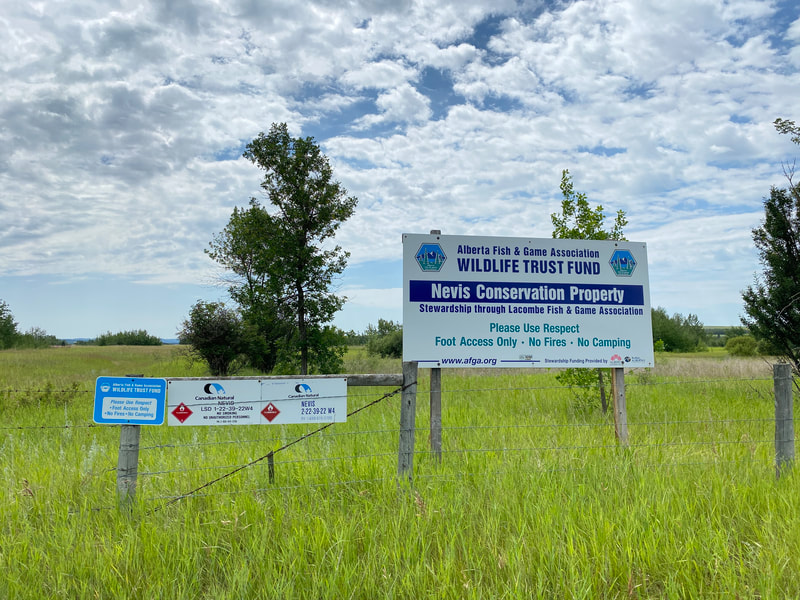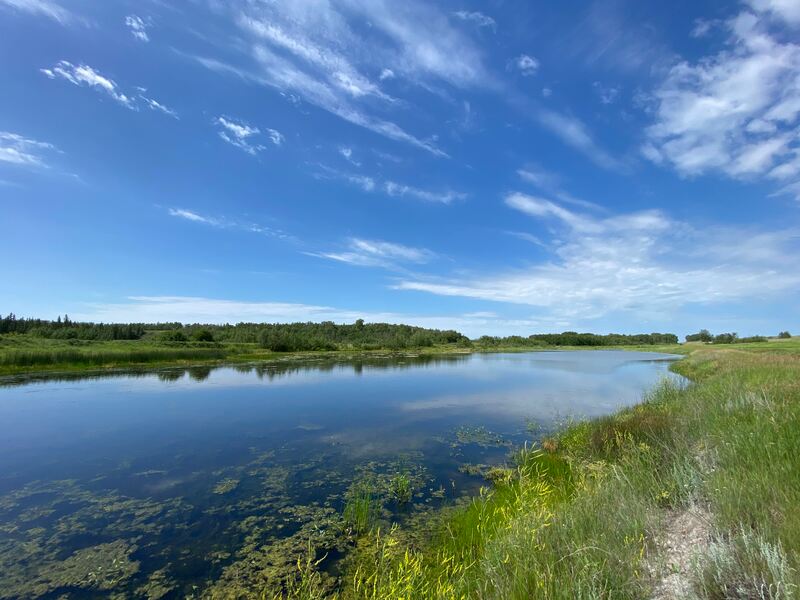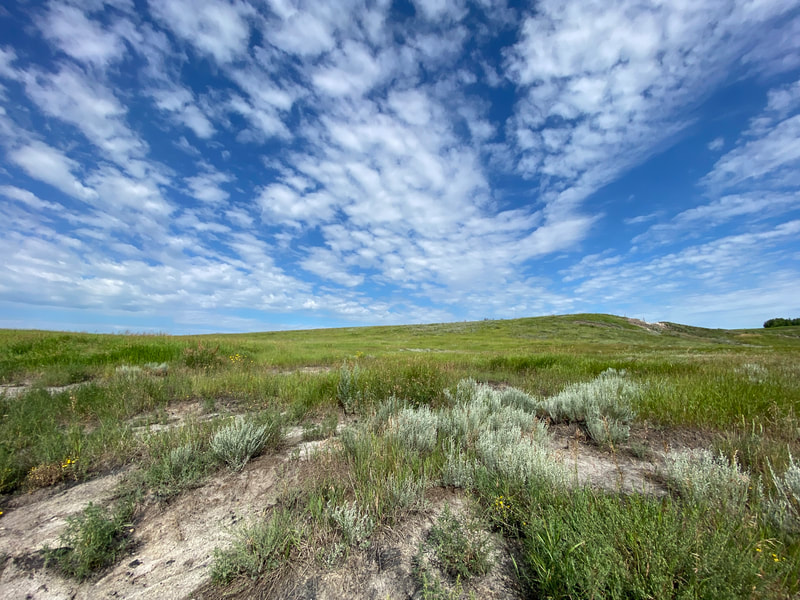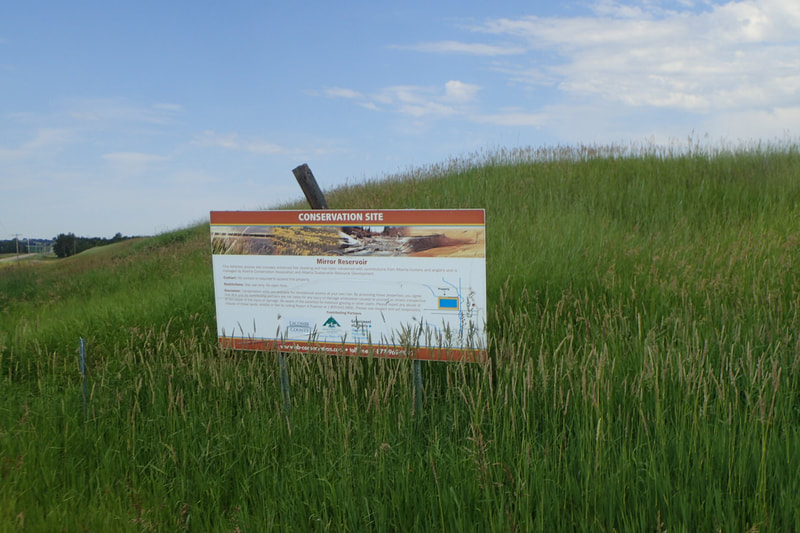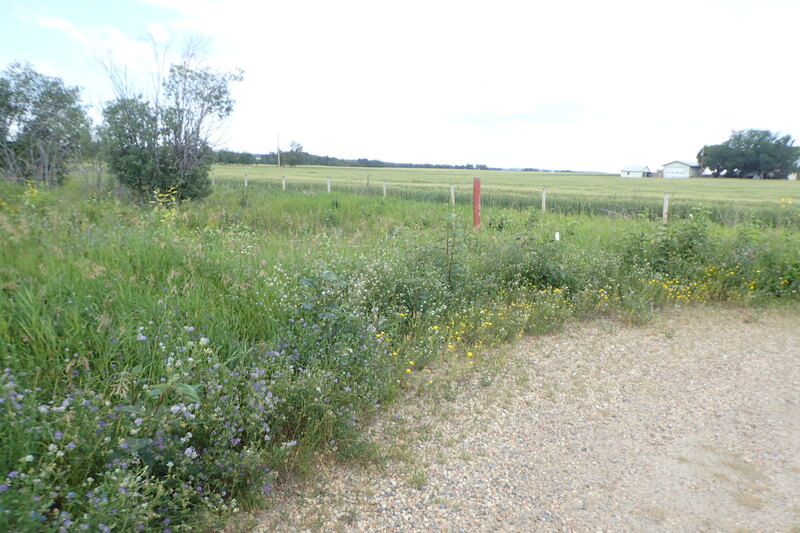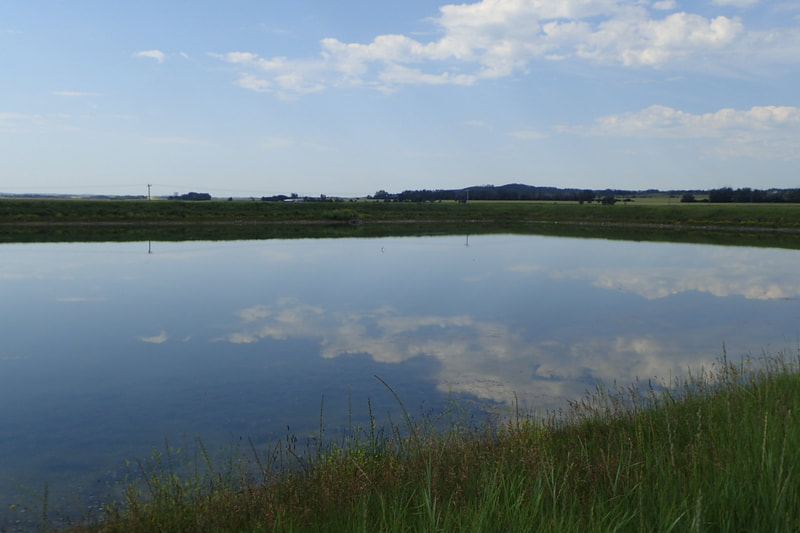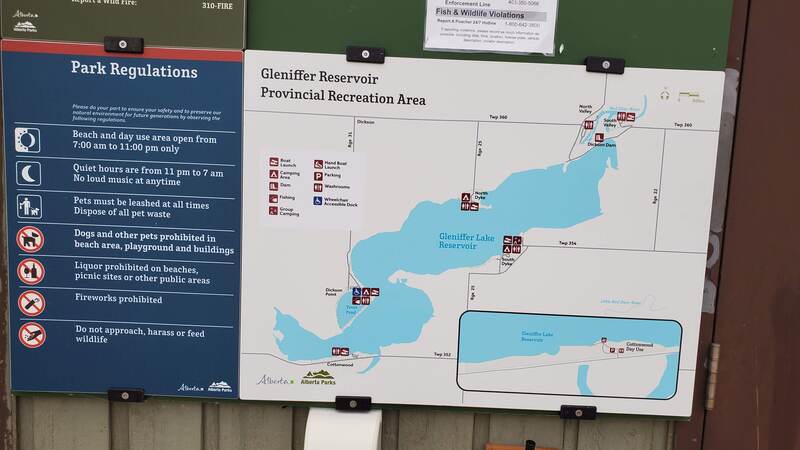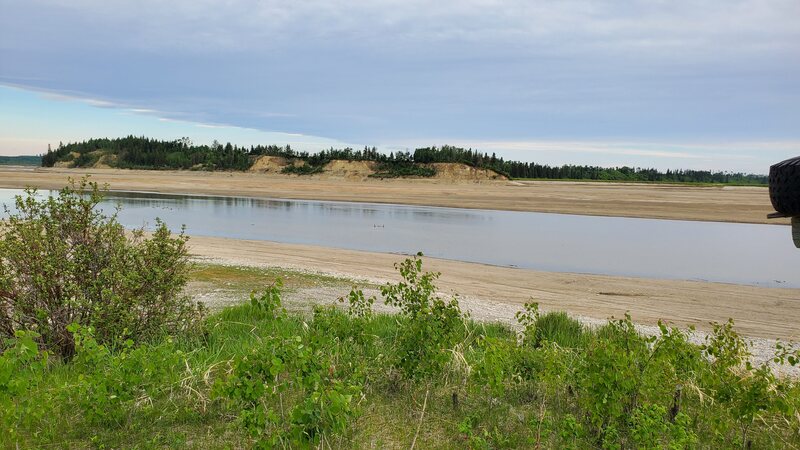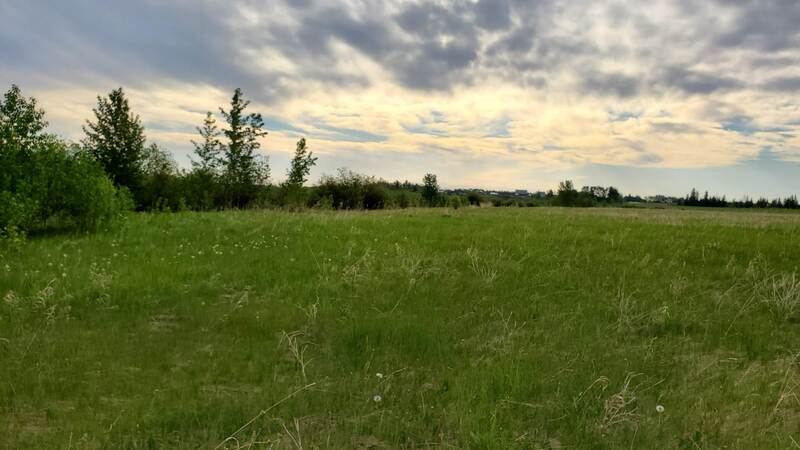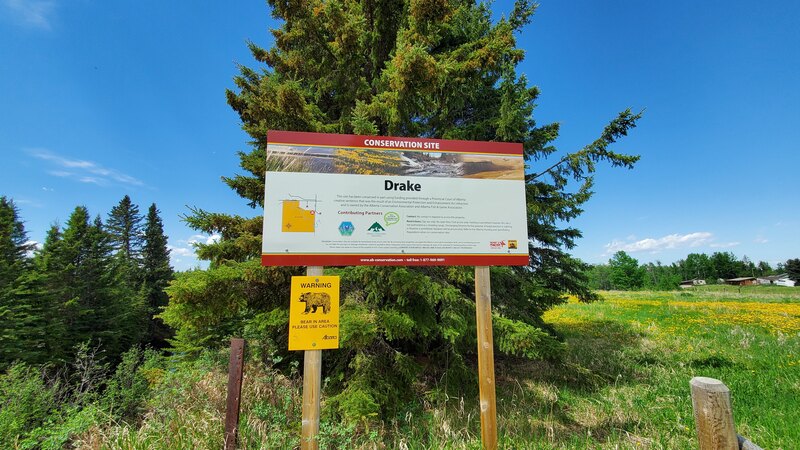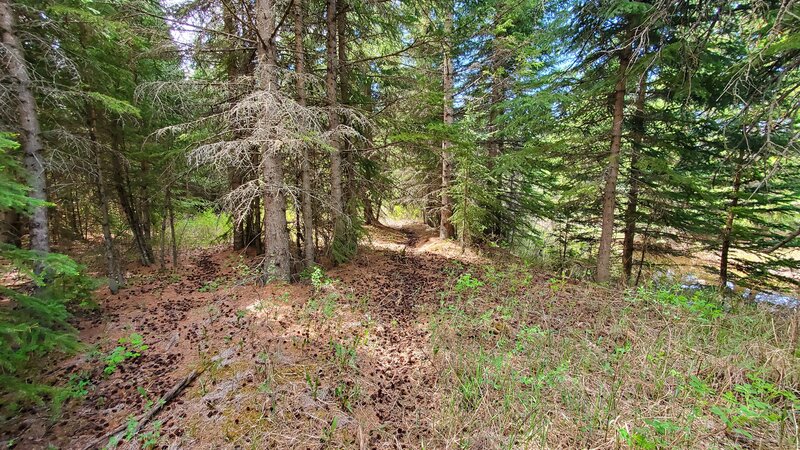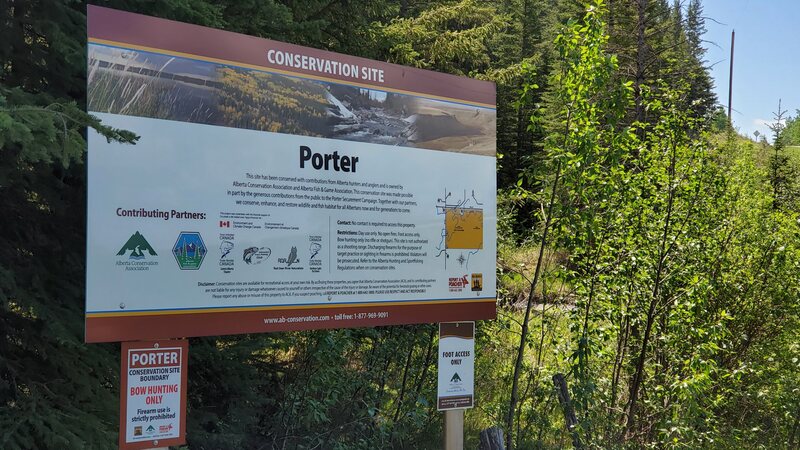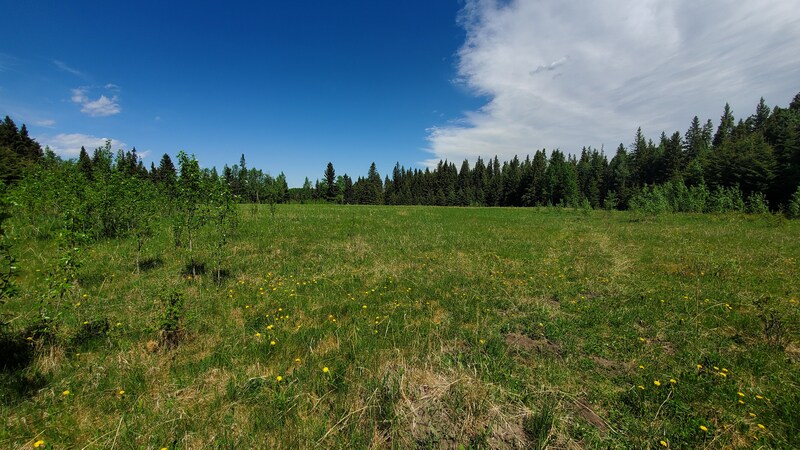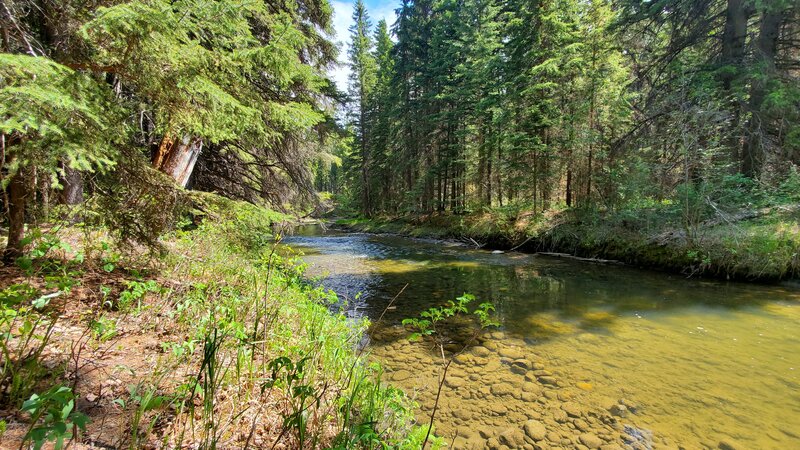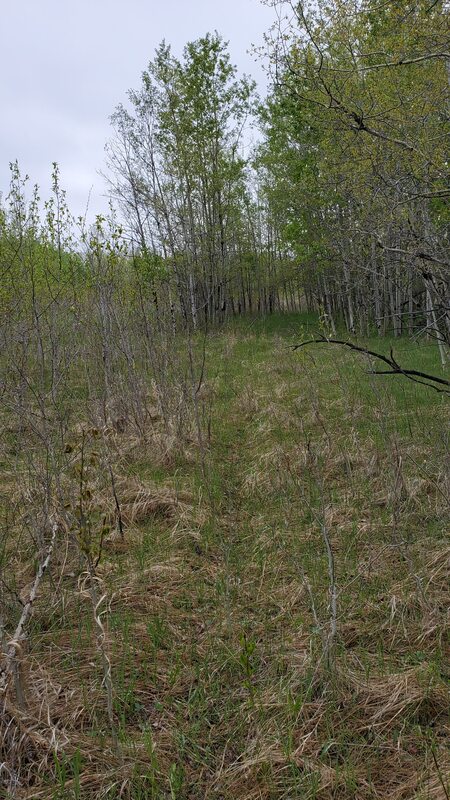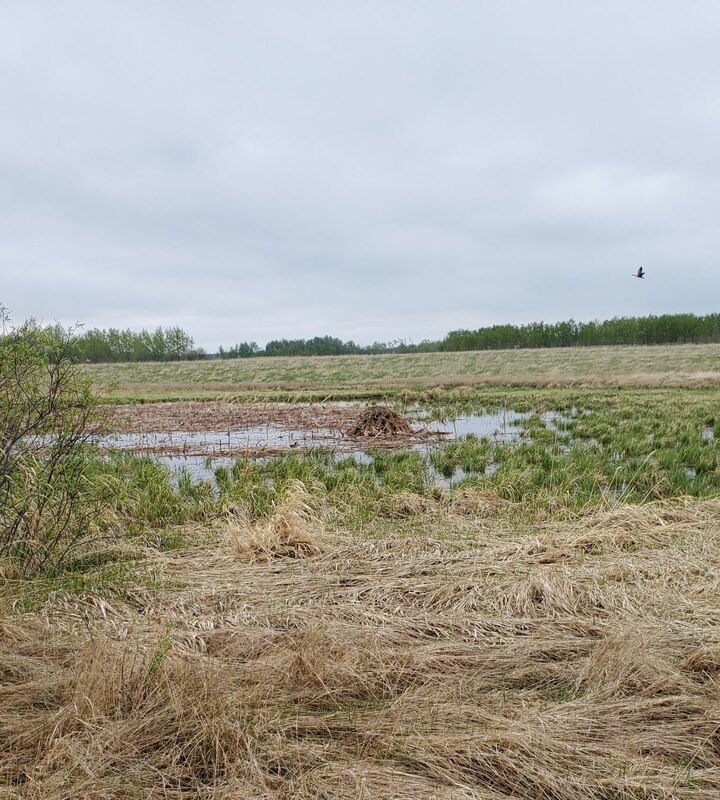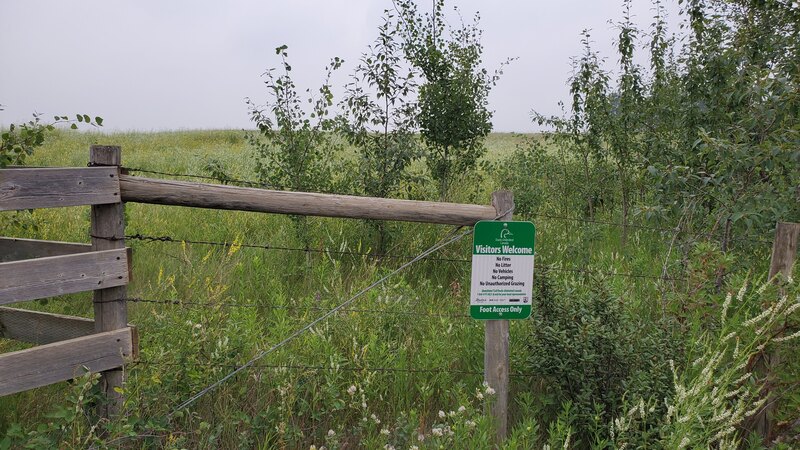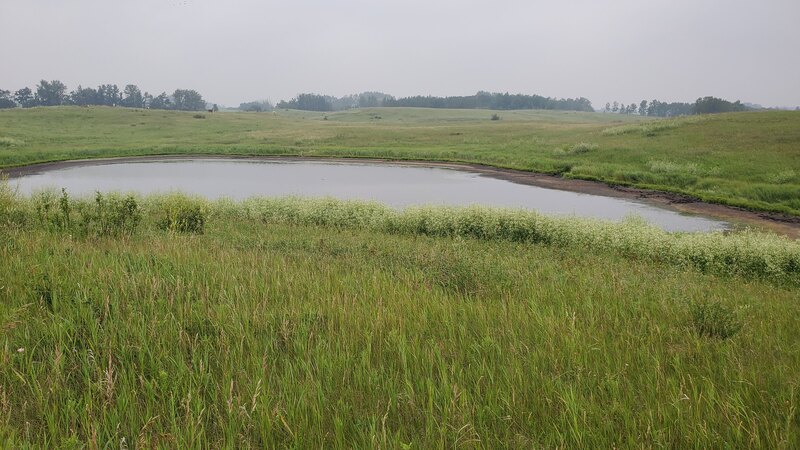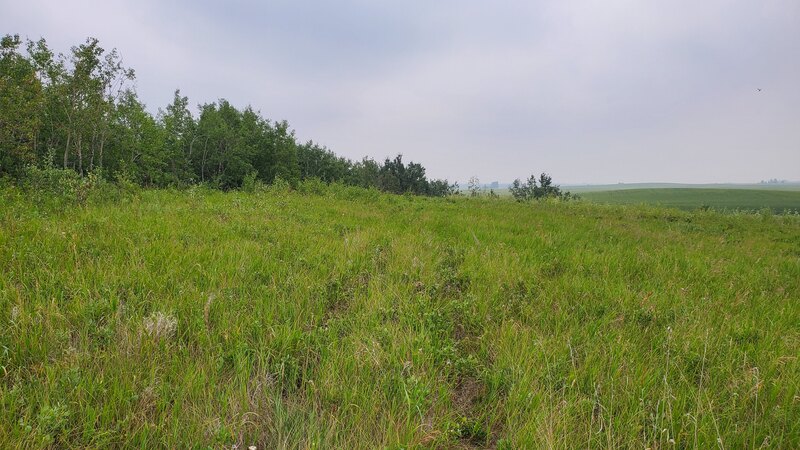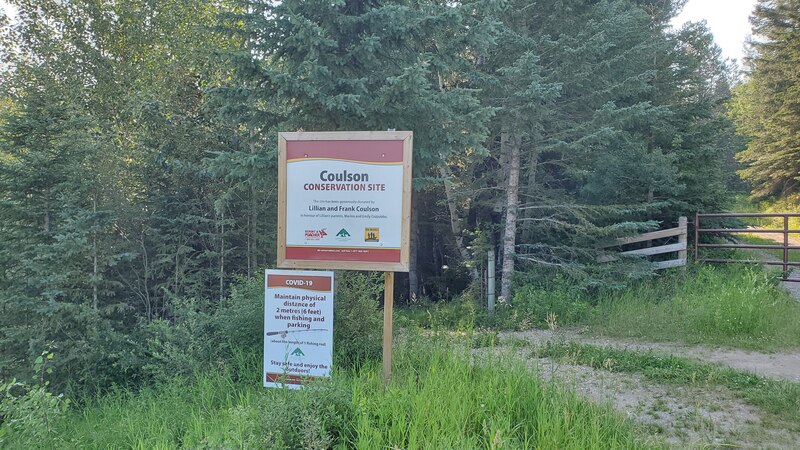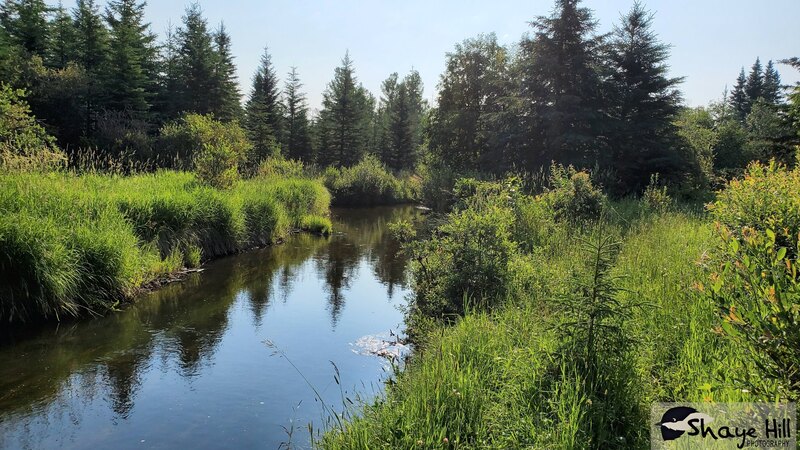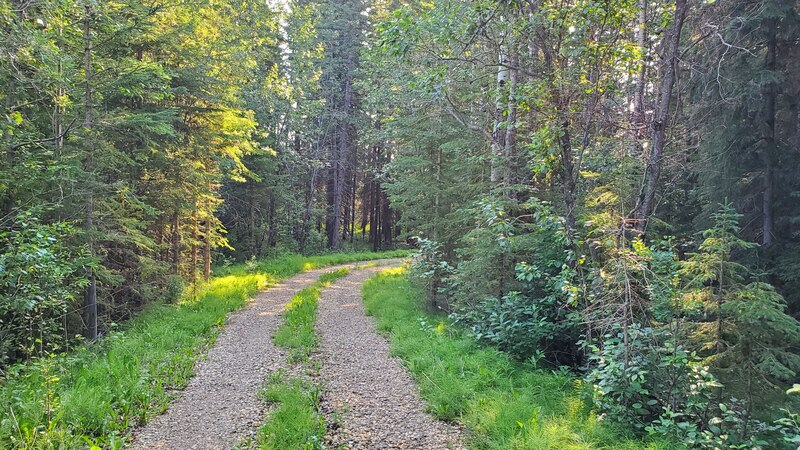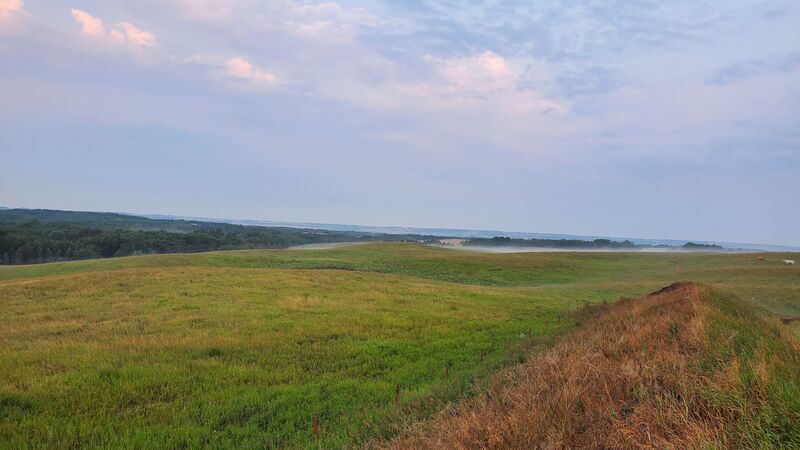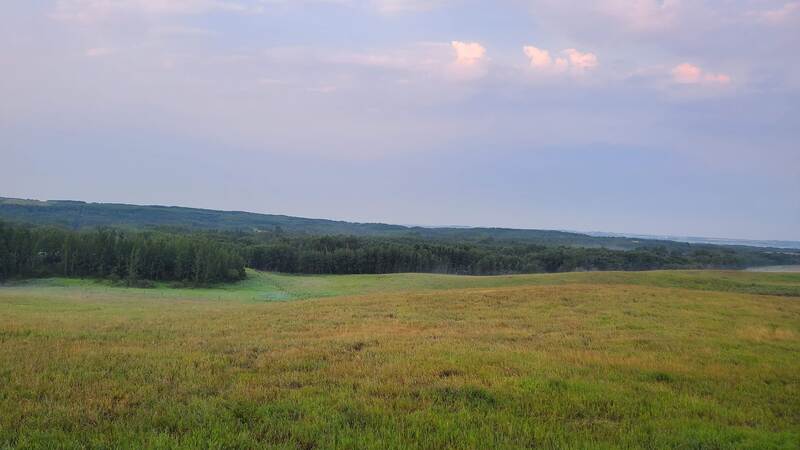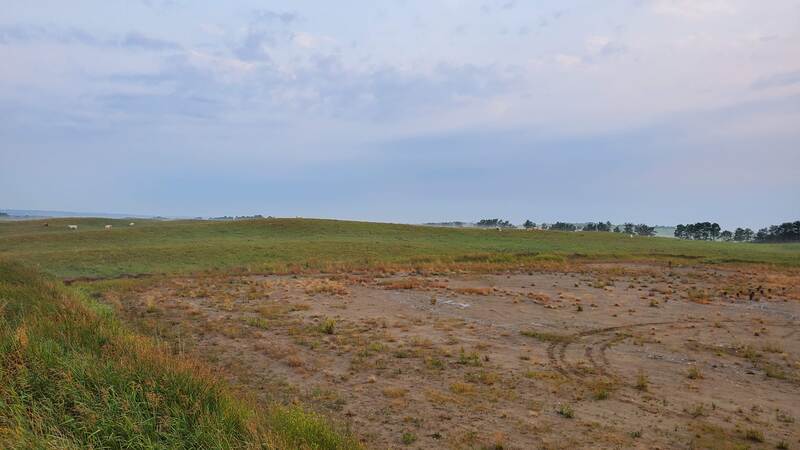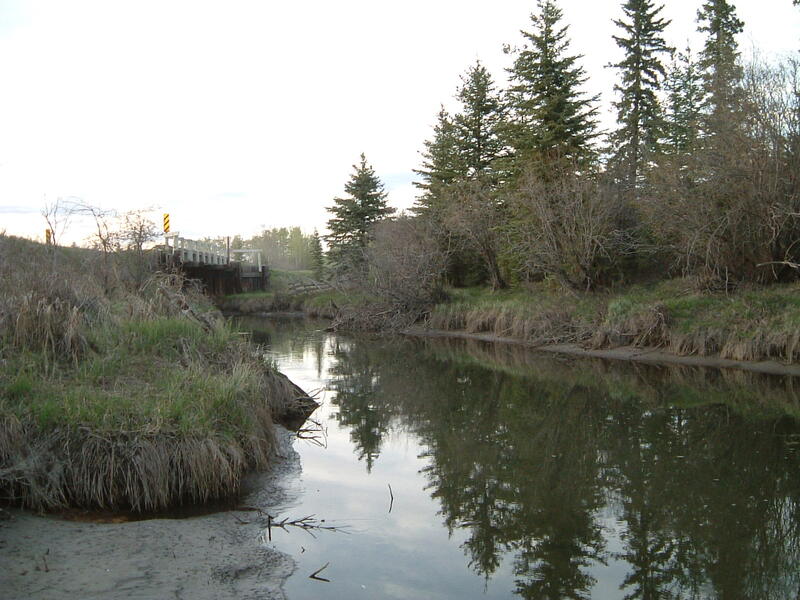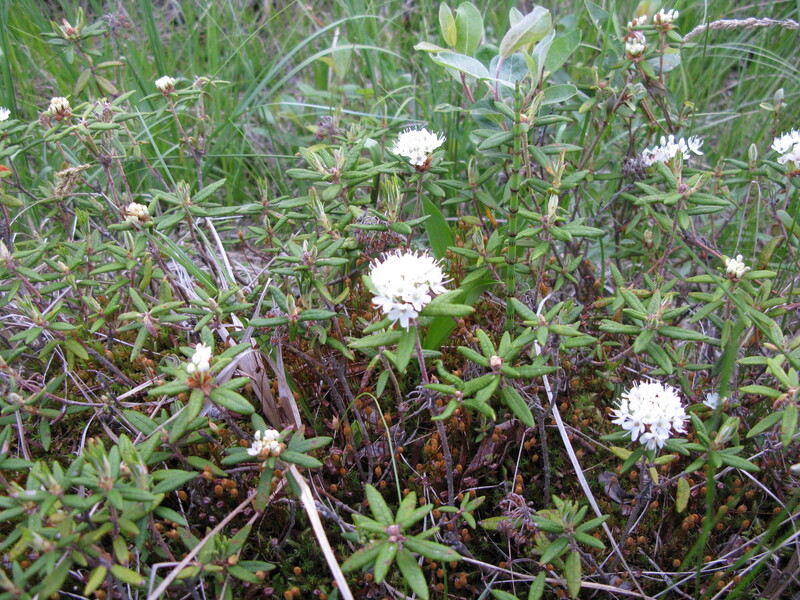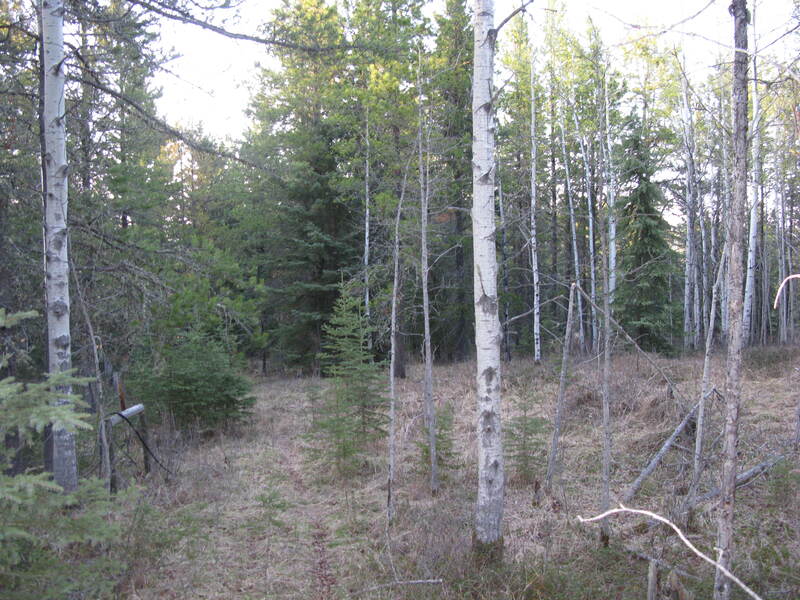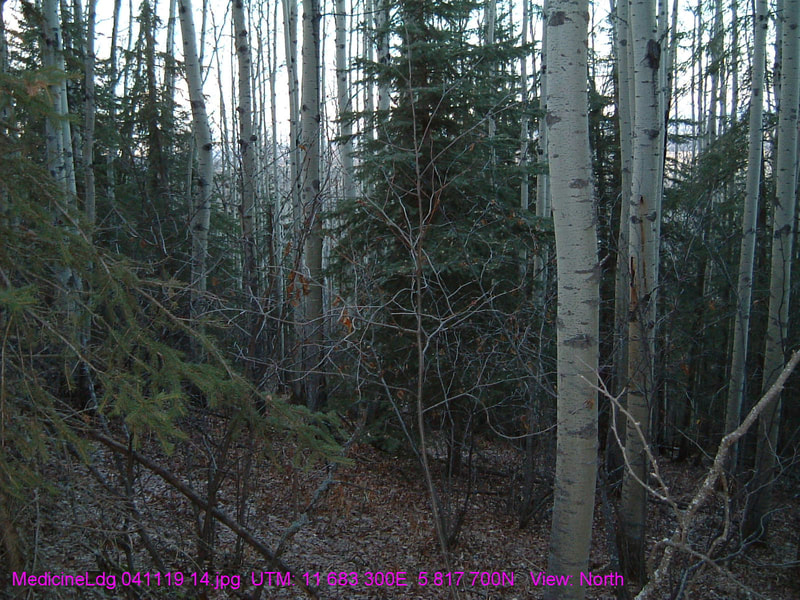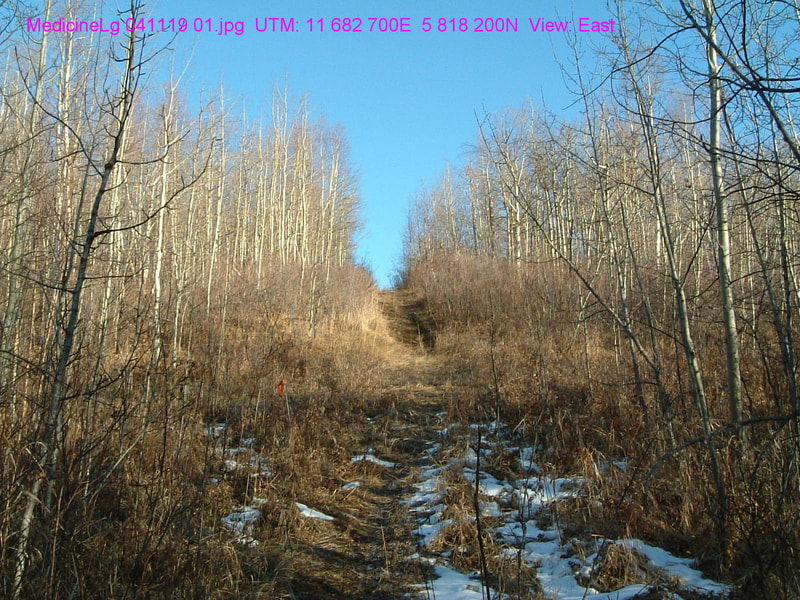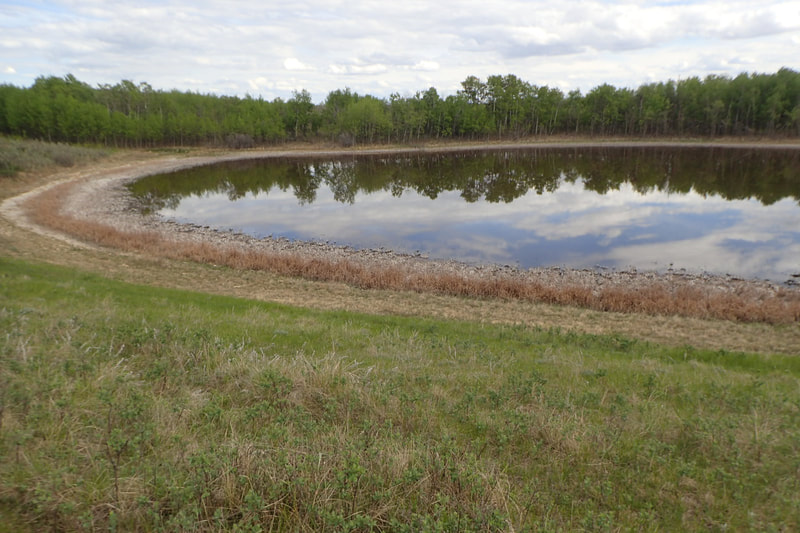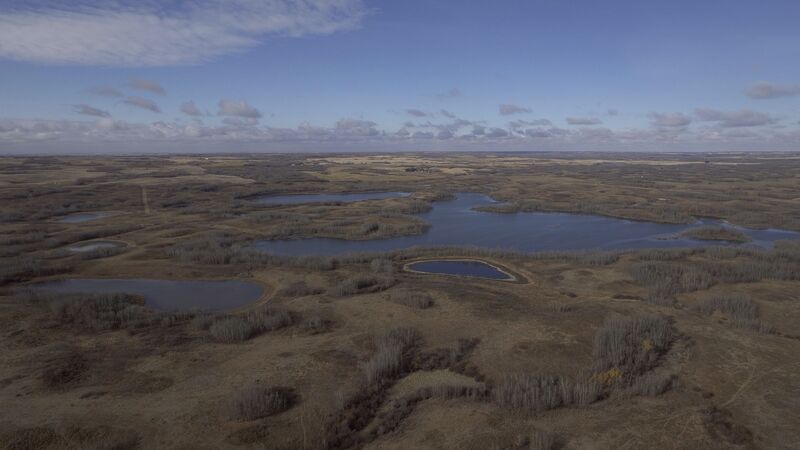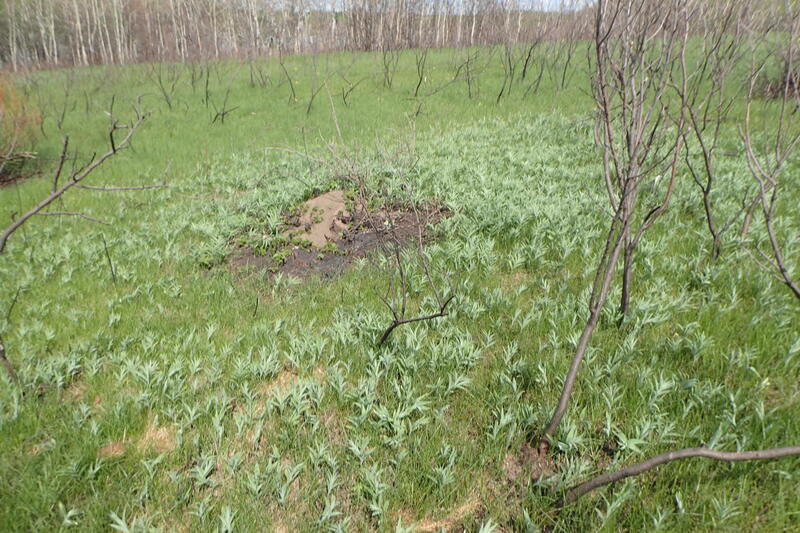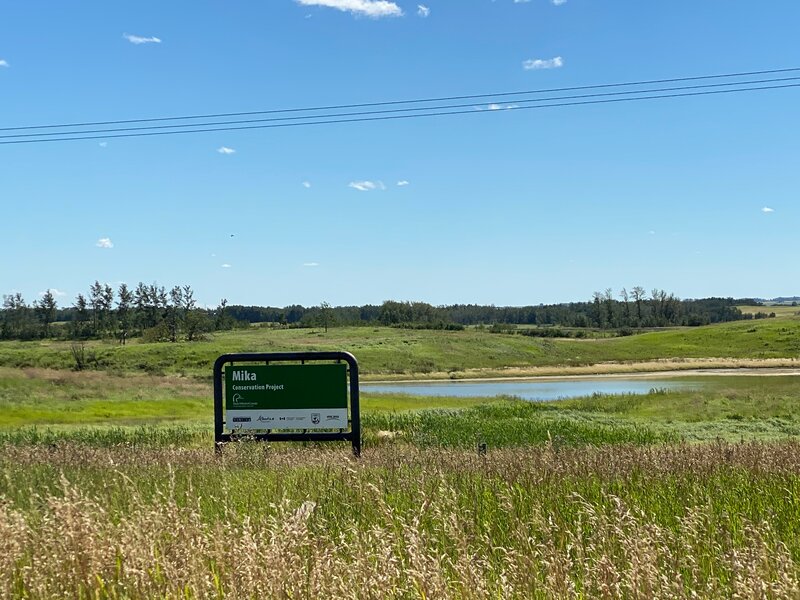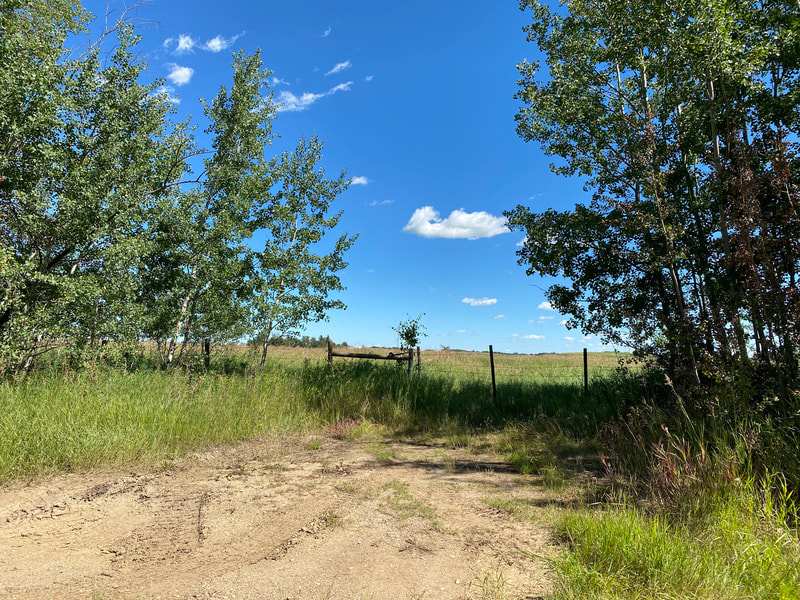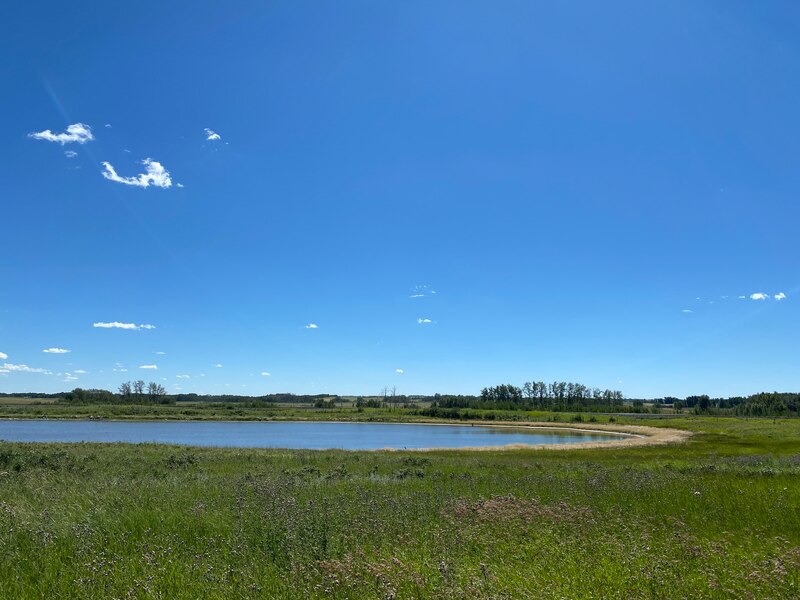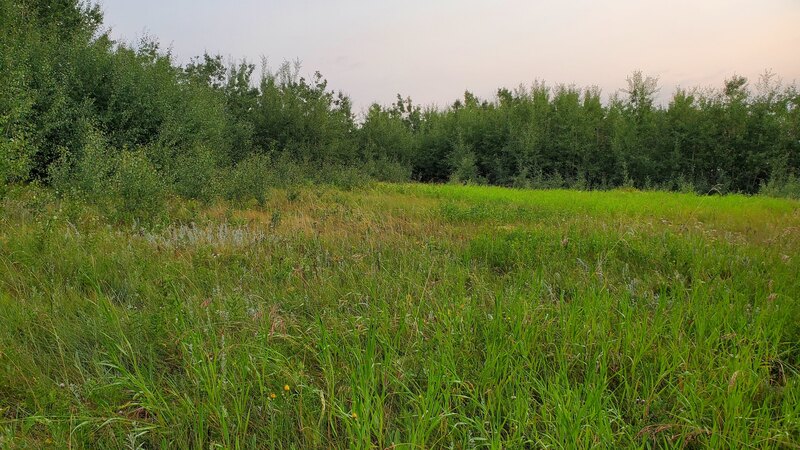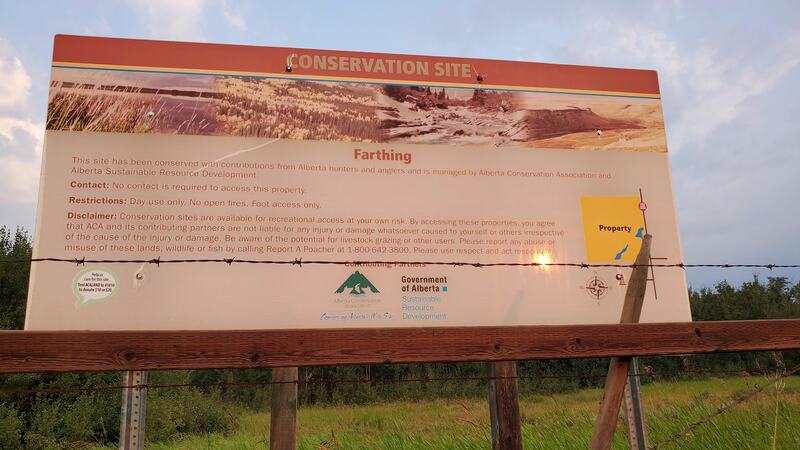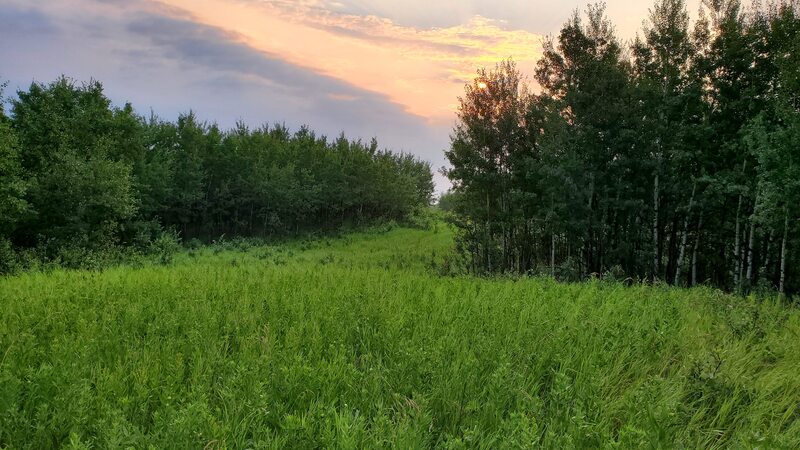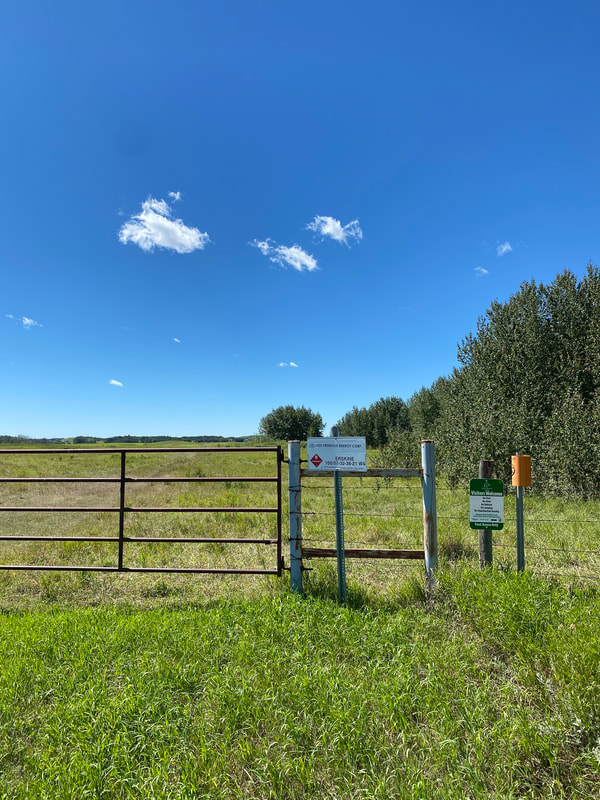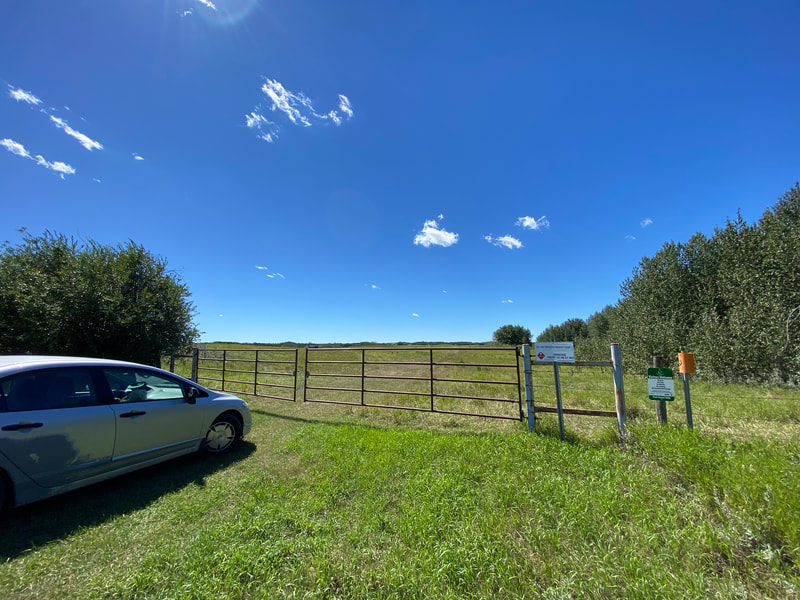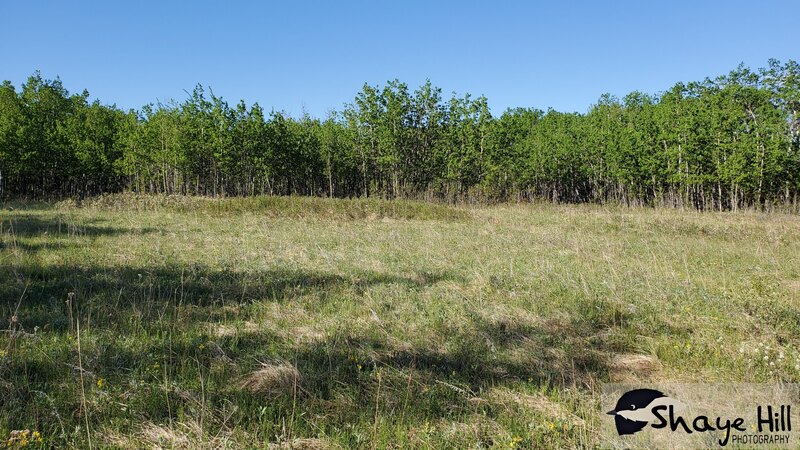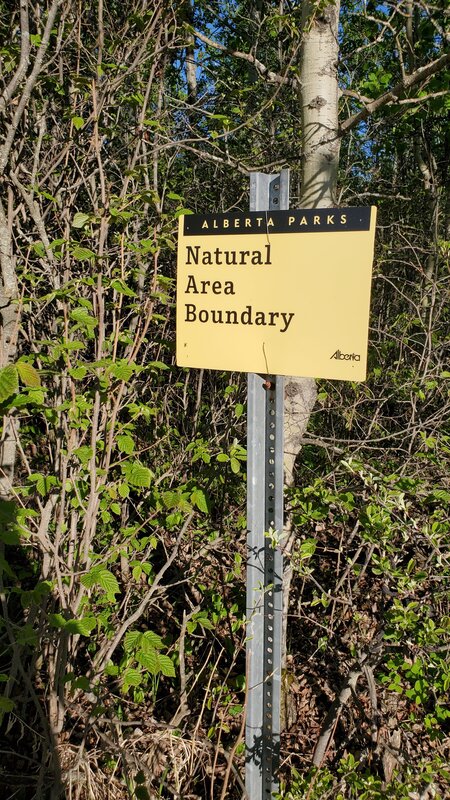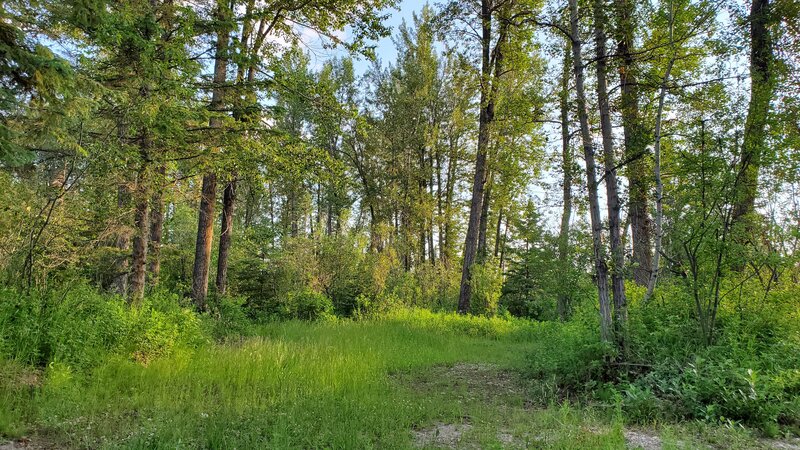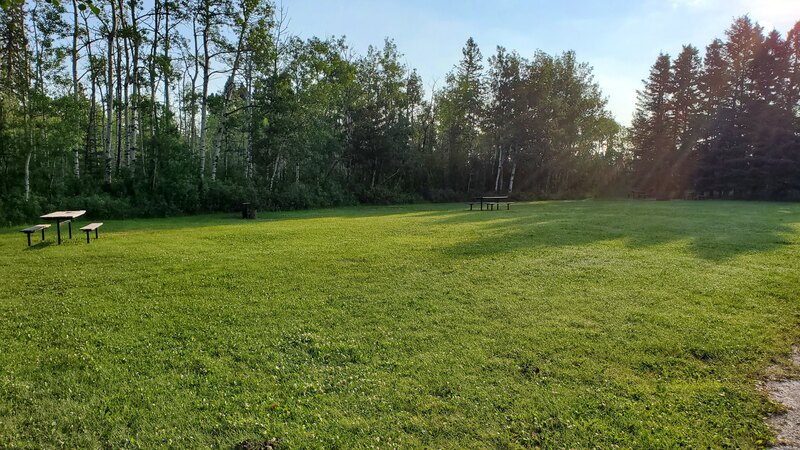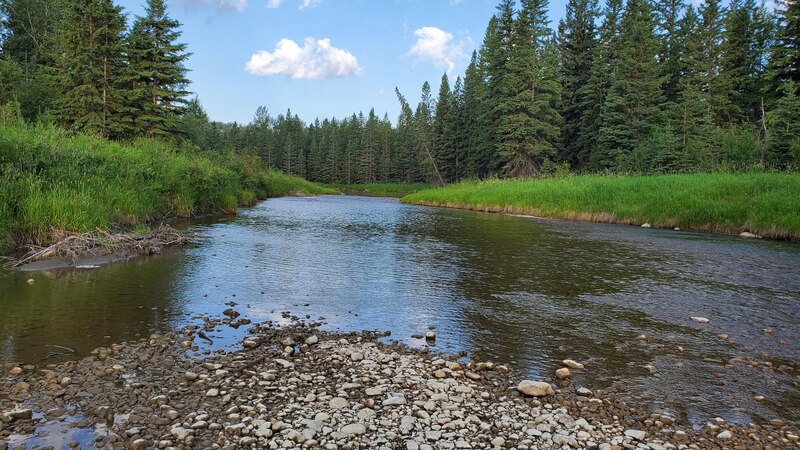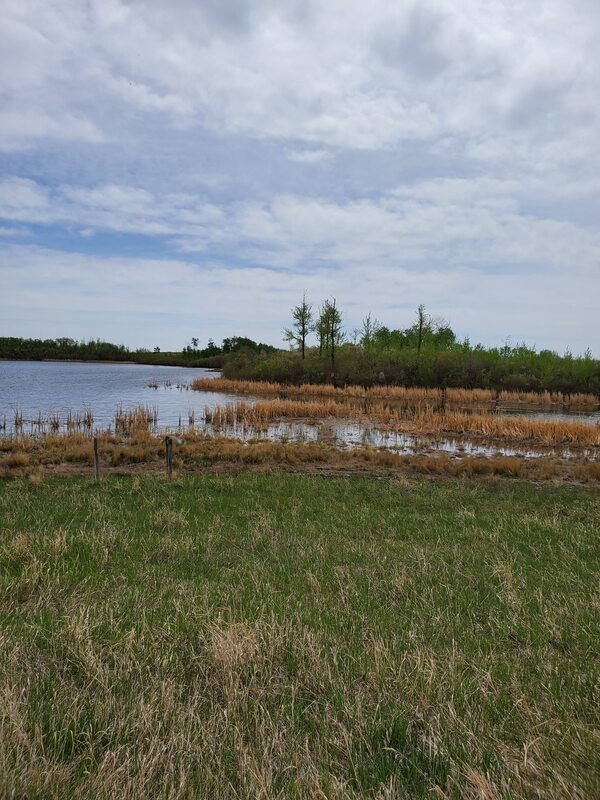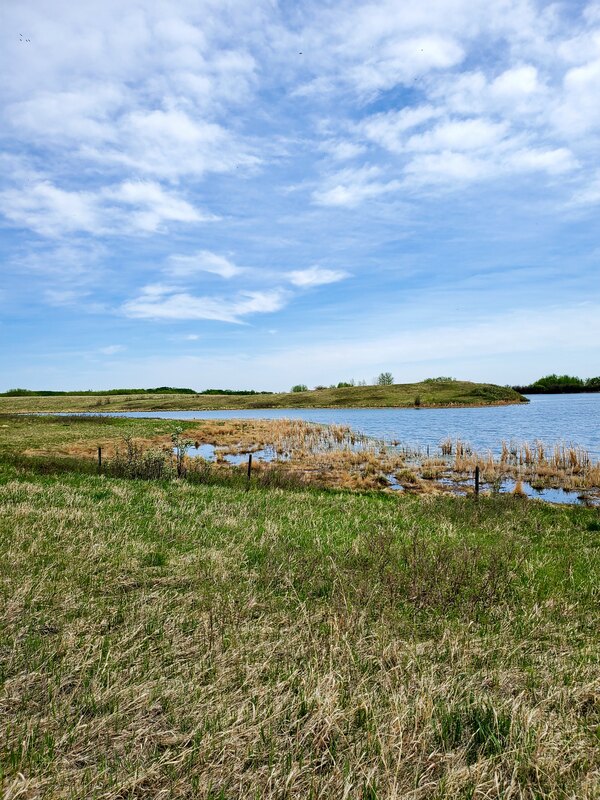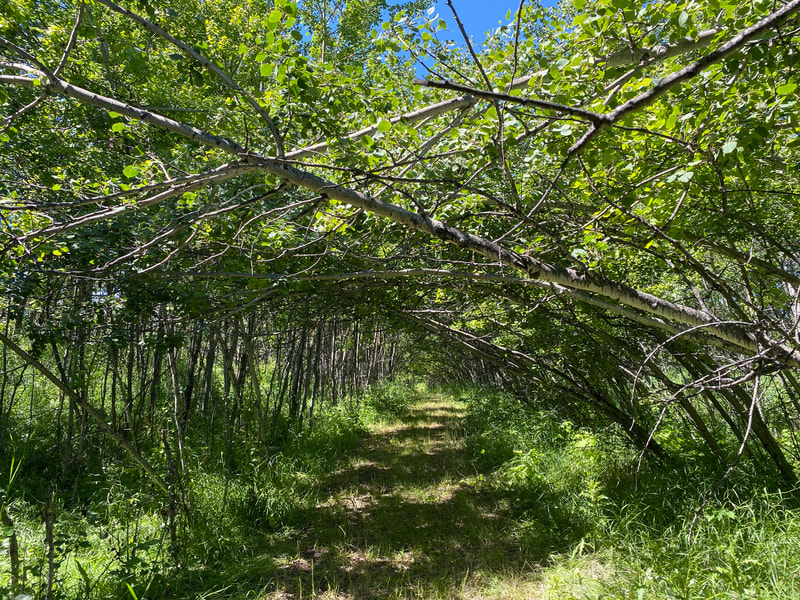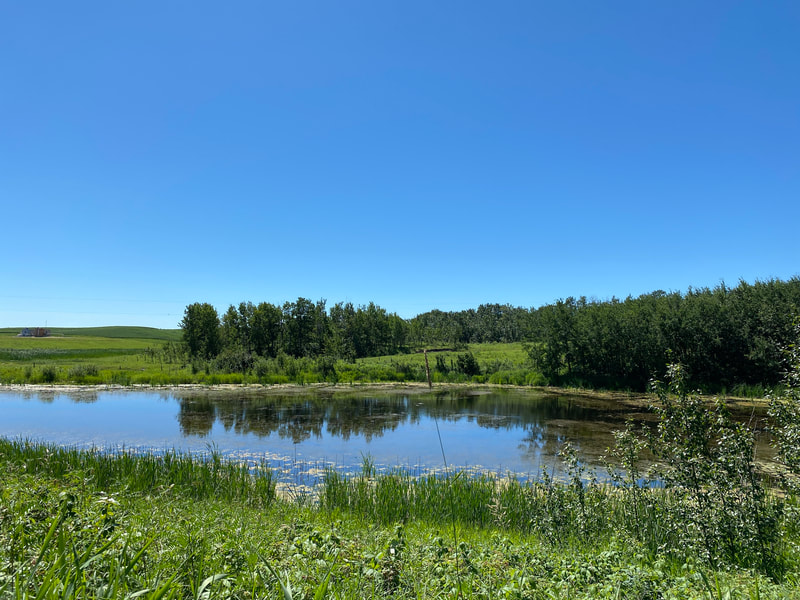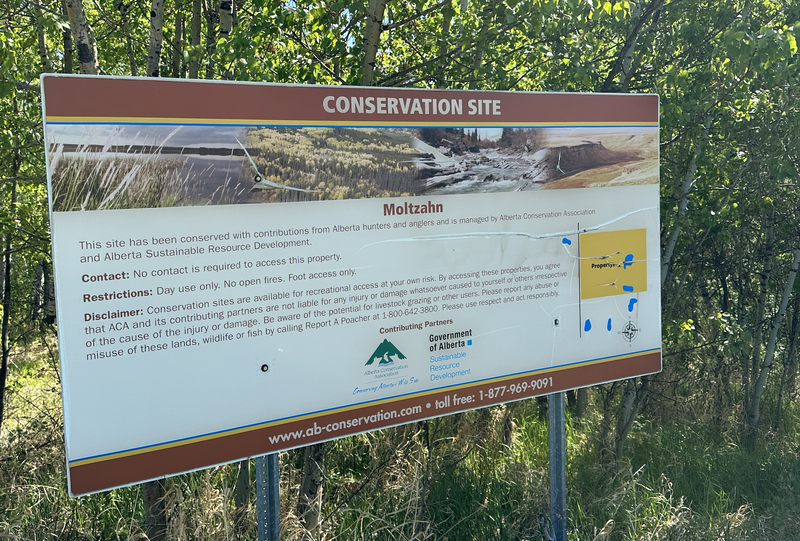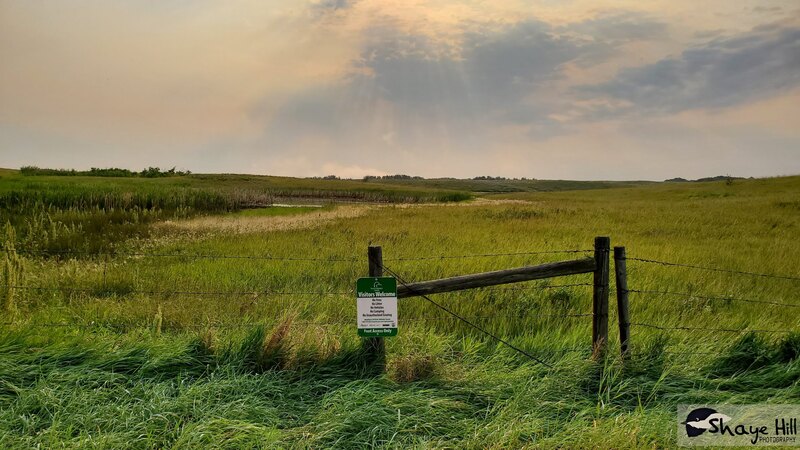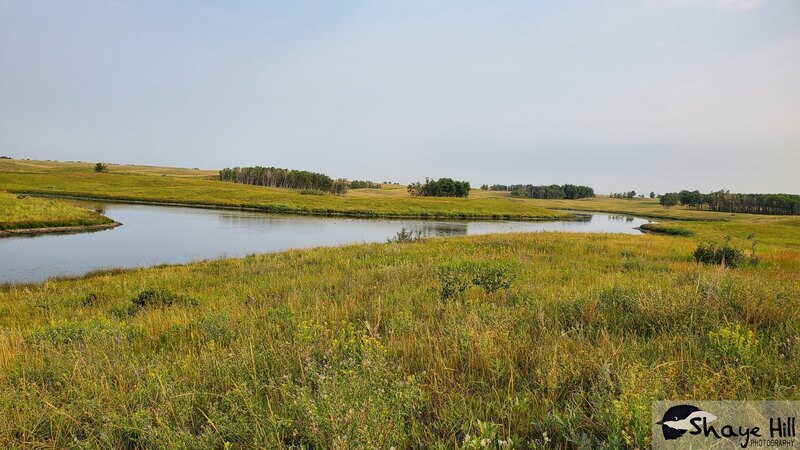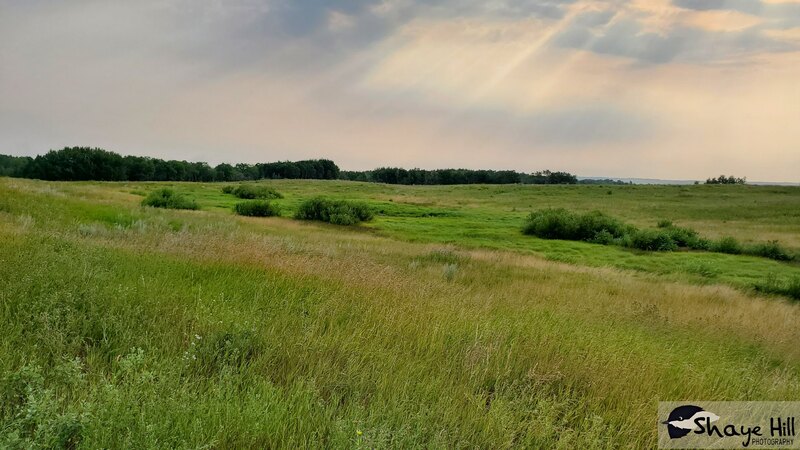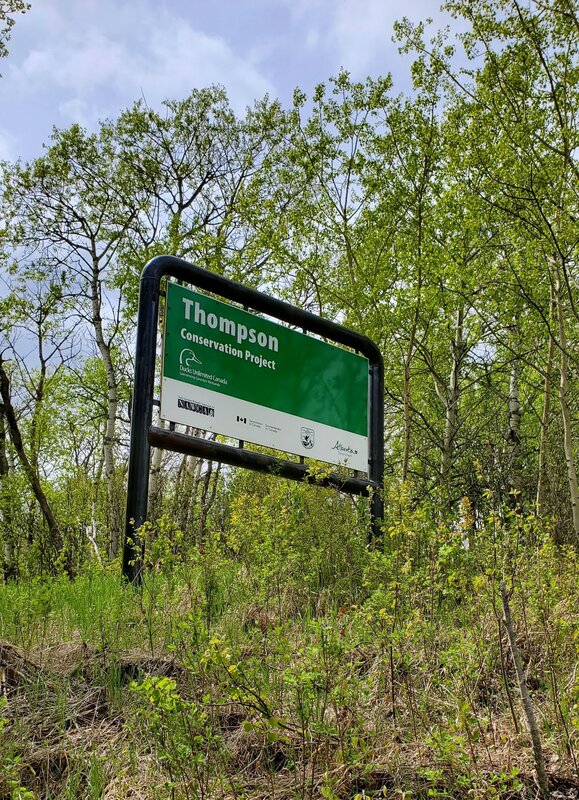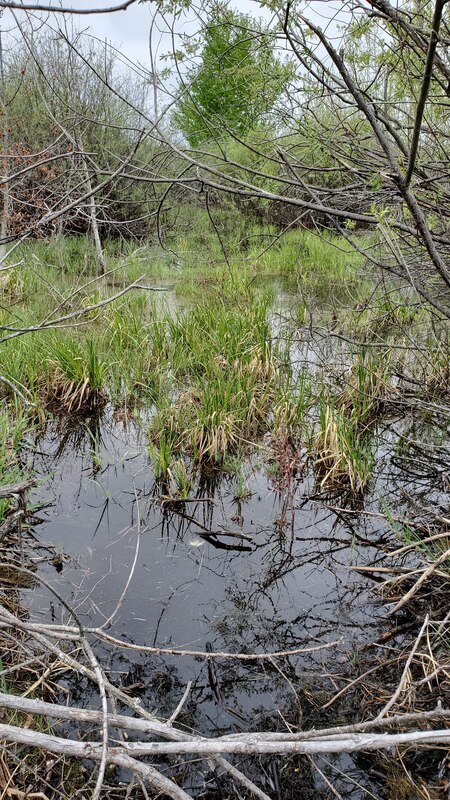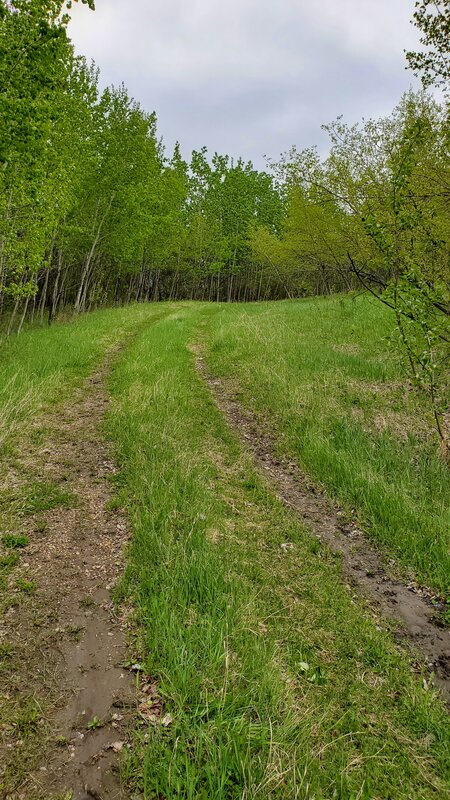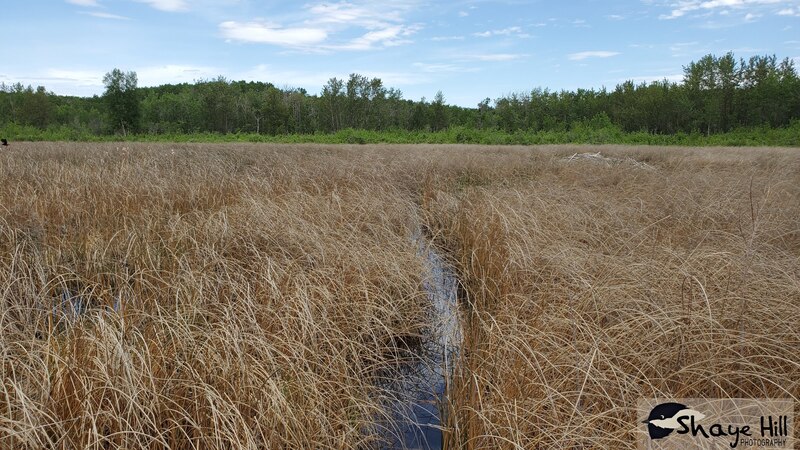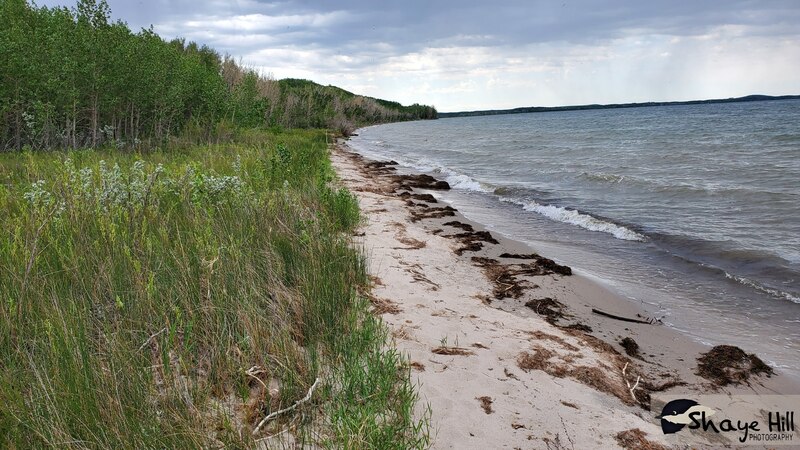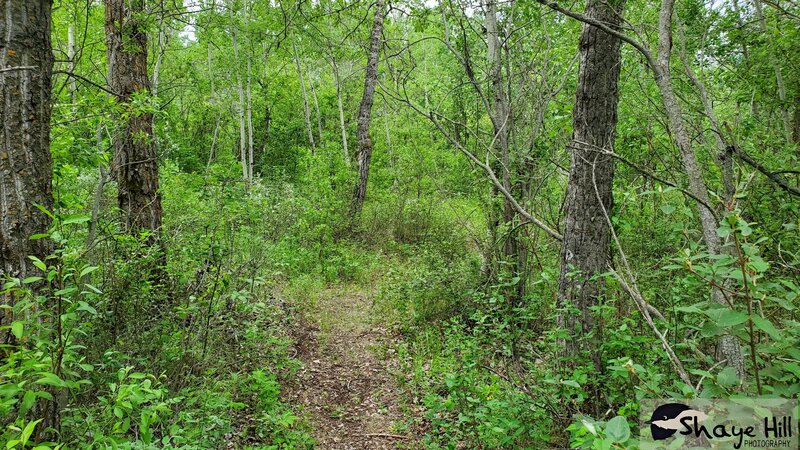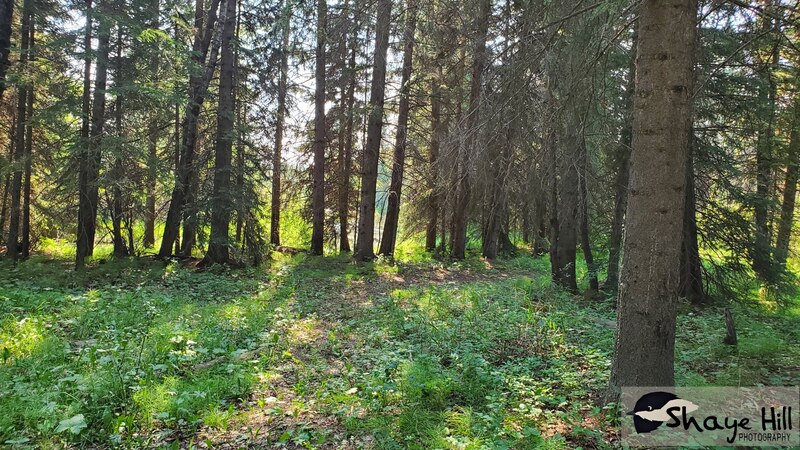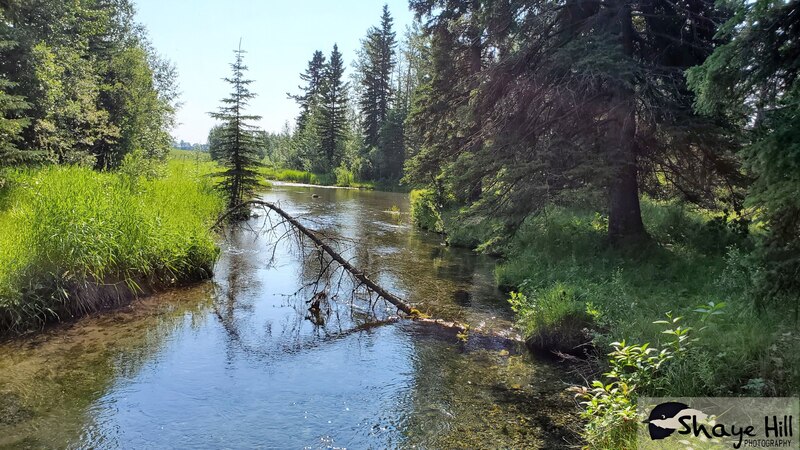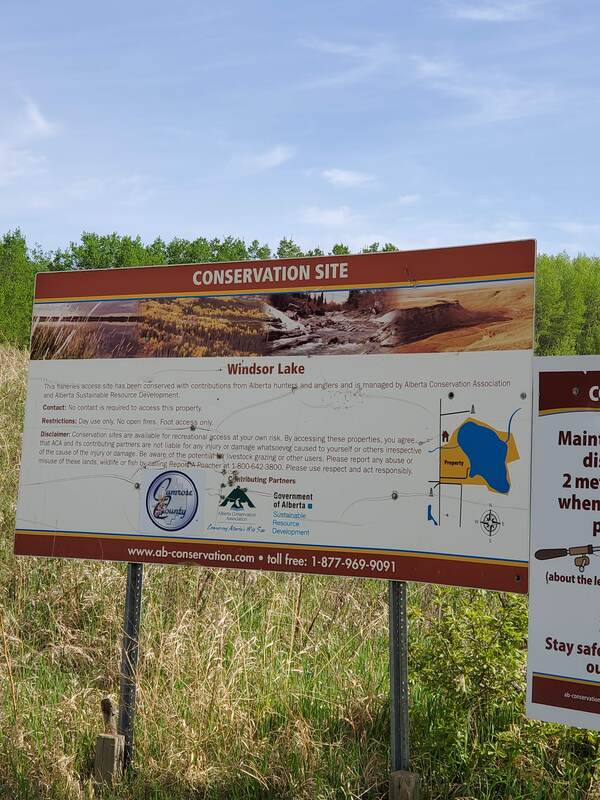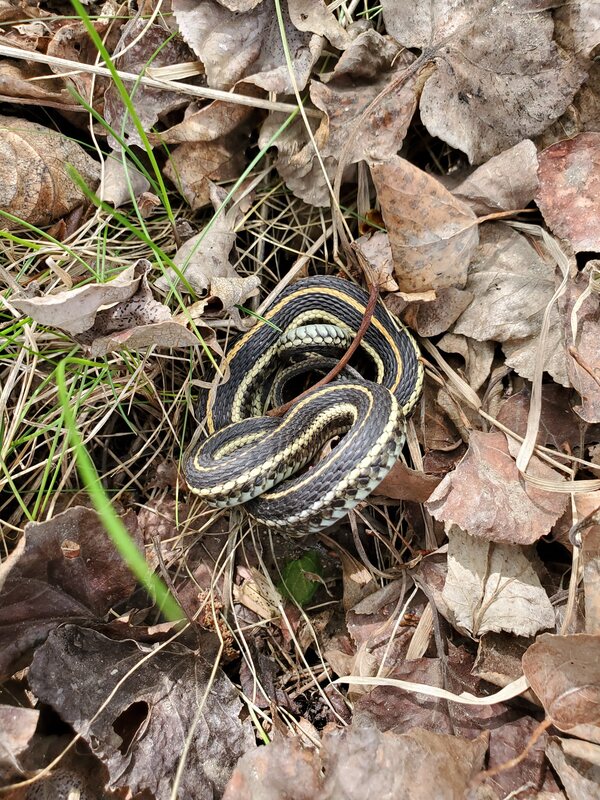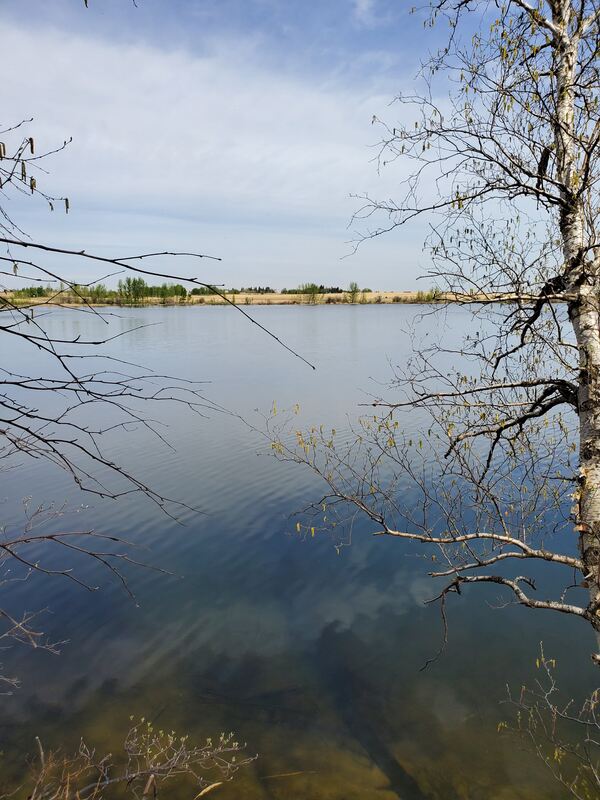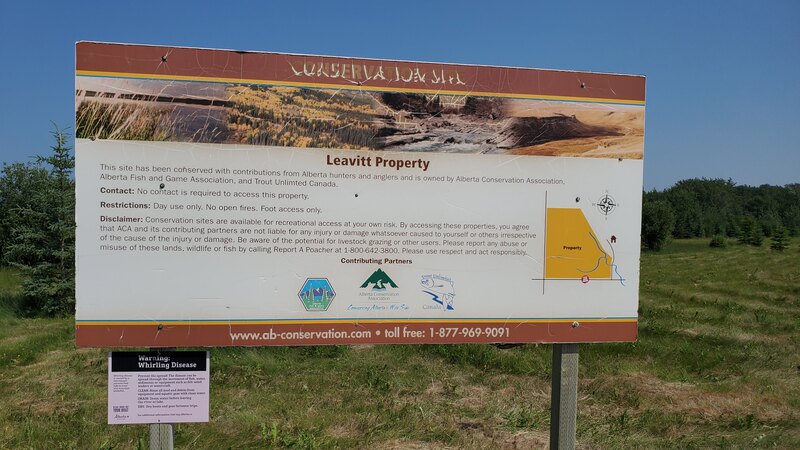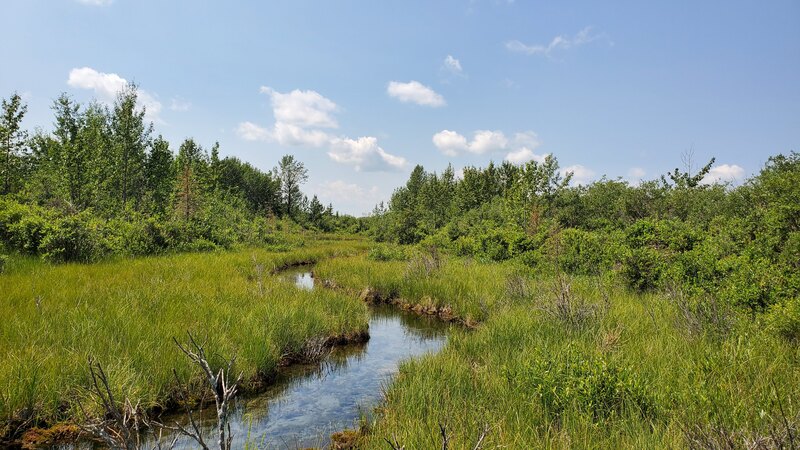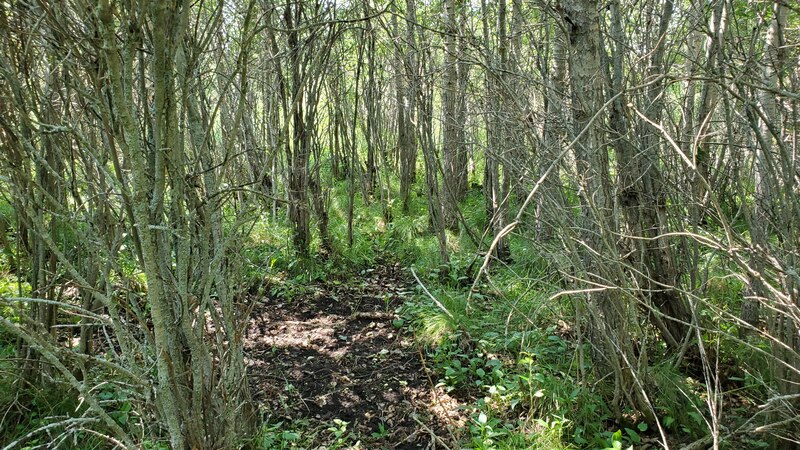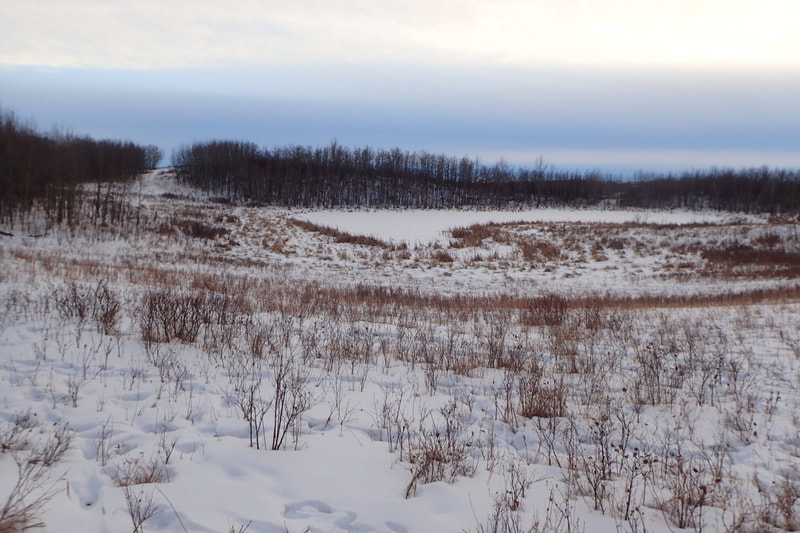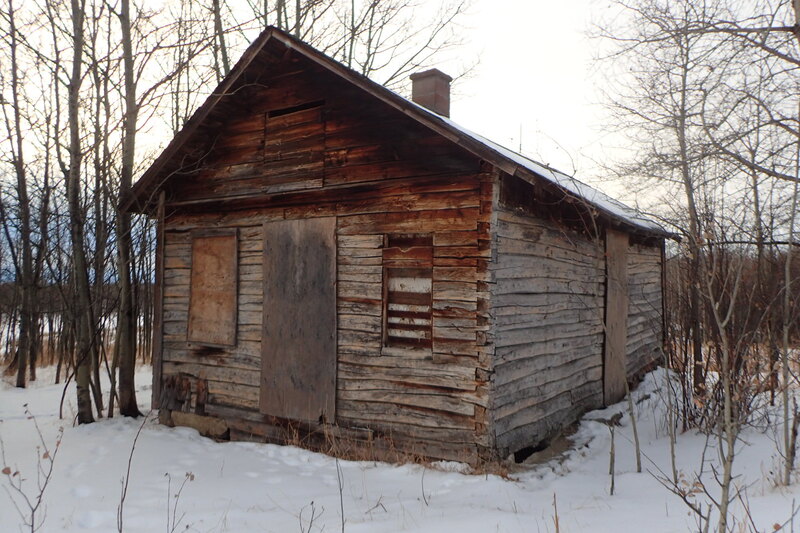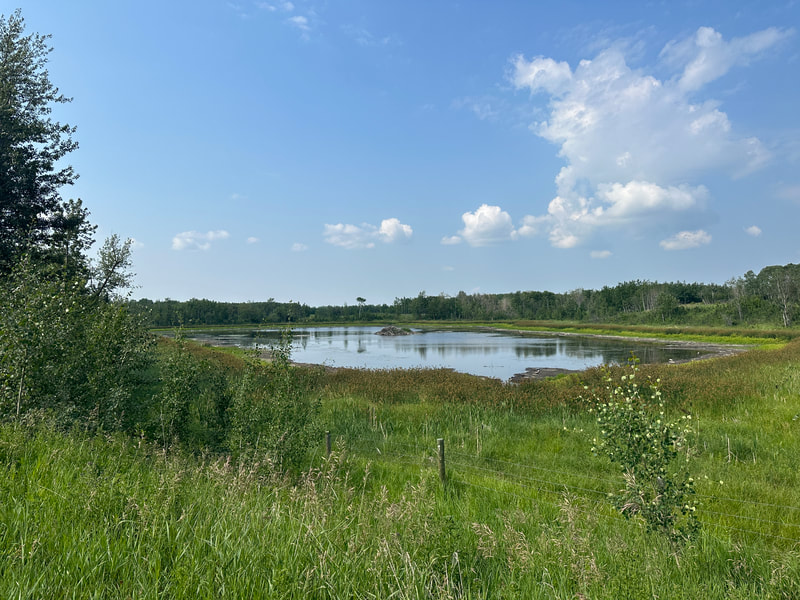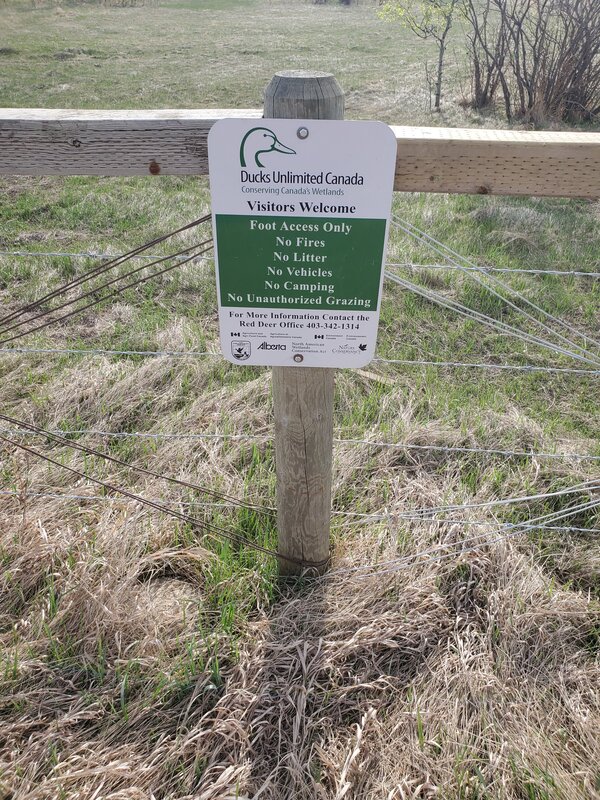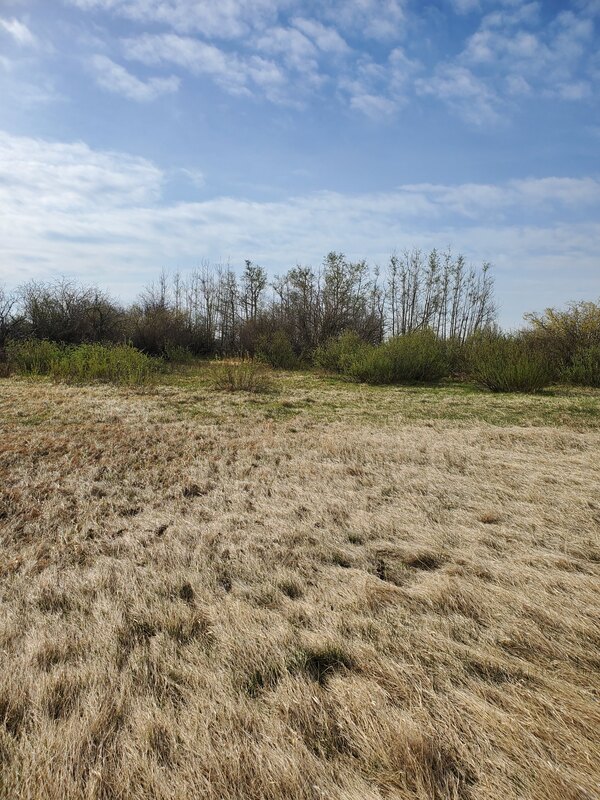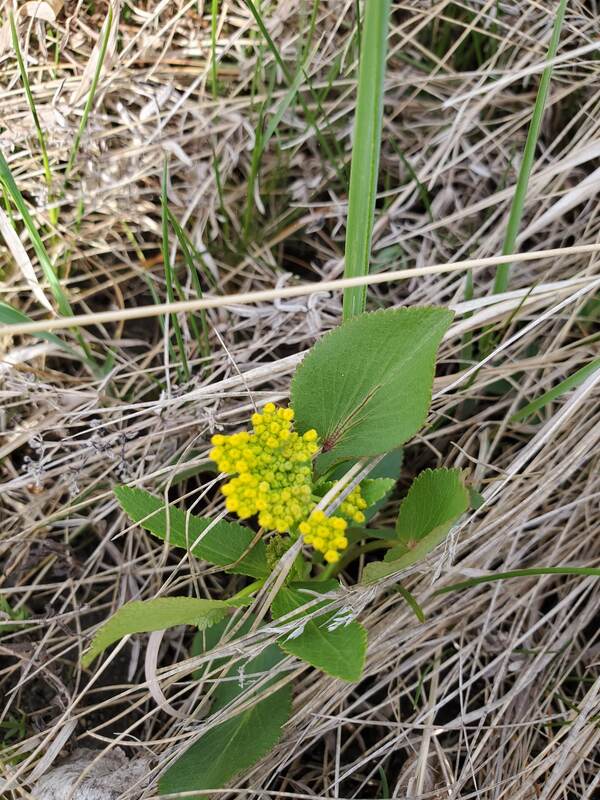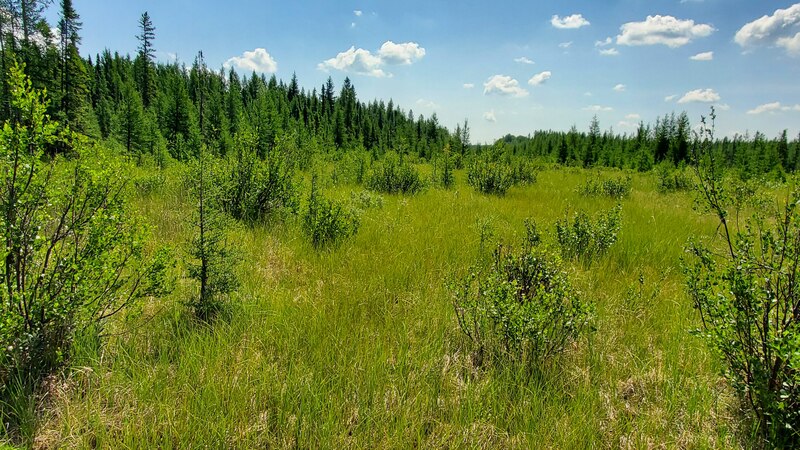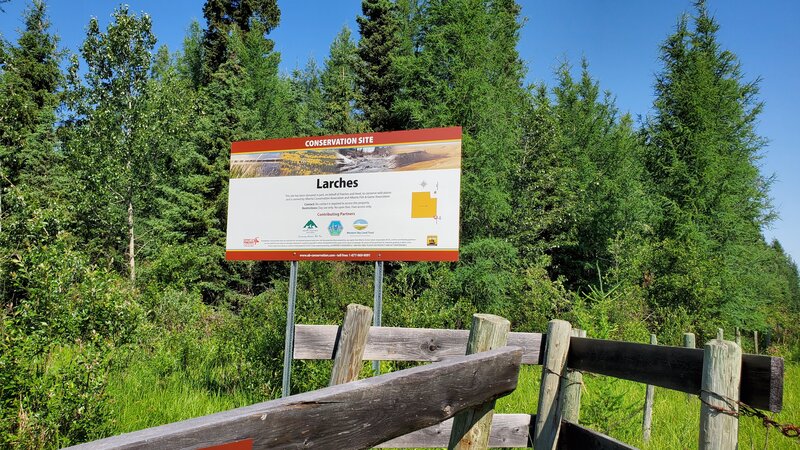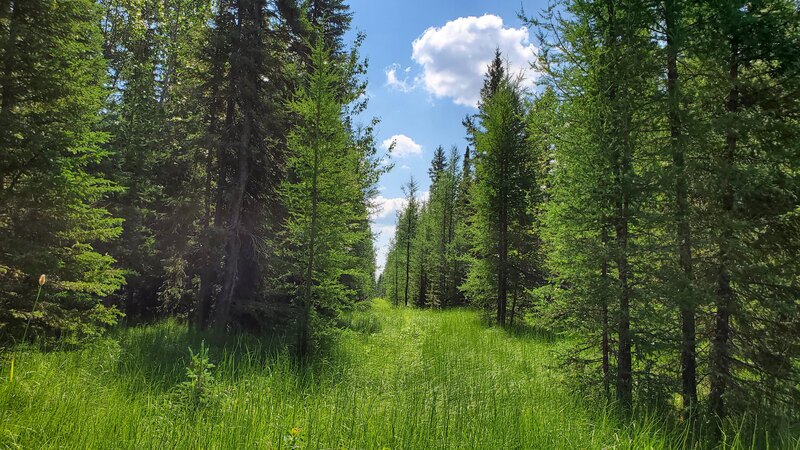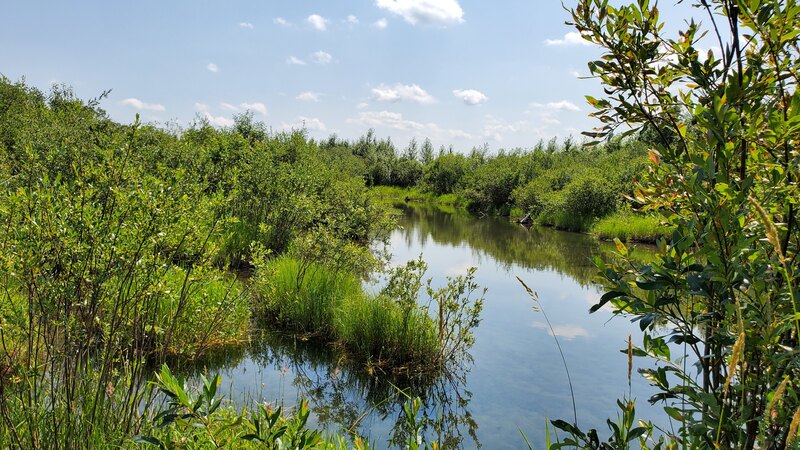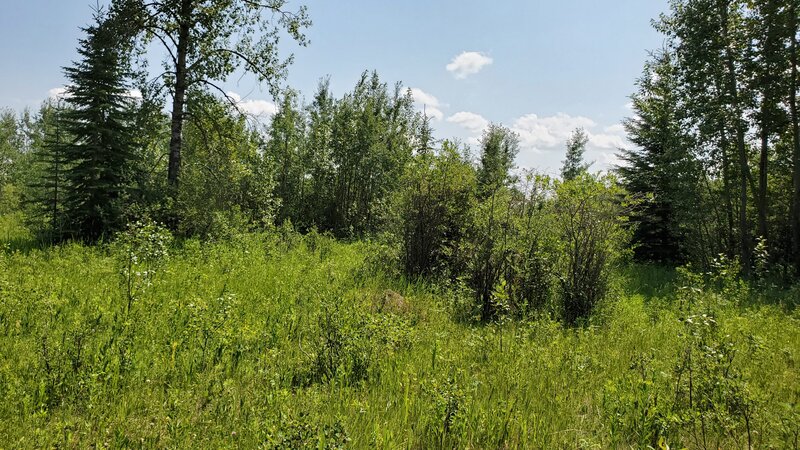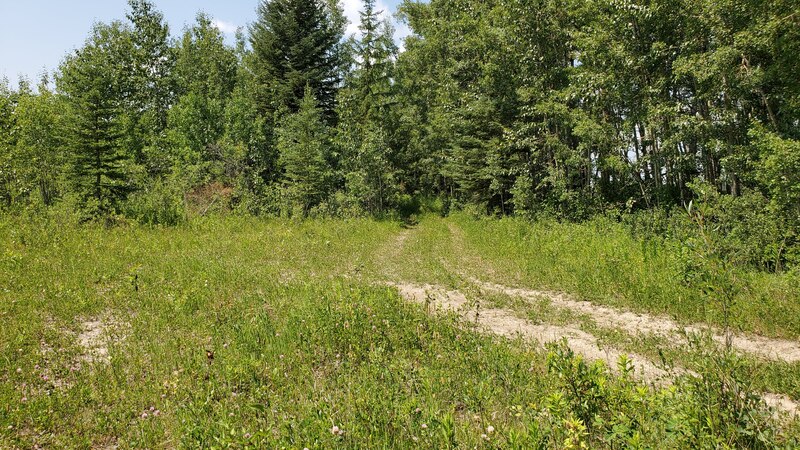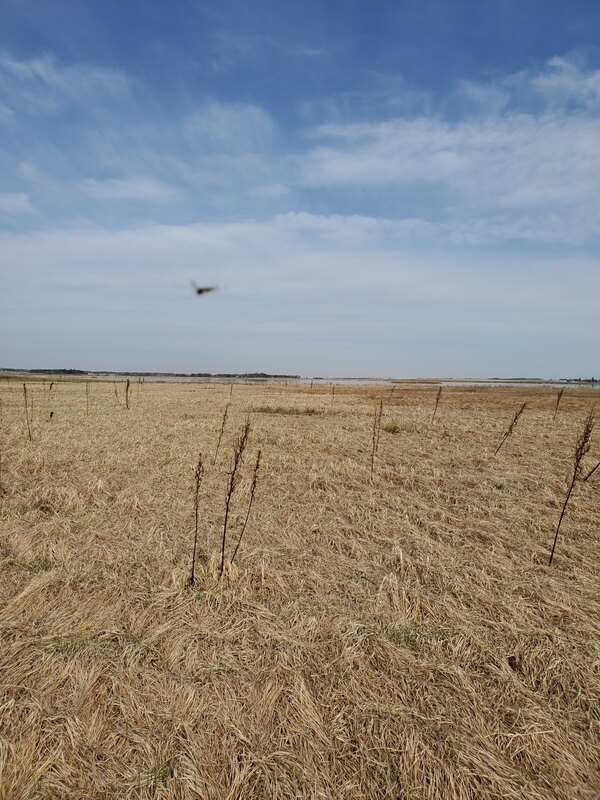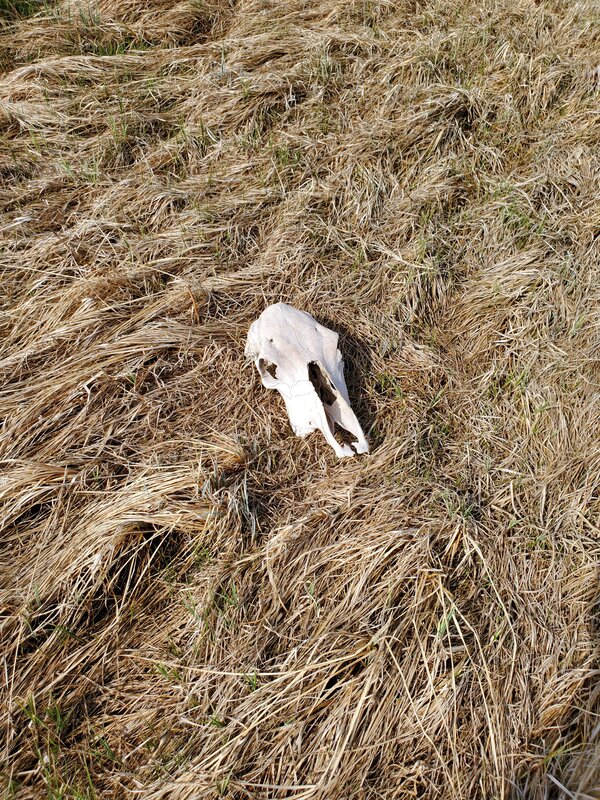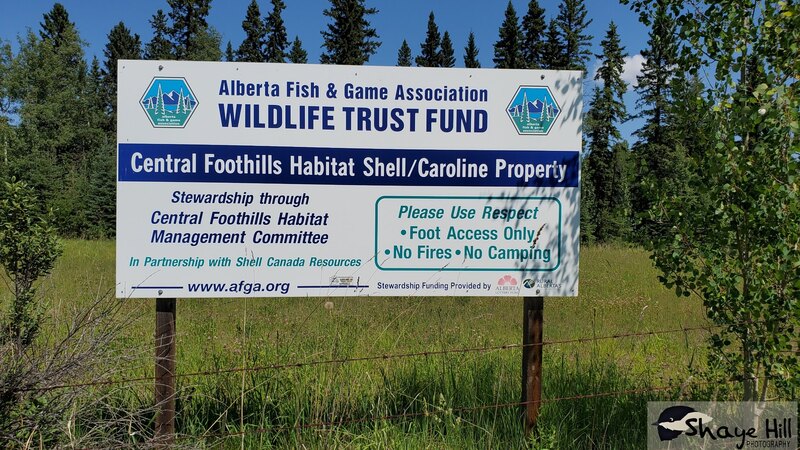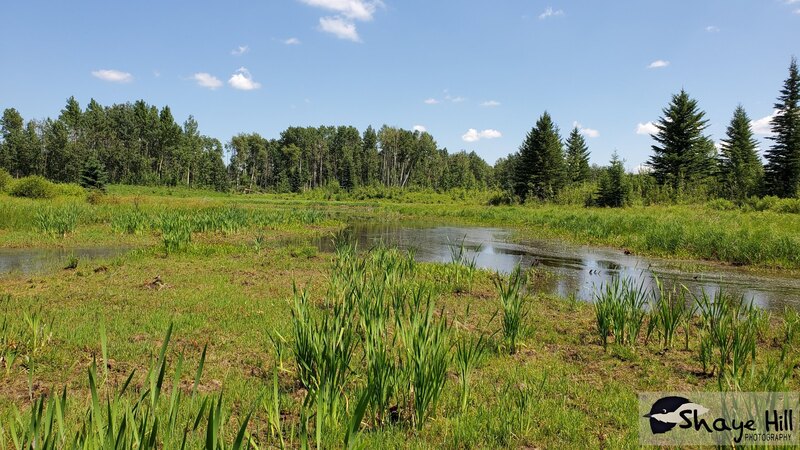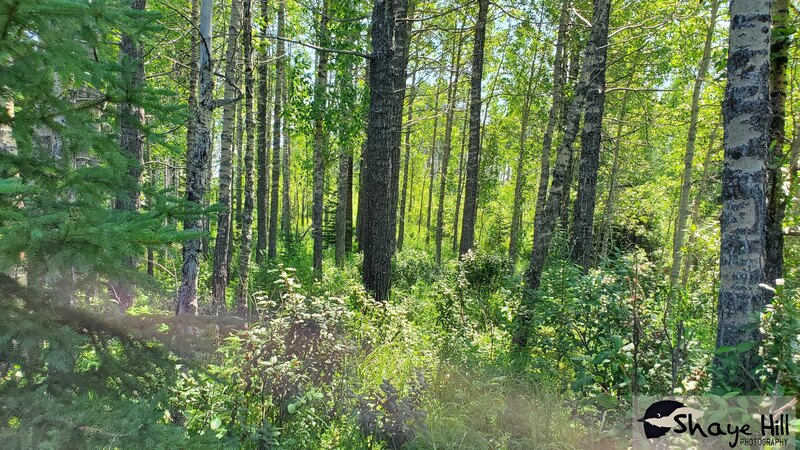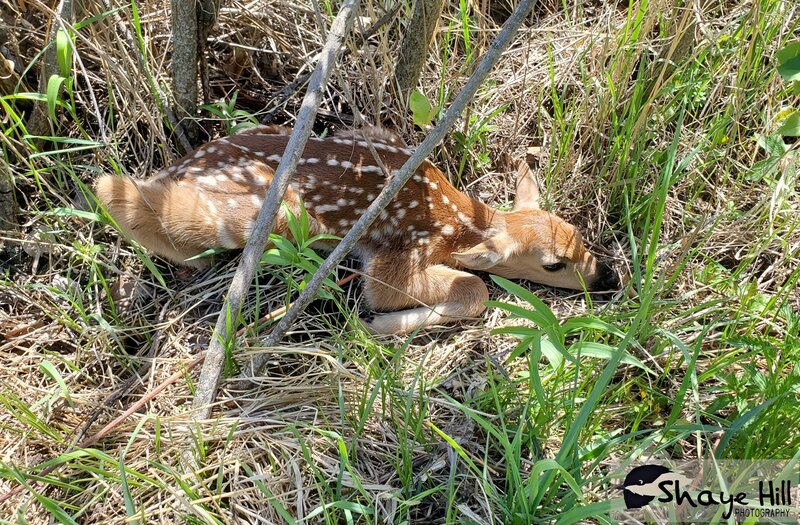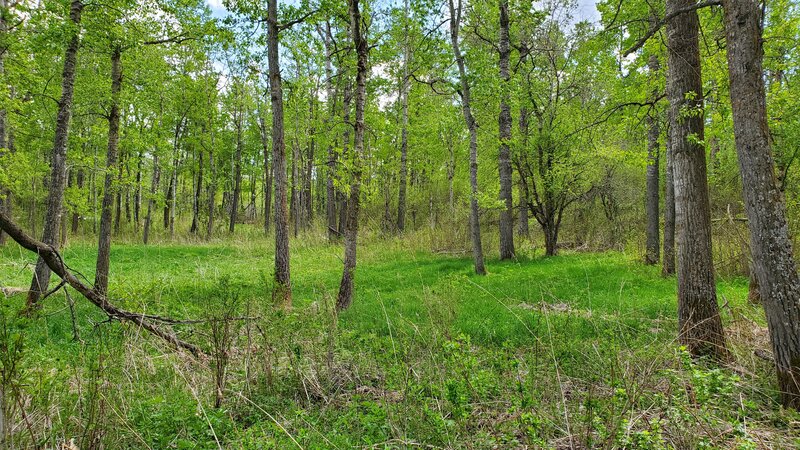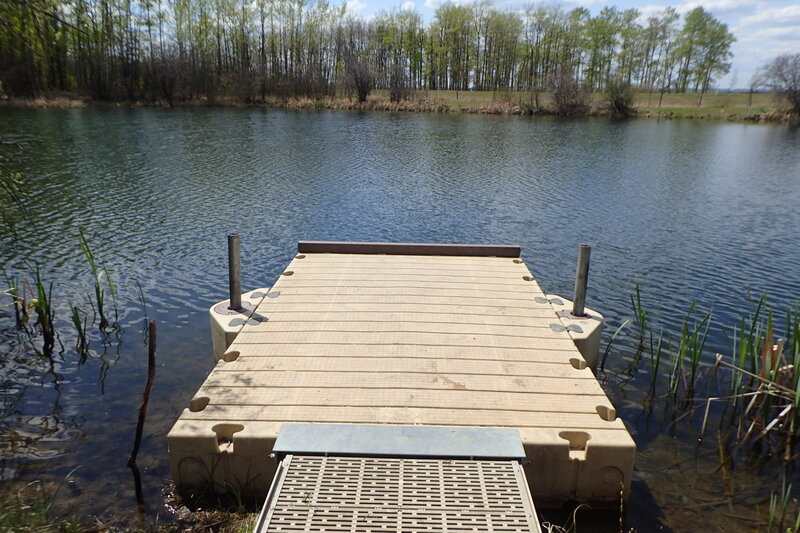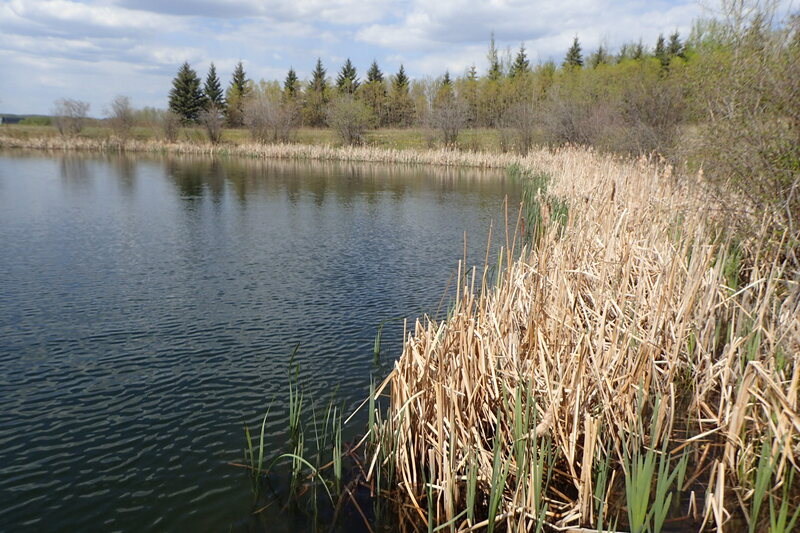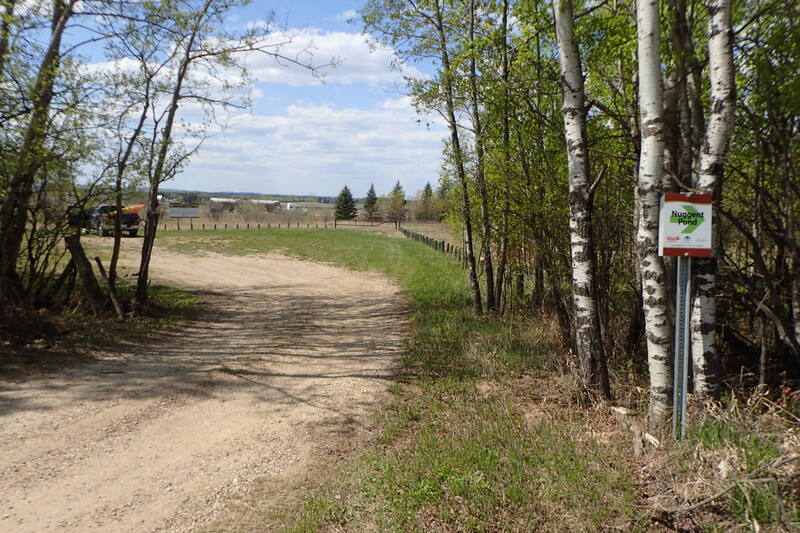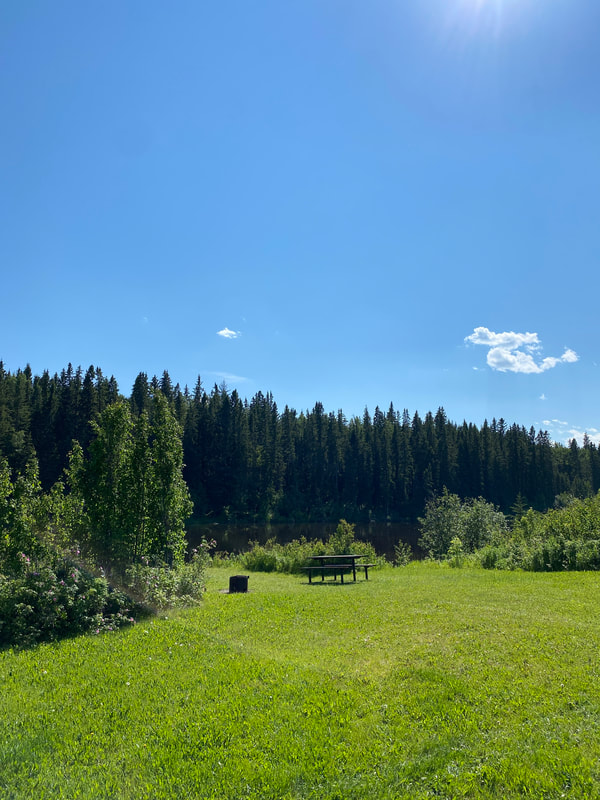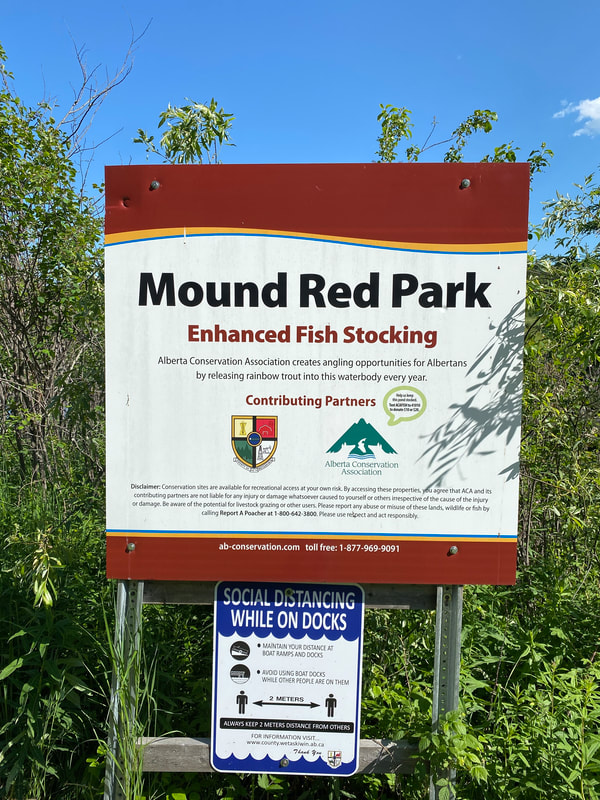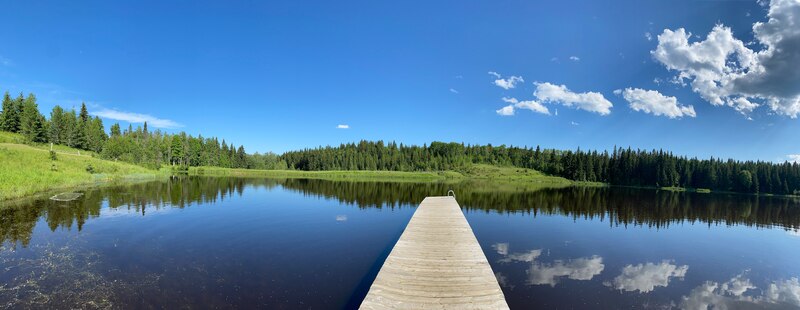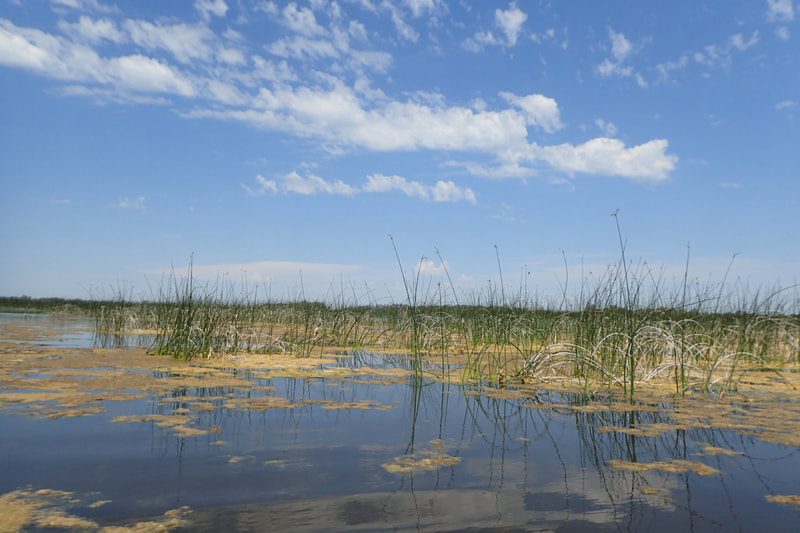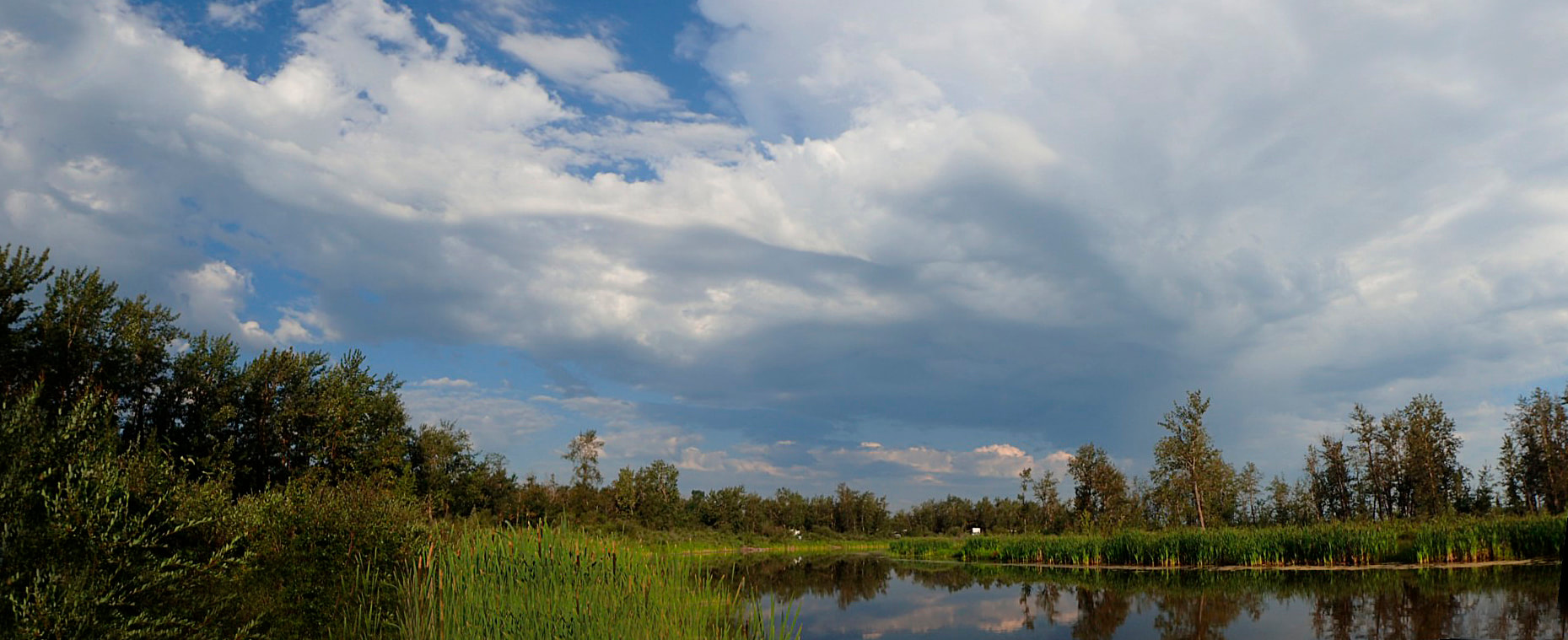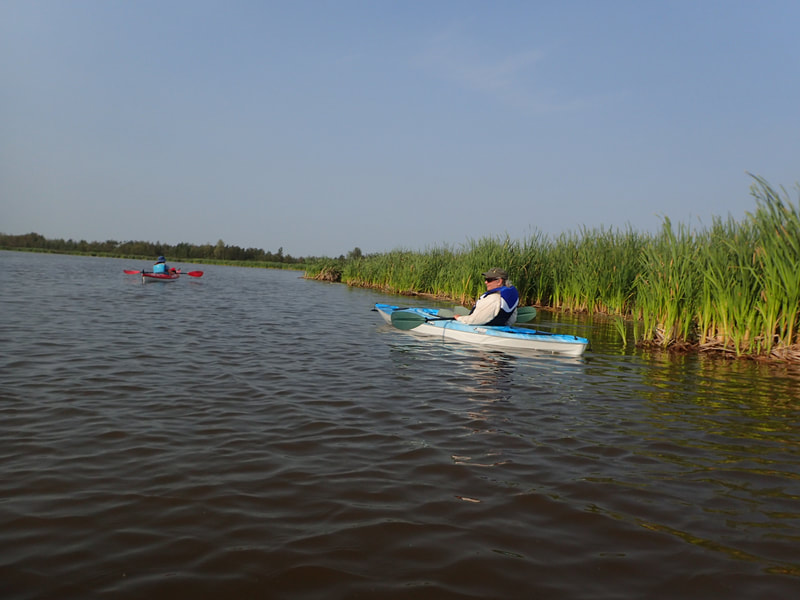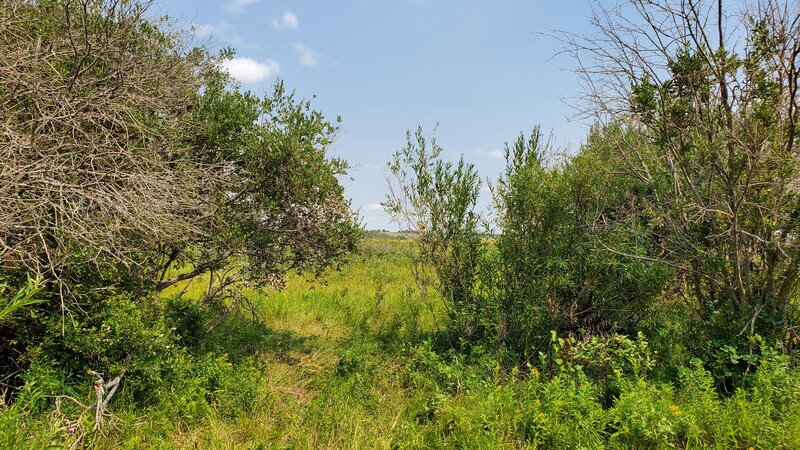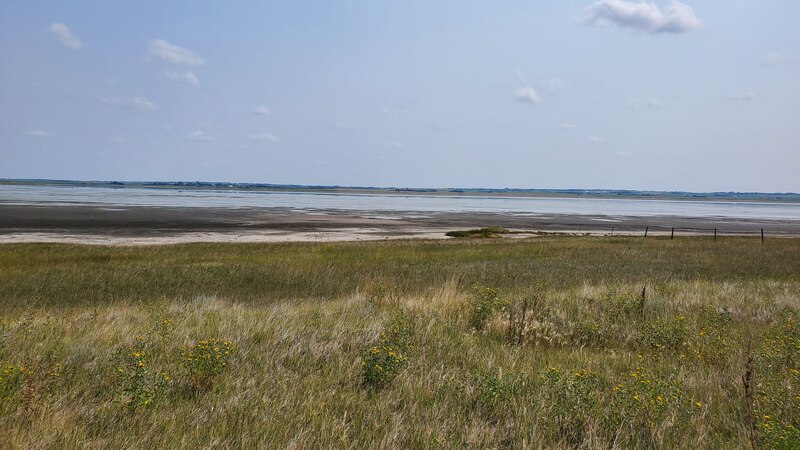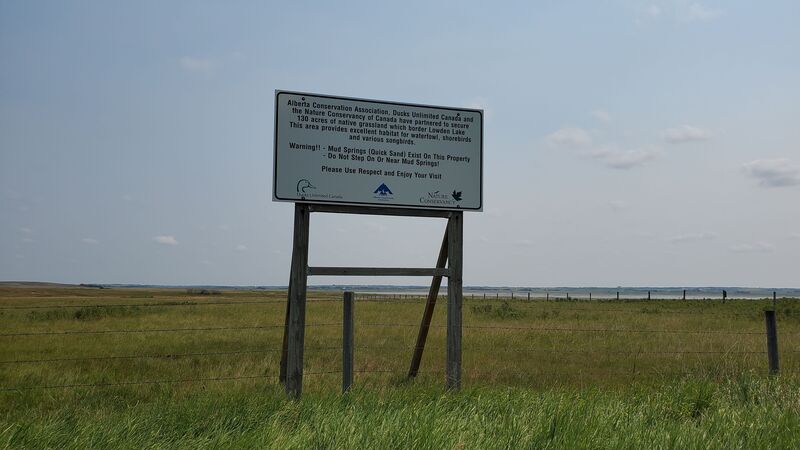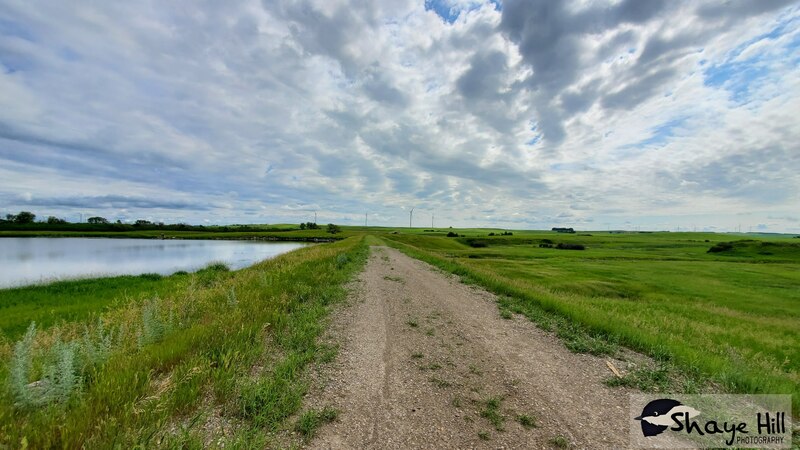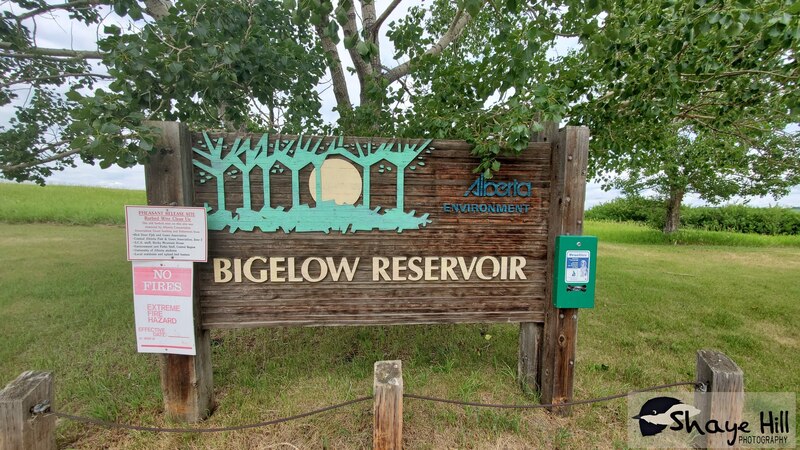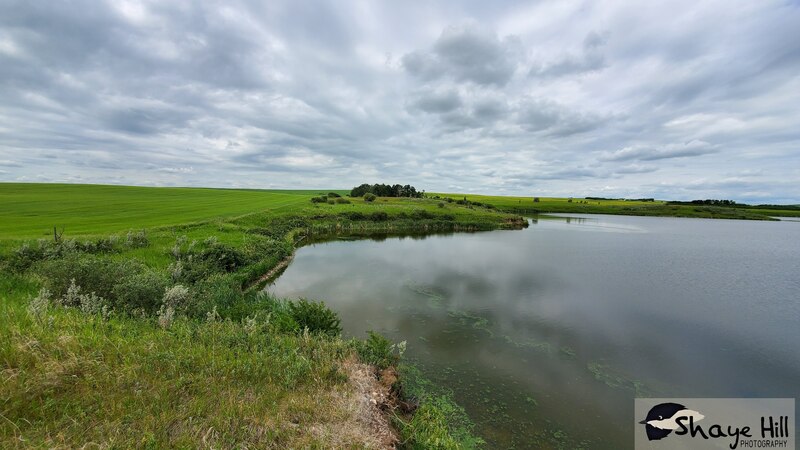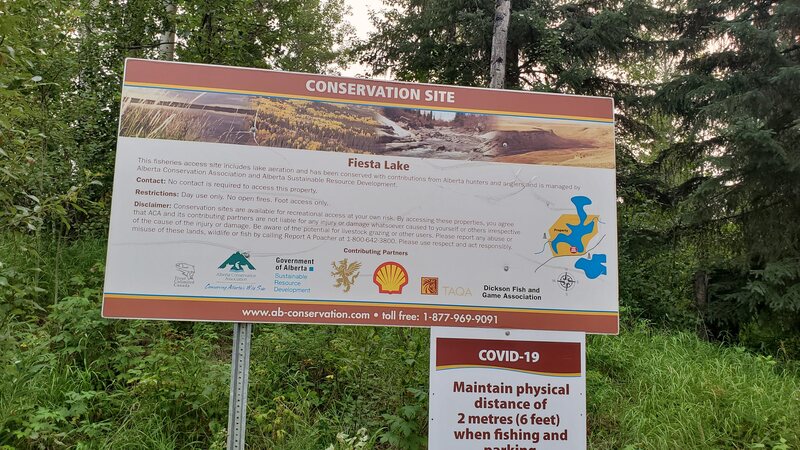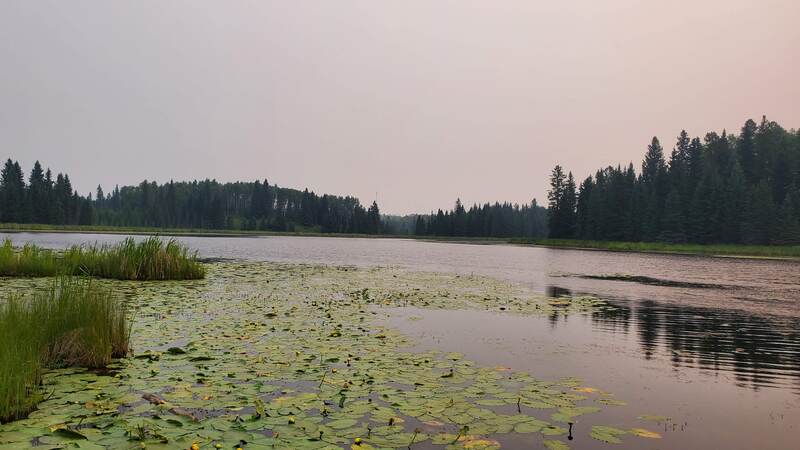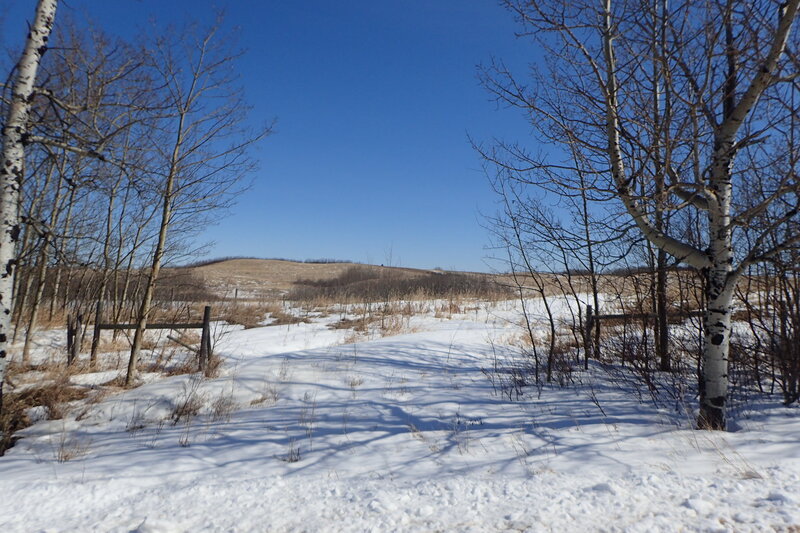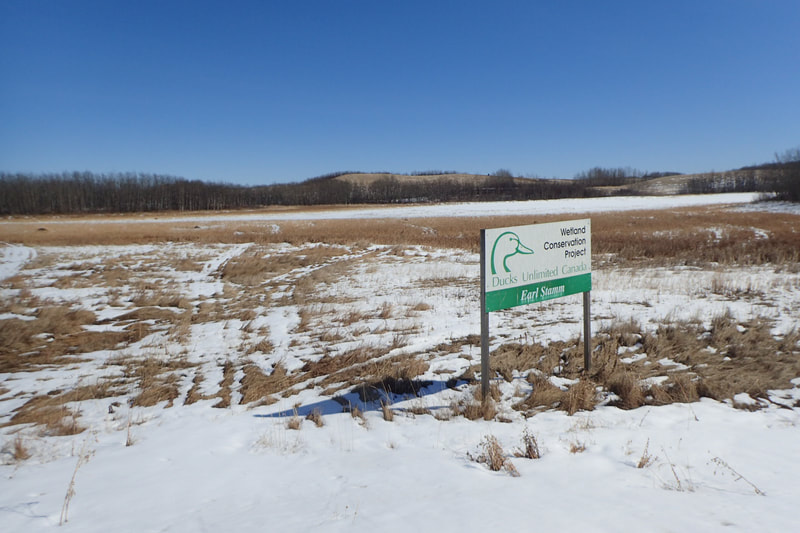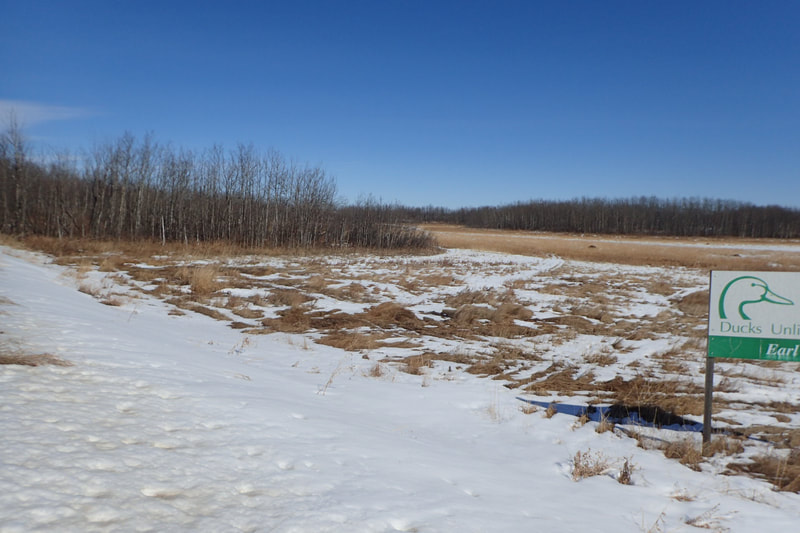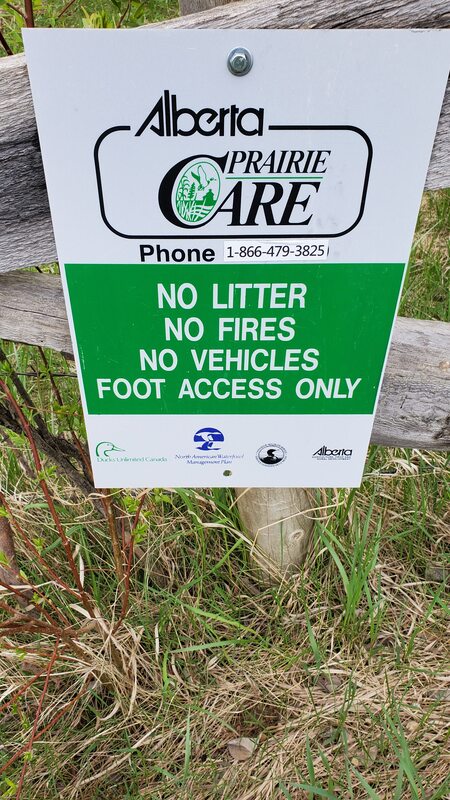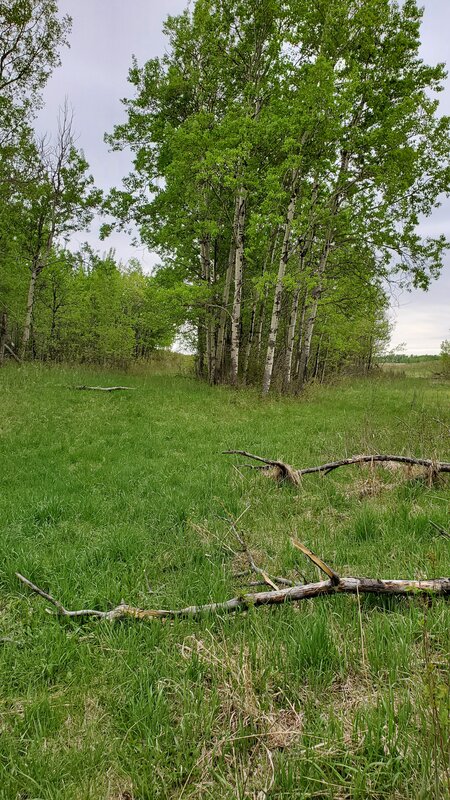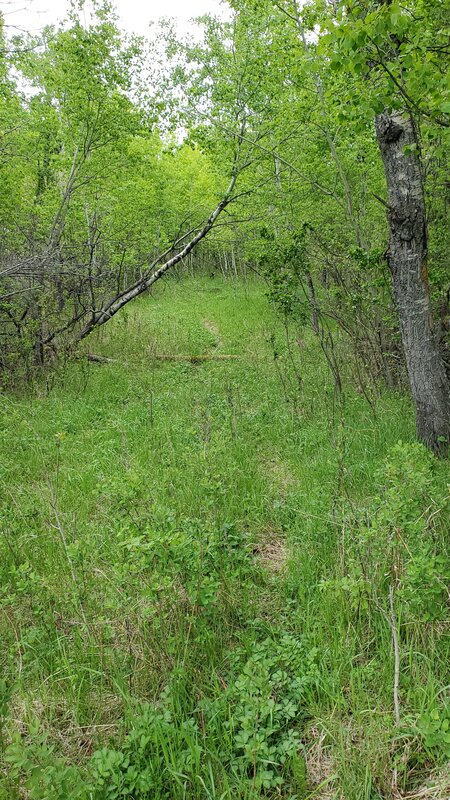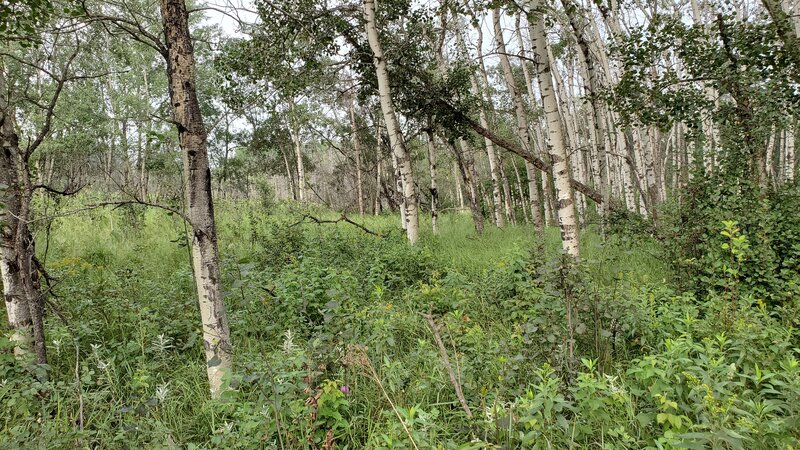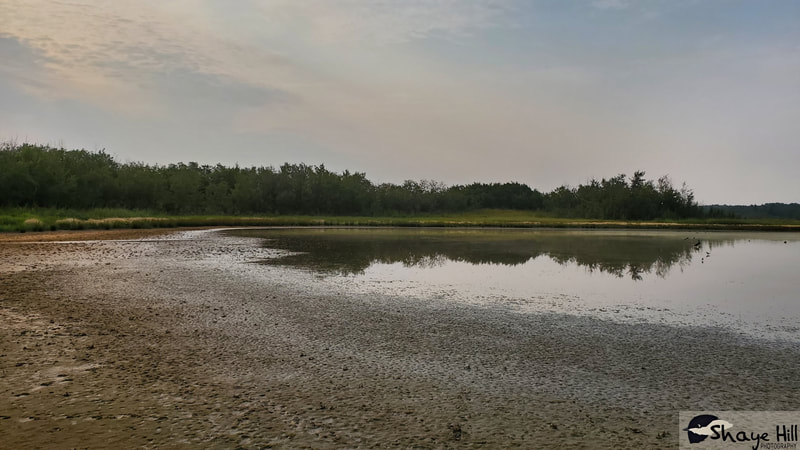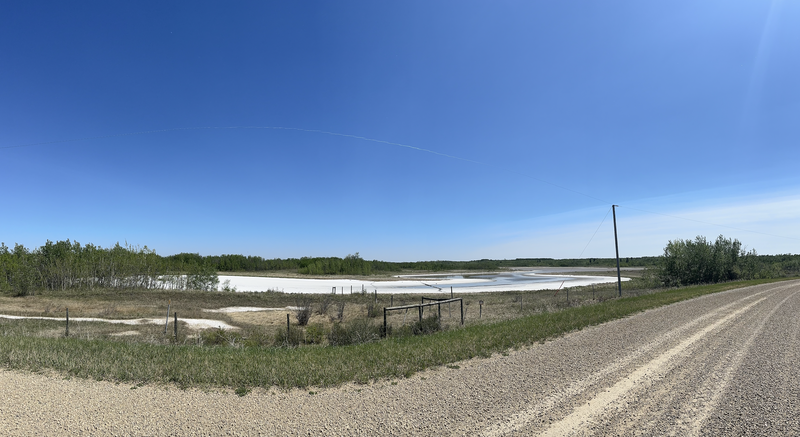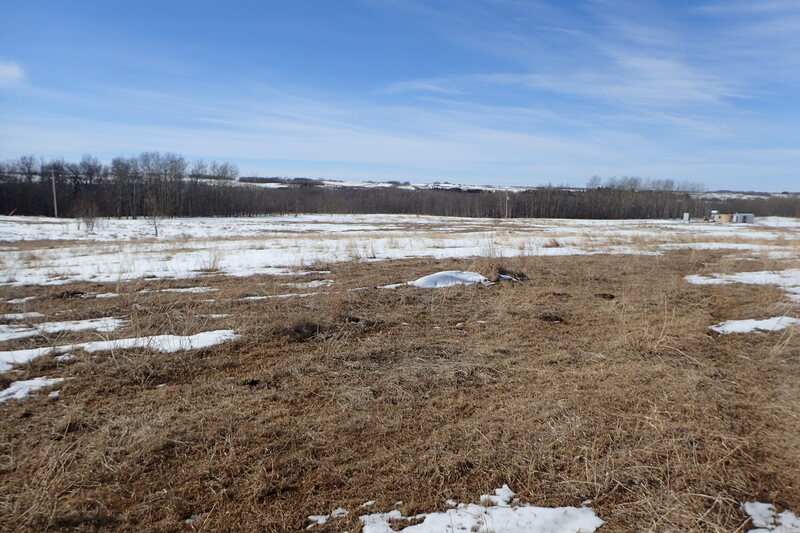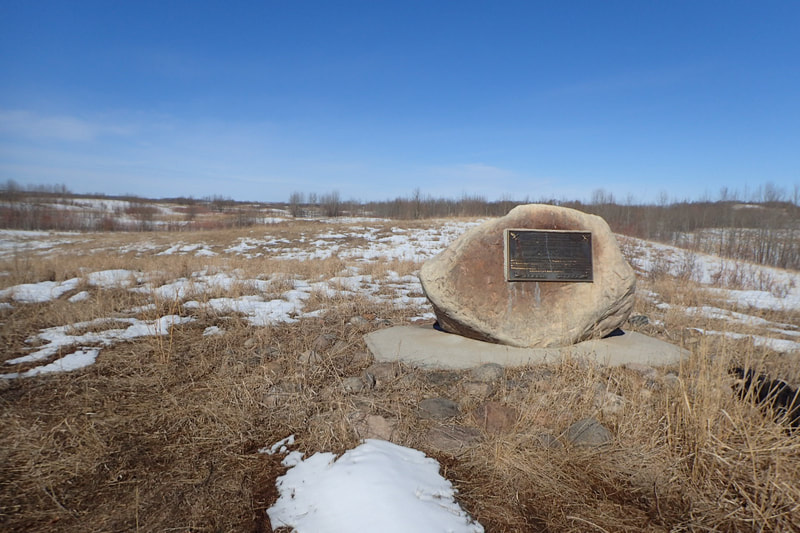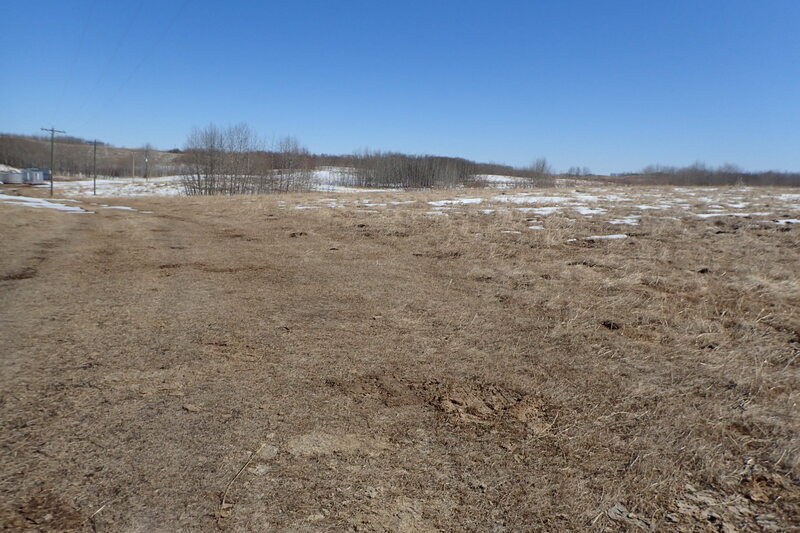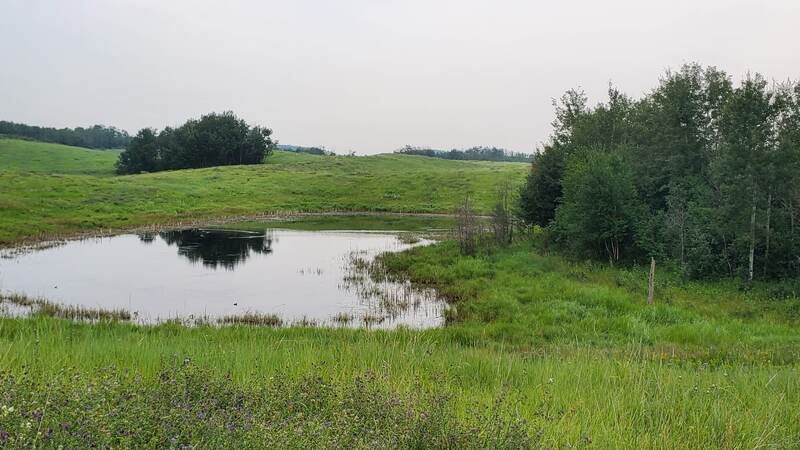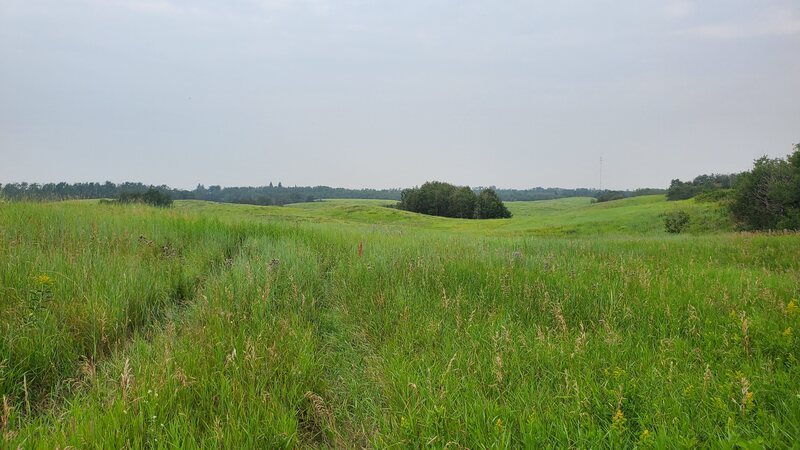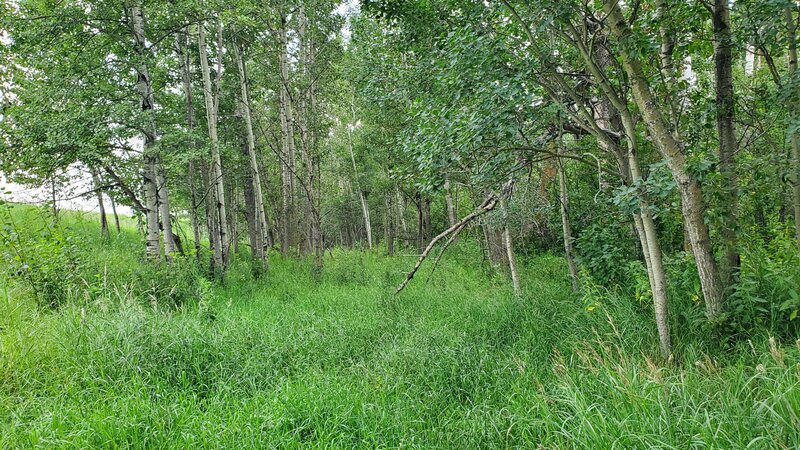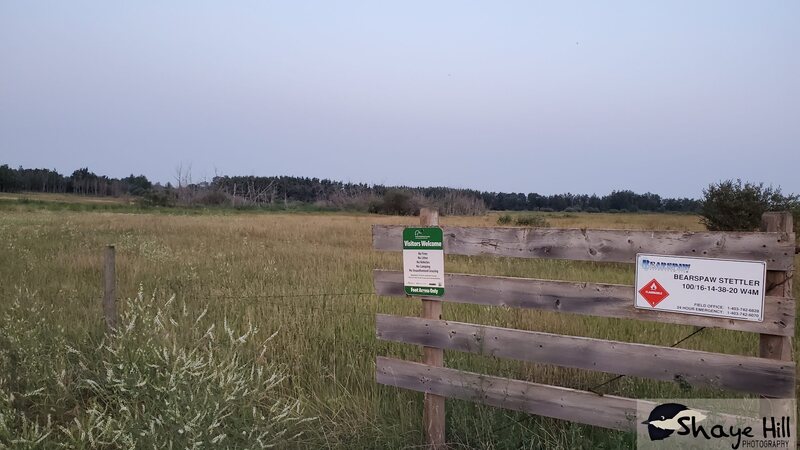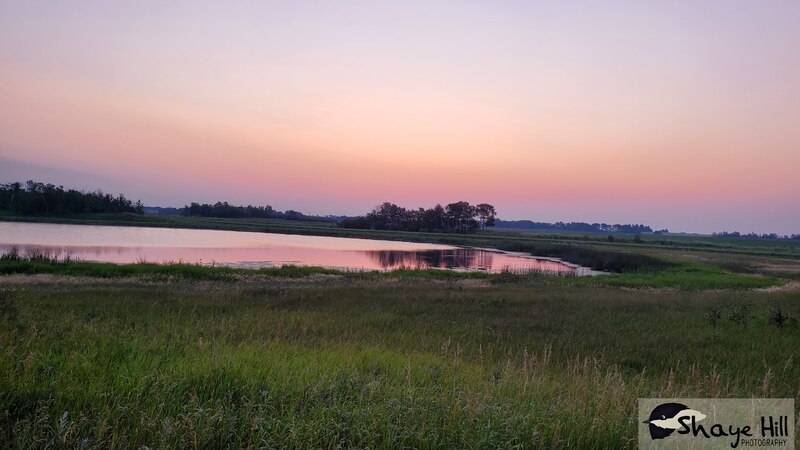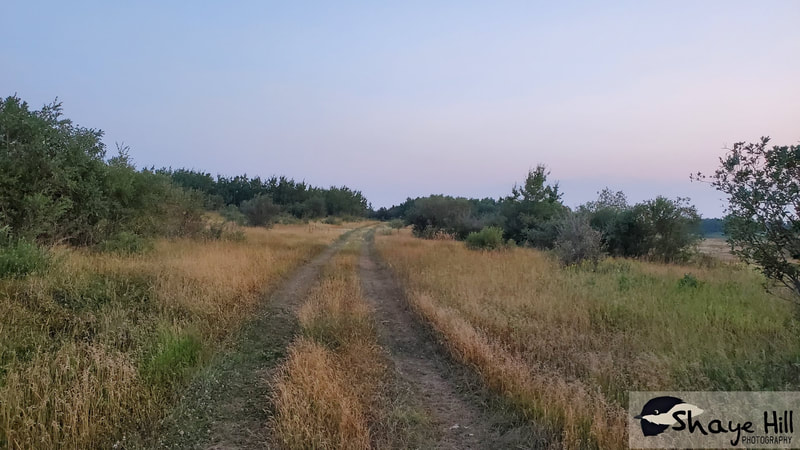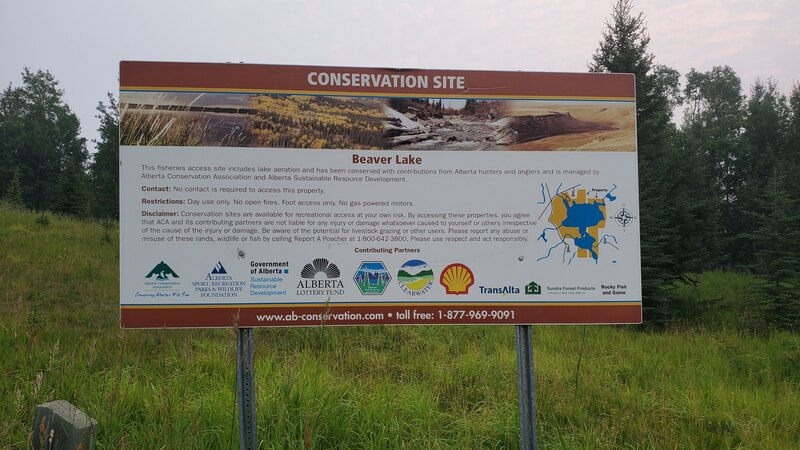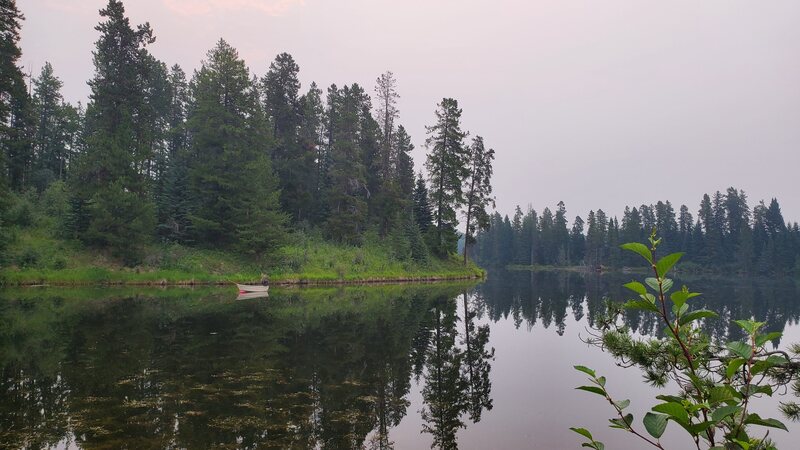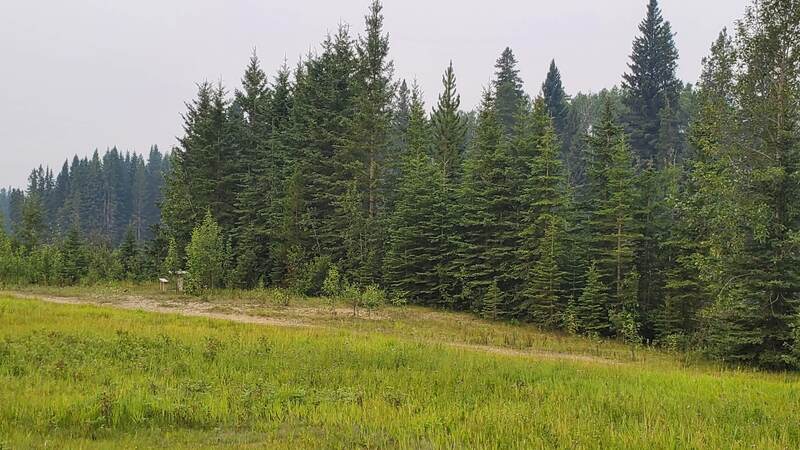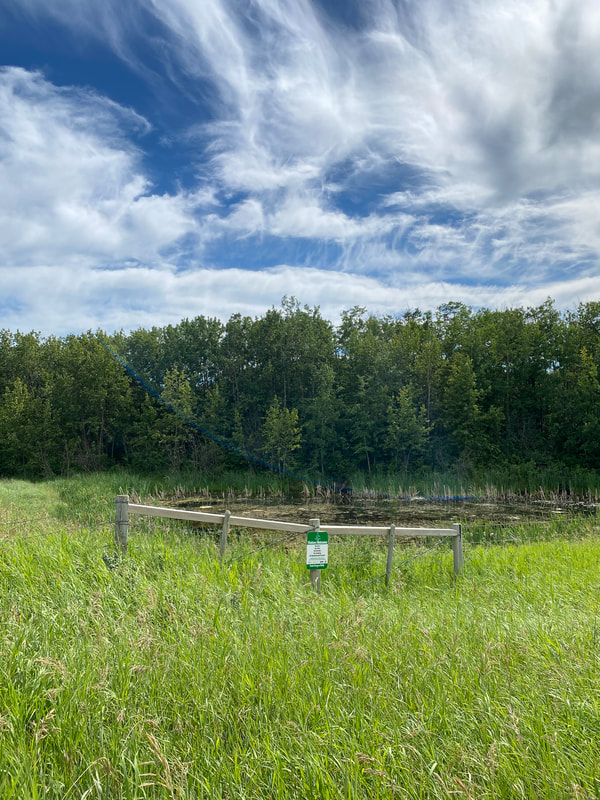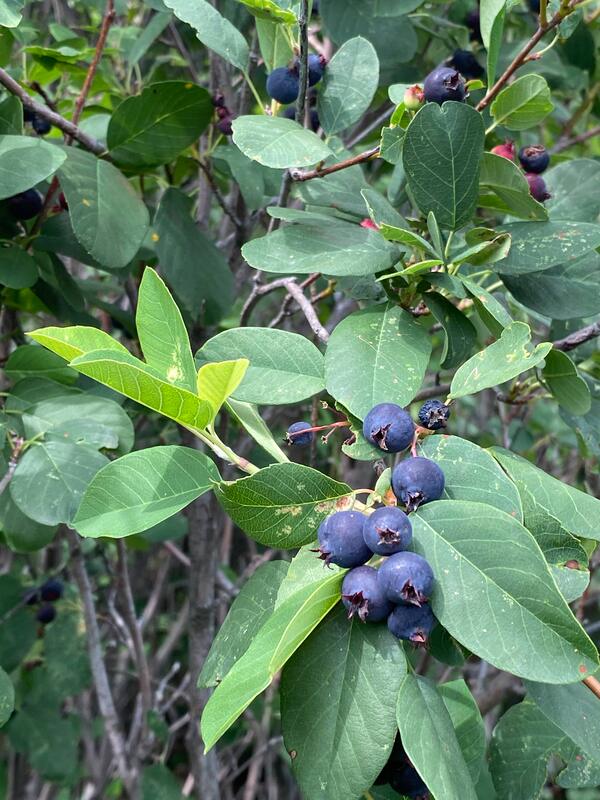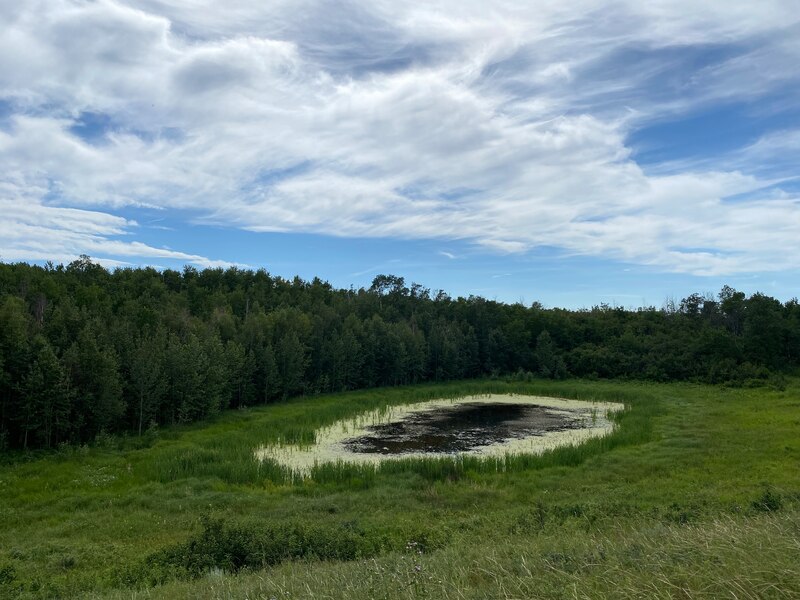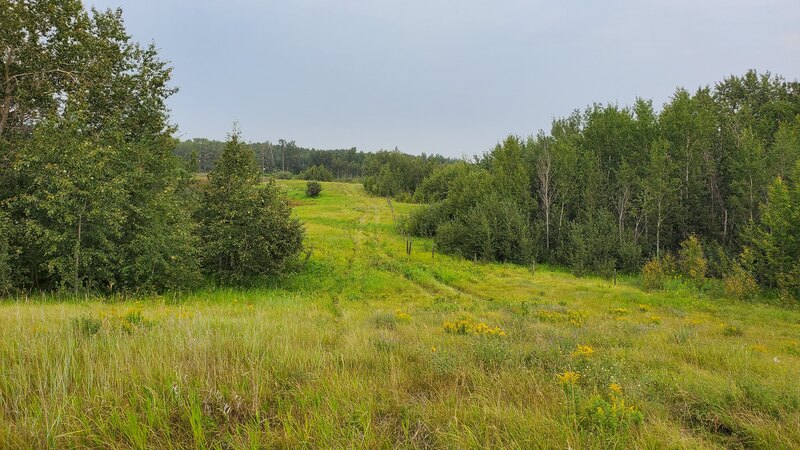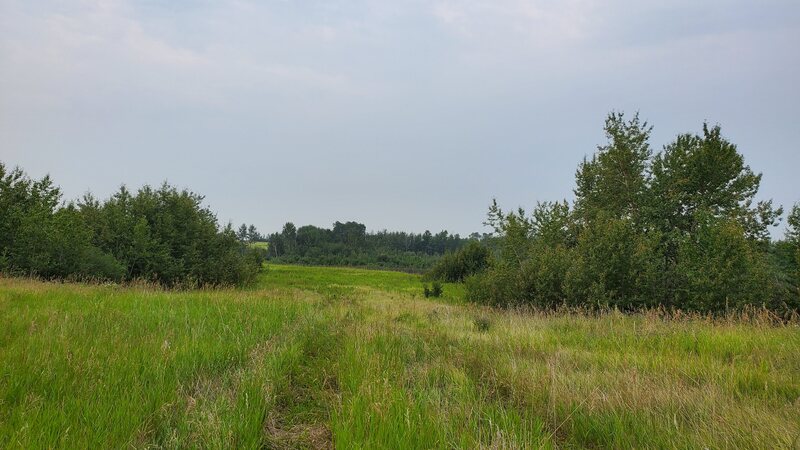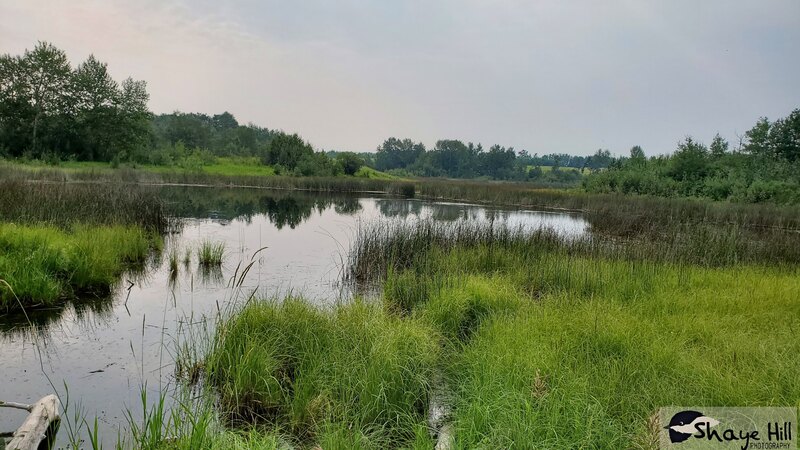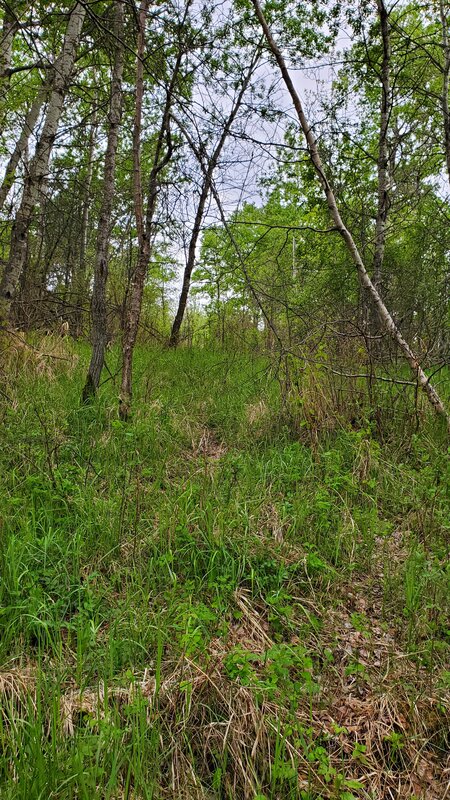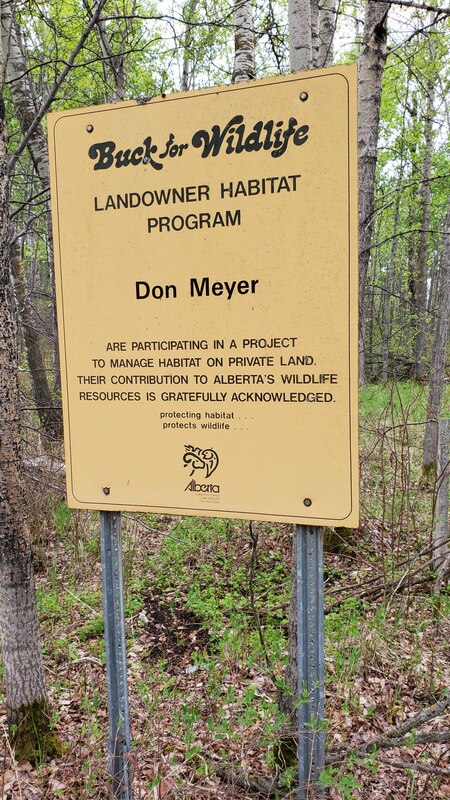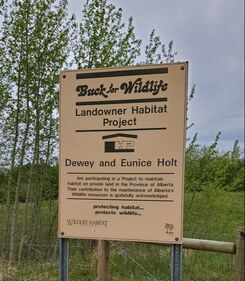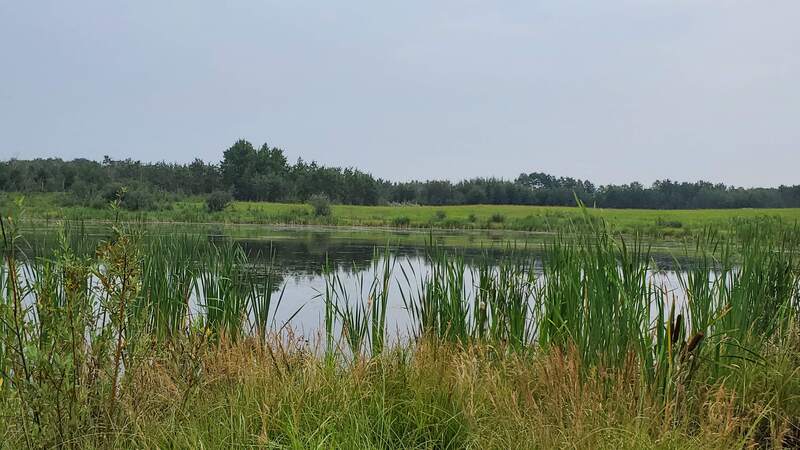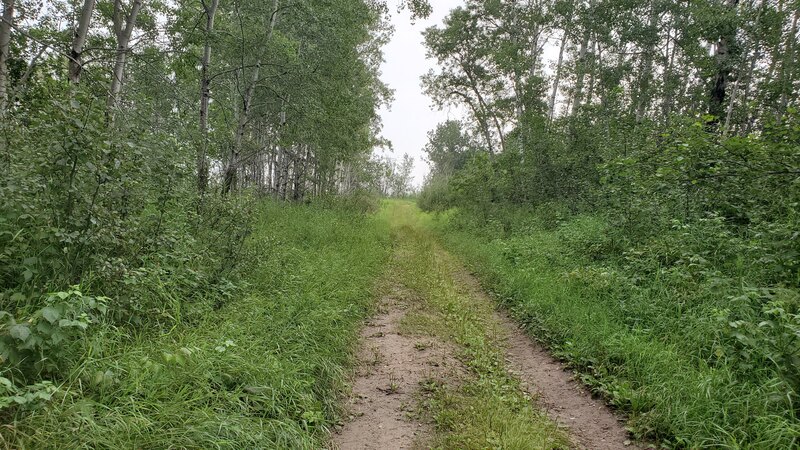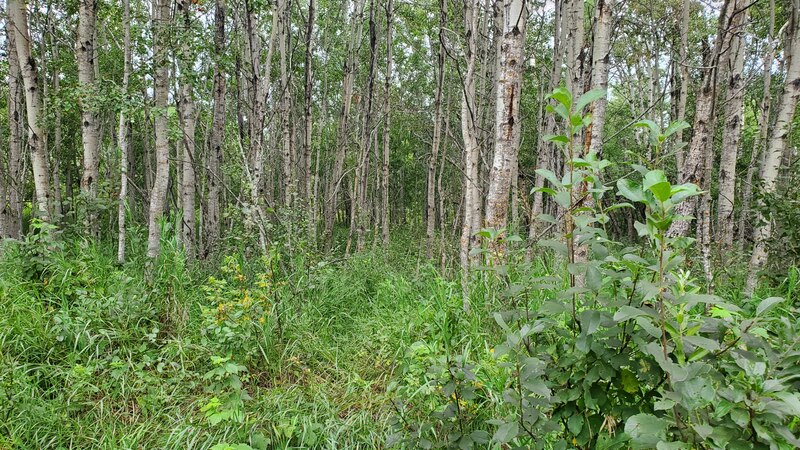Protected Areas
Explore Central Alberta's Protected Areas
Explore Central Alberta's Protected Areas
RULES AND AMENITIES FOR ALL PaRKLAND AREAS
|
Rules:
Hiking allowed Day use only No open fires Foot access only Dogs: Please note that protected areas are some of the last remaining places where wildlife can live their lives in peace. Dogs frighten, chase and even kill wildlife. Please respect the wildlife and do NOT bring your dog (leashed or unleashed) to these areas. Hazards: livestock may be present intermittently on some sites, leave gates as you find them. Consent Prior to Entry: May be required on some sites (dogs must be under control, preferably on a leash, at all times). |
Amenities:
Bathrooms: Most have no bathrooms available, there are some exceptions Trash: Most have no garbage facilities. Please bring your trash home. Parking: Most have limited parking, or parking along ditches near area Hazards: Tripping and falling, wild animals - be prepared, bring bear spray. |
Raven River 2 (50.0 km)
This property was strewn with bones and fur, resembling a deer-like "graveyard." Notably, there were semi-recent marked trees and areas of dug-up dirt, hinting at recent bear or cougar activity. As you explore the site, you'll encounter a moderately dense forest, with a meandering river. Moving east along the boundary, the habitat briefly transitions from trees to open spaces with water hemlock, suggesting the possibility of river flooding during different times of the year. This property is particularly geared towards hunters and anglers, offering opportunities for these activities. A fenced corridor clearly marks the boundary of the site, nestled between private land. Along this fence, two entrances are accessible on foot from the road. The first entrance is somewhat challenging to access due to an obstructing tree. However, further ahead, the second entrance provides better access and is conveniently located near the point where the main road forks into two.
Access: To reach this site, travel west from Spruce View on Highway 54. Turn left onto Range Rd 42, heading towards Raven. Proceed south through the town and cross the river until you reach Township Rd 362. Take a left turn and continue onto a 'no exit' road. Find a suitable spot to park along the road or in the ditch before the road splits.
Partners: ACA, AEP
Alberta Discover Guide: E3-177
This property was strewn with bones and fur, resembling a deer-like "graveyard." Notably, there were semi-recent marked trees and areas of dug-up dirt, hinting at recent bear or cougar activity. As you explore the site, you'll encounter a moderately dense forest, with a meandering river. Moving east along the boundary, the habitat briefly transitions from trees to open spaces with water hemlock, suggesting the possibility of river flooding during different times of the year. This property is particularly geared towards hunters and anglers, offering opportunities for these activities. A fenced corridor clearly marks the boundary of the site, nestled between private land. Along this fence, two entrances are accessible on foot from the road. The first entrance is somewhat challenging to access due to an obstructing tree. However, further ahead, the second entrance provides better access and is conveniently located near the point where the main road forks into two.
Access: To reach this site, travel west from Spruce View on Highway 54. Turn left onto Range Rd 42, heading towards Raven. Proceed south through the town and cross the river until you reach Township Rd 362. Take a left turn and continue onto a 'no exit' road. Find a suitable spot to park along the road or in the ditch before the road splits.
Partners: ACA, AEP
Alberta Discover Guide: E3-177
Nevis – #121 in Alberta Discover Guide – 50.4 km from Red Deer
This approximately 367-acre site is located near the town of Nevis and consists of reclaimed gas plant featuring a mix of forest and seeded grasslands with a couple of small wetlands on its south side. Wildlife found at the site includes white-tailed and mule deer, moose, fox, coyote, Richardson’s ground squirrels and a variety of birds, amphibians, reptiles and small mammals.
Partners: Alberta Conservation Association, Alberta Fish & Game Association, Chevron Canada
http://www.albertadiscoverguide.com/site.cfm?grid=E3&number=121
This approximately 367-acre site is located near the town of Nevis and consists of reclaimed gas plant featuring a mix of forest and seeded grasslands with a couple of small wetlands on its south side. Wildlife found at the site includes white-tailed and mule deer, moose, fox, coyote, Richardson’s ground squirrels and a variety of birds, amphibians, reptiles and small mammals.
Partners: Alberta Conservation Association, Alberta Fish & Game Association, Chevron Canada
http://www.albertadiscoverguide.com/site.cfm?grid=E3&number=121
Mirror Reservoir - #148 in Alberta Discover Guide - 50.6 km from Red Deer
This reservoir is 1.6 km W of Mirror on Highway 50. ACA annually stocks this pond with trout, typically before the May long weekend. Day-use facilities include a parking area, outhouse and garbage bins.
Partners: Alberta Conservation Association, Alberta Environment and Parks, Lacombe County
https://www.albertadiscoverguide.com/site.cfm?grid=E3&number=148
This reservoir is 1.6 km W of Mirror on Highway 50. ACA annually stocks this pond with trout, typically before the May long weekend. Day-use facilities include a parking area, outhouse and garbage bins.
Partners: Alberta Conservation Association, Alberta Environment and Parks, Lacombe County
https://www.albertadiscoverguide.com/site.cfm?grid=E3&number=148
Gleniffer Reservoir Provincial Recreation Area – 50.9 km from Red Deer
This natural area is more of a pullout with bathrooms, picnic areas and a splendid view of the reservoir. The reservoir does fluctuate in size and depth so depending on the level depends on how far you can walk into the reservoir. The area also offers a launch for boats, kayaks and canoes but check the level before you go to make sure there is enough water. When the water level is down Common Mare's Tail can be viewed poking through the exposed water bed.
Partners: Alberta Environment and Parks
https://www.albertaparks.ca/parks/central/gleniffer-reservoir-pra/
This natural area is more of a pullout with bathrooms, picnic areas and a splendid view of the reservoir. The reservoir does fluctuate in size and depth so depending on the level depends on how far you can walk into the reservoir. The area also offers a launch for boats, kayaks and canoes but check the level before you go to make sure there is enough water. When the water level is down Common Mare's Tail can be viewed poking through the exposed water bed.
Partners: Alberta Environment and Parks
https://www.albertaparks.ca/parks/central/gleniffer-reservoir-pra/
Drake – #165 in Alberta Discover Guide – 53.2 km from Red Deer
This 133-acre site is approximately 14 km east of Caroline next to the Porter Conservation Site (E3-170). To access the north side of the river go south on RR 44 from Highway 54. For the south side, go south on RR 43, west on TWP 361A and north on RR 44 to the end of the undeveloped road allowance. Surrounded mainly by mixed spruce and aspen forest, the Raven River meanders through this site, providing over 2 km of fishable water for anglers targeting brown trout. Wildlife in the area include moose, deer, black bear, elk, ruffed grouse and spruce grouse.
Partners: Alberta Conservation Association, Alberta Fish & Game Association
http://www.albertadiscoverguide.com/site.cfm?grid=E3&number=165
This 133-acre site is approximately 14 km east of Caroline next to the Porter Conservation Site (E3-170). To access the north side of the river go south on RR 44 from Highway 54. For the south side, go south on RR 43, west on TWP 361A and north on RR 44 to the end of the undeveloped road allowance. Surrounded mainly by mixed spruce and aspen forest, the Raven River meanders through this site, providing over 2 km of fishable water for anglers targeting brown trout. Wildlife in the area include moose, deer, black bear, elk, ruffed grouse and spruce grouse.
Partners: Alberta Conservation Association, Alberta Fish & Game Association
http://www.albertadiscoverguide.com/site.cfm?grid=E3&number=165
Porter – #70 in Alberta Discover Guide - 53.2 km from Red Deer
This 155-acre site is approximately 13 km E of Caroline, next to the Drake Conservation Site (E3-165). There are three access points: one along Highway 54 and two along RR 45. From Caroline, travel E along Highway 54 for 13 km to RR 45, 0.5 km S to a small parking area near the river, or 0.8 km to an approach at the SW corner. The landscape consists of mature spruce and aspen forest, with the Raven River meandering through 2 km of the site. Wildlife in the area includes moose, deer, elk and cougar. The subdivision, located off Highway 54 on the quarter section bordering the N bank of the Raven River, is private land and not part of the site. Do not trespass on private property.
Partners: Alberta Conservation Association, Alberta Fish & Game Assocation
http://www.albertadiscoverguide.com/site.cfm?grid=E3&number=170
This 155-acre site is approximately 13 km E of Caroline, next to the Drake Conservation Site (E3-165). There are three access points: one along Highway 54 and two along RR 45. From Caroline, travel E along Highway 54 for 13 km to RR 45, 0.5 km S to a small parking area near the river, or 0.8 km to an approach at the SW corner. The landscape consists of mature spruce and aspen forest, with the Raven River meandering through 2 km of the site. Wildlife in the area includes moose, deer, elk and cougar. The subdivision, located off Highway 54 on the quarter section bordering the N bank of the Raven River, is private land and not part of the site. Do not trespass on private property.
Partners: Alberta Conservation Association, Alberta Fish & Game Assocation
http://www.albertadiscoverguide.com/site.cfm?grid=E3&number=170
Barritt – #60 in Alberta Discover Guide – 54.0 km from Red Deer
This 160-acre site is located approximately 5 km southeast of Mirror and consists of wetland, grassland and bush habitat. Wildlife found in the area includes white-tailed and mule deer, waterfowl and a variety of songbirds.
Partners: Ducks Unlimited Canada
http://www.albertadiscoverguide.com/site.cfm?grid=E3&number=60
This 160-acre site is located approximately 5 km southeast of Mirror and consists of wetland, grassland and bush habitat. Wildlife found in the area includes white-tailed and mule deer, waterfowl and a variety of songbirds.
Partners: Ducks Unlimited Canada
http://www.albertadiscoverguide.com/site.cfm?grid=E3&number=60
Alix Lake Nature Trail (54.1 km)
Conveniently located in the town of Alix, this nature trail loops around a large and shallow lake, passing through areas of mixed woods, marshes, and farmland. Designed for visitors of all ages, the site offers amenities such as a playground, washrooms, and benches for a comfortable outing. A nearby campground allows for an extended nature getaway. Interpretive signs are placed along the groomed trails for educational purposes. The 6.3 km trail offers a moderate level of challenge, passing through diverse habitats and providing opportunities to observe over 40 avian species, including the Red-necked Grebe, Black-crowned Night Heron, Mourning Dove, and Osprey.
Access #1: From Highway 601, turn left (northwest) onto Highway 12 towards Alix. After 1 km, turn left onto 47 Ave, then take a right onto Lake St, and finally, turn left onto 53 St. You'll find the parking lot located on the right-hand side.
Access #2: From Highway 601, turn left (northwest) onto Highway 12 towards Alix. After 1.7 km, turn left onto Leon St, then take a right onto Railway Ave, and finally, turn left onto 54 St. The parking lot is situated on the left-hand side. Note: The “access point” from Range Rd 231A is not accessible, as it is a private road, and trespassers are not welcome.
Partners: Town of Alix
Alberta Discovery Guide: N/A
Conveniently located in the town of Alix, this nature trail loops around a large and shallow lake, passing through areas of mixed woods, marshes, and farmland. Designed for visitors of all ages, the site offers amenities such as a playground, washrooms, and benches for a comfortable outing. A nearby campground allows for an extended nature getaway. Interpretive signs are placed along the groomed trails for educational purposes. The 6.3 km trail offers a moderate level of challenge, passing through diverse habitats and providing opportunities to observe over 40 avian species, including the Red-necked Grebe, Black-crowned Night Heron, Mourning Dove, and Osprey.
Access #1: From Highway 601, turn left (northwest) onto Highway 12 towards Alix. After 1 km, turn left onto 47 Ave, then take a right onto Lake St, and finally, turn left onto 53 St. You'll find the parking lot located on the right-hand side.
Access #2: From Highway 601, turn left (northwest) onto Highway 12 towards Alix. After 1.7 km, turn left onto Leon St, then take a right onto Railway Ave, and finally, turn left onto 54 St. The parking lot is situated on the left-hand side. Note: The “access point” from Range Rd 231A is not accessible, as it is a private road, and trespassers are not welcome.
Partners: Town of Alix
Alberta Discovery Guide: N/A
Locke – #113 in Alberta Discover Guide – 55.3 km from Red Deer
This 139-acre site is located approximately 8 km southwest of Erskine and consists of wetland, grassland and bush habitat. Wildlife found in the area includes white-tailed and mule deer, waterfowl and a variety of songbirds.
Partners: Ducks Unlimited Canada
http://www.albertadiscoverguide.com/site.cfm?grid=E3&number=113
This 139-acre site is located approximately 8 km southwest of Erskine and consists of wetland, grassland and bush habitat. Wildlife found in the area includes white-tailed and mule deer, waterfowl and a variety of songbirds.
Partners: Ducks Unlimited Canada
http://www.albertadiscoverguide.com/site.cfm?grid=E3&number=113
Coulson – #168 in Alberta Discover Guide – 55.4 km from Red Deer
This 10-acre site is located approximately 35 km southeast of Rocky Mountain House along the North Raven River, which offers world-class fishing opportunities for brown trout. The site was donated by Lillian and Francis Coulson in honour of her parents Marino and Emily Cozzubbo. This generous gift was made to conserve and protect the valuable riparian habitat found along the stream. Facilities include a maintained parking area, outhouse, garbage can, and picnic table. The site can be accessed from the east side of Highway 761 along a shared driveway approximately 6 km north of the junction of Highway 54.
Partners: Alberta Conservation Association, Alberta Fish & Game Association
http://www.albertadiscoverguide.com/site.cfm?grid=E3&number=168
This 10-acre site is located approximately 35 km southeast of Rocky Mountain House along the North Raven River, which offers world-class fishing opportunities for brown trout. The site was donated by Lillian and Francis Coulson in honour of her parents Marino and Emily Cozzubbo. This generous gift was made to conserve and protect the valuable riparian habitat found along the stream. Facilities include a maintained parking area, outhouse, garbage can, and picnic table. The site can be accessed from the east side of Highway 761 along a shared driveway approximately 6 km north of the junction of Highway 54.
Partners: Alberta Conservation Association, Alberta Fish & Game Association
http://www.albertadiscoverguide.com/site.cfm?grid=E3&number=168
Boulton – #46 in Alberta Discover Guide – 56.0 km from Red Deer
This 160-acre site is approximately 8 km NE of Elnora and consists of wetland, grassland and bush habitat. Wildlife in the area includes white-tailed and mule deer and waterfowl.
Partners: Ducks Unlimited Canada
http://www.albertadiscoverguide.com/site.cfm?grid=E3&number=46
This 160-acre site is approximately 8 km NE of Elnora and consists of wetland, grassland and bush habitat. Wildlife in the area includes white-tailed and mule deer and waterfowl.
Partners: Ducks Unlimited Canada
http://www.albertadiscoverguide.com/site.cfm?grid=E3&number=46
North Raven River (56.7 km)
This property spans 430 acres along 14 km of the North Raven River (Stauffer Creek) and is situated 30 km southeast of Rocky Mountain House. Cattle exclusion fencing has been installed along the riverbanks to enhance riparian and instream habitats. A public parking lot provides access for anglers targeting brown trout and brook trout. The property mainly consists of marshes, willows, and riverbeds, surrounded by privately owned and Crown grazing lease lands. While there are game trails, be cautious due to uneven terrain. Bird activity might be limited on hot days. Anglers must remain within the fenced corridor or secure permission for access.
Access: Drive west from Spruce View on Highway 54, then turn north onto Highway 761 and travel 6.3 km. Park on the left before crossing the North Raven River bridge. NOTE: If you pass the bridge, you've gone too far. Keep an eye out for an official sign.
Partners: ACA, AEP, AFGA, TUC
Alberta Discover Guide: E3-56
This property spans 430 acres along 14 km of the North Raven River (Stauffer Creek) and is situated 30 km southeast of Rocky Mountain House. Cattle exclusion fencing has been installed along the riverbanks to enhance riparian and instream habitats. A public parking lot provides access for anglers targeting brown trout and brook trout. The property mainly consists of marshes, willows, and riverbeds, surrounded by privately owned and Crown grazing lease lands. While there are game trails, be cautious due to uneven terrain. Bird activity might be limited on hot days. Anglers must remain within the fenced corridor or secure permission for access.
Access: Drive west from Spruce View on Highway 54, then turn north onto Highway 761 and travel 6.3 km. Park on the left before crossing the North Raven River bridge. NOTE: If you pass the bridge, you've gone too far. Keep an eye out for an official sign.
Partners: ACA, AEP, AFGA, TUC
Alberta Discover Guide: E3-56
photo credit: Tony Blake
Medicine Lodge Hills Natural Area (56.7 km)
This 160-acre site features a large hill with a steep slope on the eastern side and gentler slopes on the northern, southern, and western sides. The area is covered with aspen, paper birch, and young spruce trees, making it an important habitat for ungulates. An old team-and-wagon trail can be found here, as well as a cutline. To explore the site, follow the pipeline trail uphill, which might appear somewhat overgrown but leads to a beautiful trail along the south fence line. The understory of the area is filled with beaked hazelnut. If you prefer to avoid walking uphill, you can use the cutline on the west side. There is enough parking space for 1-3 cars along the ditch. However, driving down the road in wet conditions is not recommended since there is no gravel beyond the southwest corner of the property. This site is home to various species, including the ovenbird, which can be easily spotted here.
Access: To get to the property, travel west from the Bentley intersection on Highway 12 for a distance of 16 km. Then, make a northward turn onto Range Road 31 and continue for 1.6 km until you reach the southwest corner of the property.
Partners: AEP
Alberta Discover Guide: N/A
This 160-acre site features a large hill with a steep slope on the eastern side and gentler slopes on the northern, southern, and western sides. The area is covered with aspen, paper birch, and young spruce trees, making it an important habitat for ungulates. An old team-and-wagon trail can be found here, as well as a cutline. To explore the site, follow the pipeline trail uphill, which might appear somewhat overgrown but leads to a beautiful trail along the south fence line. The understory of the area is filled with beaked hazelnut. If you prefer to avoid walking uphill, you can use the cutline on the west side. There is enough parking space for 1-3 cars along the ditch. However, driving down the road in wet conditions is not recommended since there is no gravel beyond the southwest corner of the property. This site is home to various species, including the ovenbird, which can be easily spotted here.
Access: To get to the property, travel west from the Bentley intersection on Highway 12 for a distance of 16 km. Then, make a northward turn onto Range Road 31 and continue for 1.6 km until you reach the southwest corner of the property.
Partners: AEP
Alberta Discover Guide: N/A
photo credit: Tony Blake
Kinvig – #157 in Alberta Discover Guide – 56.9 km from Red Deer
This 640-acre site is located approximately 5 km east of Elnora and consists of wetland, grassland and bush habitat. Wildlife found in the area includes white-tailed and mule deer, moose, waterfowl and a variety of small mammals and songbirds.
Partners: Ducks Unlimited Canada, Nature Conservancy of Canada
http://www.albertadiscoverguide.com/site.cfm?grid=E3&number=157
This 640-acre site is located approximately 5 km east of Elnora and consists of wetland, grassland and bush habitat. Wildlife found in the area includes white-tailed and mule deer, moose, waterfowl and a variety of small mammals and songbirds.
Partners: Ducks Unlimited Canada, Nature Conservancy of Canada
http://www.albertadiscoverguide.com/site.cfm?grid=E3&number=157
Mika – #155 in Alberta Discover Guide – 57.1 km from Red Deer
This 135-acre site is located approximately 6 km west of Erskine and consists of wetland, grassland and bush habitat. Wildlife found in the area includes white-tailed deer, waterfowl and a variety of small mammals and songbirds.
Partners: Ducks Unlimited Canada
http://www.albertadiscoverguide.com/site.cfm?grid=E3&number=155
This 135-acre site is located approximately 6 km west of Erskine and consists of wetland, grassland and bush habitat. Wildlife found in the area includes white-tailed deer, waterfowl and a variety of small mammals and songbirds.
Partners: Ducks Unlimited Canada
http://www.albertadiscoverguide.com/site.cfm?grid=E3&number=155
Farthing – #70 in Alberta Discover Guide – 57.4 km from Red Deer
This 160-acre site is approximately 14 km NE of Elnora. Travel 3.2 km N of Elnora, then 9.6 km E on Highway 590. Travel N on RR 222 for 1 km to the site on the W side of the road. The site consists of hilly aspen poplar ridges, low areas, tame forage and native grasslands. Wildlife in the area includes moose, deer, grouse and a variety of parkland birds.
Partners: Alberta Conservation Association, Alberta Environment and Parks
http://www.albertadiscoverguide.com/site.cfm?grid=E3&number=70
This 160-acre site is approximately 14 km NE of Elnora. Travel 3.2 km N of Elnora, then 9.6 km E on Highway 590. Travel N on RR 222 for 1 km to the site on the W side of the road. The site consists of hilly aspen poplar ridges, low areas, tame forage and native grasslands. Wildlife in the area includes moose, deer, grouse and a variety of parkland birds.
Partners: Alberta Conservation Association, Alberta Environment and Parks
http://www.albertadiscoverguide.com/site.cfm?grid=E3&number=70
Great West – #62 in Alberta Discover Guide – 57.4 km from Red Deer
This 310-acre site is located approximately 5 km west of Erskine and consists of wetland, grassland and bush habitat. Wildlife found in the area includes white-tailed and mule deer, waterfowl and a variety of songbirds.
Partners: Ducks Unlimited Canada
http://www.albertadiscoverguide.com/site.cfm?grid=E3&number=62
This 310-acre site is located approximately 5 km west of Erskine and consists of wetland, grassland and bush habitat. Wildlife found in the area includes white-tailed and mule deer, waterfowl and a variety of songbirds.
Partners: Ducks Unlimited Canada
http://www.albertadiscoverguide.com/site.cfm?grid=E3&number=62
Magee Lake Natural Area – 58.5 km from Red Deer
To reach this natural area from Red Deer head north on Queen Elizabeth Highway II until the Milton/Gadsby Highway (Township Road 412) going east. Continue until Range Road 244 heading north until after Township Road 414 and the natural area will be on the left side on the road (look for Park Boundary Signs). This area has driven pathways throughout the mature trembling aspen forest. There are patches of white spruce, paper birch and grassland throughout the natural area. Animals that frequent this natural area include moose, white-tailed deer, porcupine, ruffed grouse, and numerous species of forest birds.
Partners: Alberta Environment and Parks
https://www.albertaparks.ca/parks/central/magee-lake-na/
To reach this natural area from Red Deer head north on Queen Elizabeth Highway II until the Milton/Gadsby Highway (Township Road 412) going east. Continue until Range Road 244 heading north until after Township Road 414 and the natural area will be on the left side on the road (look for Park Boundary Signs). This area has driven pathways throughout the mature trembling aspen forest. There are patches of white spruce, paper birch and grassland throughout the natural area. Animals that frequent this natural area include moose, white-tailed deer, porcupine, ruffed grouse, and numerous species of forest birds.
Partners: Alberta Environment and Parks
https://www.albertaparks.ca/parks/central/magee-lake-na/
Red Lodge Provincial Park – 58.5 km from Red Deer
This natural area is directly off of Highway 587 west leading into a campground with trails weaving through the campsite. There are a few trails that lead deeper into the natural area but they stay on the east of the Little Red Deer River that flows through this area. This area has mature spruce and trembling aspen with a thick undergrowth allowing snowshoe hare to flourish in the area. It is mostly a campground but there are many different species that call this place home examples include boreal chickadees, white and red breasted nuthatches and Swainson's thrushes.
Partners: Alberta Environment and Parks
https://albertaparks.ca/parks/central/red-lodge-pp/
This natural area is directly off of Highway 587 west leading into a campground with trails weaving through the campsite. There are a few trails that lead deeper into the natural area but they stay on the east of the Little Red Deer River that flows through this area. This area has mature spruce and trembling aspen with a thick undergrowth allowing snowshoe hare to flourish in the area. It is mostly a campground but there are many different species that call this place home examples include boreal chickadees, white and red breasted nuthatches and Swainson's thrushes.
Partners: Alberta Environment and Parks
https://albertaparks.ca/parks/central/red-lodge-pp/
Big Pond – #132 in Alberta Discover Guide – 59.0 km from Red Deer
This 160-acre site is located approximately 8 km west of Bashaw and consists of wetland, grassland and bush habitat. Wildlife found in the area includes moose, white-tailed deer, waterfowl and a variety of songbirds.
Partners: Ducks Unlimited Canada
http://www.albertadiscoverguide.com/site.cfm?grid=E3&number=132
This 160-acre site is located approximately 8 km west of Bashaw and consists of wetland, grassland and bush habitat. Wildlife found in the area includes moose, white-tailed deer, waterfowl and a variety of songbirds.
Partners: Ducks Unlimited Canada
http://www.albertadiscoverguide.com/site.cfm?grid=E3&number=132
Moltzahn – #3 in Alberta Discover Guide – 59.1 km from Red Deer
This 118-acre site is 9.6 km W of Bashaw on Highway 605. Turn N on RR 224 and travel 0.8 km to the site on the E side of the road. Habitat at the site consists of native parkland interspersed with small wetlands. Wildlife in the area includes white-tailed deer, moose, ruffed grouse and woodland songbirds.
Partners: Alberta Conservation Association, Alberta Environment and Parks
http://www.albertadiscoverguide.com/site.cfm?grid=E3&number=3
This 118-acre site is 9.6 km W of Bashaw on Highway 605. Turn N on RR 224 and travel 0.8 km to the site on the E side of the road. Habitat at the site consists of native parkland interspersed with small wetlands. Wildlife in the area includes white-tailed deer, moose, ruffed grouse and woodland songbirds.
Partners: Alberta Conservation Association, Alberta Environment and Parks
http://www.albertadiscoverguide.com/site.cfm?grid=E3&number=3
Feil – #143 in Alberta Discover Guide – 59.2 km from Red deer
This 160-acre site is approximately 12 km NE of Elnora and consists of wetland and grassland habitat. Wildlife in the area includes white-tailed and mule deer and waterfowl.
Partners: Ducks Unlimited Canada
http://www.albertadiscoverguide.com/site.cfm?grid=E3&number=143
This 160-acre site is approximately 12 km NE of Elnora and consists of wetland and grassland habitat. Wildlife in the area includes white-tailed and mule deer and waterfowl.
Partners: Ducks Unlimited Canada
http://www.albertadiscoverguide.com/site.cfm?grid=E3&number=143
Willy (59.3 km)
Covering 160 acres, this site is located about 6 km northeast of Mirror. It's an ideal habitat for sharp-tailed grouse, featuring wetlands, grasslands, and bush areas. Throughout the property, you'll spot native grasses and shrubs like gooseberry and saskatoon berry. An oil well is situated on the north half of the site. It's advisable to check with the leaseholder before visiting to confirm whether cattle are grazing the area or not. Some game trails offer navigation options, however the presence of numerous hills might pose challenges for some walkers.
Access: From Mirror, head east on 50 Avenue / Township Road 404A towards AB-21 N. Turn left (north) onto AB-21 N and then right (east) onto Township Road 410. After 6.2 km, turn right (south) onto Range Road 215. Proceed for 1.2 km until you see a green sign on the right side. Park in the pullout. NOTE: The small green DUC sign is located on a fence post.
Partners: DUC
Alberta Discover Guide: E3-47
Covering 160 acres, this site is located about 6 km northeast of Mirror. It's an ideal habitat for sharp-tailed grouse, featuring wetlands, grasslands, and bush areas. Throughout the property, you'll spot native grasses and shrubs like gooseberry and saskatoon berry. An oil well is situated on the north half of the site. It's advisable to check with the leaseholder before visiting to confirm whether cattle are grazing the area or not. Some game trails offer navigation options, however the presence of numerous hills might pose challenges for some walkers.
Access: From Mirror, head east on 50 Avenue / Township Road 404A towards AB-21 N. Turn left (north) onto AB-21 N and then right (east) onto Township Road 410. After 6.2 km, turn right (south) onto Range Road 215. Proceed for 1.2 km until you see a green sign on the right side. Park in the pullout. NOTE: The small green DUC sign is located on a fence post.
Partners: DUC
Alberta Discover Guide: E3-47
Thompson – #115 in Alberta Discover Guide – 59.9 km from Red Deer
This 318-acre site is located approximately 7 km west of Bashaw and consists of wetland, grassland and bush habitat. Wildlife found in the area includes moose, white-tailed and mule deer, waterfowl and a variety of songbirds.
Partners: Ducks Unlimited Canada
http://www.albertadiscoverguide.com/site.cfm?grid=E3&number=115
This 318-acre site is located approximately 7 km west of Bashaw and consists of wetland, grassland and bush habitat. Wildlife found in the area includes moose, white-tailed and mule deer, waterfowl and a variety of songbirds.
Partners: Ducks Unlimited Canada
http://www.albertadiscoverguide.com/site.cfm?grid=E3&number=115
Buffalo Lake – #146 in Alberta Discover Guide – 60.2 km from Red Deer
This 563-acre site is located approximately 20 km east of Alix on the southwest shore of Buffalo Lake in the Buffalo Lake Moraine. From Alix, take Hwy 601 northeast and east for approx. 13 km, then RR 214 north for 1.6 km. Nest boxes in the mature forest beside Buffalo Lake provide secure nest sites for saw-whet owls and common goldeneye ducks. Shelterbelt planting and crop rotations have transformed this site into an excellent Pheasant Release Site.
Partners: Alberta Conservation Association, Alberta Environment and Parks
http://www.albertadiscoverguide.com/site.cfm?grid=E3&number=146
This 563-acre site is located approximately 20 km east of Alix on the southwest shore of Buffalo Lake in the Buffalo Lake Moraine. From Alix, take Hwy 601 northeast and east for approx. 13 km, then RR 214 north for 1.6 km. Nest boxes in the mature forest beside Buffalo Lake provide secure nest sites for saw-whet owls and common goldeneye ducks. Shelterbelt planting and crop rotations have transformed this site into an excellent Pheasant Release Site.
Partners: Alberta Conservation Association, Alberta Environment and Parks
http://www.albertadiscoverguide.com/site.cfm?grid=E3&number=146
Stainbrook Springs – #58 in Alberta Discover Guide – 60.3 km from Red Deer
This 17-acre site is approximately 32 km SE of Rocky Mountain House and is a fisheries enhancement area managed to protect important sport fish spawning and rearing habitat on the North Raven River (Stauffer Creek). This location provides excellent bird and fish watching (for brown trout and brook trout during fall spawning season.
Partners: Alberta Conservation Association, Alberta Fish & Game Association, Trout Unlimited Canada
http://www.albertadiscoverguide.com/site.cfm?grid=E3&number=58
This 17-acre site is approximately 32 km SE of Rocky Mountain House and is a fisheries enhancement area managed to protect important sport fish spawning and rearing habitat on the North Raven River (Stauffer Creek). This location provides excellent bird and fish watching (for brown trout and brook trout during fall spawning season.
Partners: Alberta Conservation Association, Alberta Fish & Game Association, Trout Unlimited Canada
http://www.albertadiscoverguide.com/site.cfm?grid=E3&number=58
Windsor Lake - #1 in Alberta Discover Guide - 60.9 km from Red Deer
This site is W of Bashaw. From Bashaw travel W on Highway 605 for 8 km, then N on RR 223 for 1.1 km, then E into the site. ACA stocks this pond annually with trout, typically before the May long weekend. A boat launch, dock, outhouse and garbage bins are available for public use. The lake supports a large population of waterfowl like grebes, coots and Canada geese.
A small day use area with a minor growing in trail network, mostly bushwhacking. This area has a variety of different plant and animal species. On warm summer days Plains Garter Snakes are lounging on the side of the lake banks. Perfect for picnics, kayaking and bird-watching. Beware of small patches of stinging nettles, hidden holes, and open water.
Partners: Alberta Conservation Association, Alberta Environment and Parks, Camrose County
http://www.albertadiscoverguide.com/site.cfm?grid=E3&number=1
This site is W of Bashaw. From Bashaw travel W on Highway 605 for 8 km, then N on RR 223 for 1.1 km, then E into the site. ACA stocks this pond annually with trout, typically before the May long weekend. A boat launch, dock, outhouse and garbage bins are available for public use. The lake supports a large population of waterfowl like grebes, coots and Canada geese.
A small day use area with a minor growing in trail network, mostly bushwhacking. This area has a variety of different plant and animal species. On warm summer days Plains Garter Snakes are lounging on the side of the lake banks. Perfect for picnics, kayaking and bird-watching. Beware of small patches of stinging nettles, hidden holes, and open water.
Partners: Alberta Conservation Association, Alberta Environment and Parks, Camrose County
http://www.albertadiscoverguide.com/site.cfm?grid=E3&number=1
Leavitt – #44 in Alberta Discover Guide – 61.8 km from Red Deer
This 125-acre site is approximately 31 km southeast of Rocky Mountain House. This is a fisheries enhancement area protecting the headwater springs of the North Raven River (Stauffer Creek). Habitat enhancements include tree planting to improve wildlife habitat and nest boxes for waterfowl. Recreational opportunities include nature viewing for moose, white-tailed deer, ruffed grouse and waterfowl.
Partners: Alberta Conservation Association, Alberta Fish & Game Association, Trout Unlimited Canada
http://www.albertadiscoverguide.com/site.cfm?grid=E3&number=44
This 125-acre site is approximately 31 km southeast of Rocky Mountain House. This is a fisheries enhancement area protecting the headwater springs of the North Raven River (Stauffer Creek). Habitat enhancements include tree planting to improve wildlife habitat and nest boxes for waterfowl. Recreational opportunities include nature viewing for moose, white-tailed deer, ruffed grouse and waterfowl.
Partners: Alberta Conservation Association, Alberta Fish & Game Association, Trout Unlimited Canada
http://www.albertadiscoverguide.com/site.cfm?grid=E3&number=44
Gabriel Lake (62 km)
This small lake, located at the end of the road allowance at the end of Township Road 402 northwest of Eckville, has become a popular fishing spot for northern pike. Unfortunately it is also infested with Prussian Carp. Lacombe County has installed a small fenced parking area, an outhouse, and a garbage area. They also mow the grass and maintain the area. However, it is not known under what jurisdiction this lake is managed. There are no trails, just a small access point for small water vessels.
Access: go west in Eckville on Melissa Hollingsworth Ave. This street turns into TWP 393. Continue west for 2 mi, then turn north on RR 35 for 5 miles to TWP 402. Go west to the end, where Lacombe COunty has installed a small parking area. DO not park on the road or in nearby driveways. There is an outhouse and a garbage can. Shoreline access only, no docks or other infrastructure.
Partners: Lacombe County
Alberta Discover Guide: N/A
This small lake, located at the end of the road allowance at the end of Township Road 402 northwest of Eckville, has become a popular fishing spot for northern pike. Unfortunately it is also infested with Prussian Carp. Lacombe County has installed a small fenced parking area, an outhouse, and a garbage area. They also mow the grass and maintain the area. However, it is not known under what jurisdiction this lake is managed. There are no trails, just a small access point for small water vessels.
Access: go west in Eckville on Melissa Hollingsworth Ave. This street turns into TWP 393. Continue west for 2 mi, then turn north on RR 35 for 5 miles to TWP 402. Go west to the end, where Lacombe COunty has installed a small parking area. DO not park on the road or in nearby driveways. There is an outhouse and a garbage can. Shoreline access only, no docks or other infrastructure.
Partners: Lacombe County
Alberta Discover Guide: N/A
Kerbes – #10 in Alberta Discover Guide – 63.3 km from Red Deer
This 160-acre site is located approximately 14 km northwest of Big Valley and consists of wetland, grassland and bush habitat. Wildlife found in the area includes moose, white-tailed and mule deer, waterfowl and a variety of songbirds.
Partners: Ducks Unlimited Canada
http://www.albertadiscoverguide.com/site.cfm?grid=E3&number=10
This 160-acre site is located approximately 14 km northwest of Big Valley and consists of wetland, grassland and bush habitat. Wildlife found in the area includes moose, white-tailed and mule deer, waterfowl and a variety of songbirds.
Partners: Ducks Unlimited Canada
http://www.albertadiscoverguide.com/site.cfm?grid=E3&number=10
Kerbes 2 – #77 in Alberta Discover Guide – 63.5 km from Red Deer
This 160-acre site is located approximately 23 km northwest of Big Valley. Travel west on Highway 590 from Big Valley to Highway 835. Turn north on Highway 835 and travel 10 km, then turn west and travel 1.6 km to arrive at the northeast corner of the site. Wildlife found in the area includes white-tailed deer, upland game birds, waterfowl and a variety of small mammals and songbirds. This site also offers chokecherry picking opportunities. (403-352-9395)
Partners: Alberta Conservation Association, Ducks Unlimited Canada
http://www.albertadiscoverguide.com/site.cfm?grid=E3&number=77
This 160-acre site is located approximately 23 km northwest of Big Valley. Travel west on Highway 590 from Big Valley to Highway 835. Turn north on Highway 835 and travel 10 km, then turn west and travel 1.6 km to arrive at the northeast corner of the site. Wildlife found in the area includes white-tailed deer, upland game birds, waterfowl and a variety of small mammals and songbirds. This site also offers chokecherry picking opportunities. (403-352-9395)
Partners: Alberta Conservation Association, Ducks Unlimited Canada
http://www.albertadiscoverguide.com/site.cfm?grid=E3&number=77
Bottern – #55 in Alberta Discover Guide – 63.4 km from Red Deer
This 153-acre site is located 9 km northwest of Bashaw and consists of wetland and grassland habitat. Wildlife found in the area includes white-tailed deer, waterfowl and a variety of songbirds.
Partners: Ducks Unlimited Canada
http://www.albertadiscoverguide.com/site.cfm?grid=E3&number=55
This 153-acre site is located 9 km northwest of Bashaw and consists of wetland and grassland habitat. Wildlife found in the area includes white-tailed deer, waterfowl and a variety of songbirds.
Partners: Ducks Unlimited Canada
http://www.albertadiscoverguide.com/site.cfm?grid=E3&number=55
Larches – #164 in the Alberta Discover Guide – 63.8 km from Red Deer
This 148-acre site is 19 km north of Sundre near the James River. To access this site from Highway 587, travel north on RR 5-1 to the end of the road, then proceed on foot across the pipeline right-of-way to the site’s southeast corner. There is excellent ungulate habitat in a diverse forest consisting of black spruce, tamarack and bog birch, with a thick mossy ground cover as well as grasses and native flowering forbs and shrubs in open areas. Aspen, poplar, white spruce and lodgepole pines are also present, along with cattails in the wetter bog areas. Several cut lines crisscross the site. Wildlife in the area includes elk, moose, deer and grouse. Rarer species, such as Canadian toads, may be found.
Partners: Alberta Conservation Association, Alberta Fish & Game Association, Western Sky Land Trust Society
http://www.albertadiscoverguide.com/site.cfm?grid=E3&number=164
This 148-acre site is 19 km north of Sundre near the James River. To access this site from Highway 587, travel north on RR 5-1 to the end of the road, then proceed on foot across the pipeline right-of-way to the site’s southeast corner. There is excellent ungulate habitat in a diverse forest consisting of black spruce, tamarack and bog birch, with a thick mossy ground cover as well as grasses and native flowering forbs and shrubs in open areas. Aspen, poplar, white spruce and lodgepole pines are also present, along with cattails in the wetter bog areas. Several cut lines crisscross the site. Wildlife in the area includes elk, moose, deer and grouse. Rarer species, such as Canadian toads, may be found.
Partners: Alberta Conservation Association, Alberta Fish & Game Association, Western Sky Land Trust Society
http://www.albertadiscoverguide.com/site.cfm?grid=E3&number=164
Cipperley’s Reservoir (63.8 km)
This hidden gem offers a delightful experience for nature enthusiasts and families alike. Each spring, the pond is thoughtfully stocked with trout, creating ample opportunities for anglers to engage in their favorite pastime. The grounds are well maintained, ensuring cleanliness and offering essential amenities for visitors enjoying the campground. These include a dedicated shower building and numerous porta-potties on-site.
Visitors can enjoy picnics and other activities, while children have access to an updated playground and basketball court. The location is a habitat for various species, including the Canada Goose, American Goldfinch, Eastern Kingbird, and White-throated Sparrow.
Access: Head south from Olds on 57 Avenue. Follow the road until it merges into Range Road 15. After traveling approximately 8.1 km, you'll reach your destination. Turn left into the Didsbury Elks Campground, where you'll find Cipperley's Pond.
Partners: ACA, AEP, Elks of Canada
Alberta Discover Guide: E3-65
This hidden gem offers a delightful experience for nature enthusiasts and families alike. Each spring, the pond is thoughtfully stocked with trout, creating ample opportunities for anglers to engage in their favorite pastime. The grounds are well maintained, ensuring cleanliness and offering essential amenities for visitors enjoying the campground. These include a dedicated shower building and numerous porta-potties on-site.
Visitors can enjoy picnics and other activities, while children have access to an updated playground and basketball court. The location is a habitat for various species, including the Canada Goose, American Goldfinch, Eastern Kingbird, and White-throated Sparrow.
Access: Head south from Olds on 57 Avenue. Follow the road until it merges into Range Road 15. After traveling approximately 8.1 km, you'll reach your destination. Turn left into the Didsbury Elks Campground, where you'll find Cipperley's Pond.
Partners: ACA, AEP, Elks of Canada
Alberta Discover Guide: E3-65
Clear Creek - #135 in Alberta Discover Guide - 64.0 km from Red Deer
This 4-acre site is approximately 21 km SE of Rocky Mountain House. This is a fisheries enhancement area developed on a Crown subdivision to provide access to Clear Creek. There are good angling opportunities, primarily for brown and brook trout, as well as bull trout and mountain whitefish. Lands surrounding the riparian corridor access are private land. Anglers and hunters must remain within the fenced corridor or obtain permission to do otherwise.
Partners: Alberta Conservation Association, Alberta Environment and Parks, Trout Unlimited Canada
https://www.albertadiscoverguide.com/site.cfm?grid=E3&number=135
This 4-acre site is approximately 21 km SE of Rocky Mountain House. This is a fisheries enhancement area developed on a Crown subdivision to provide access to Clear Creek. There are good angling opportunities, primarily for brown and brook trout, as well as bull trout and mountain whitefish. Lands surrounding the riparian corridor access are private land. Anglers and hunters must remain within the fenced corridor or obtain permission to do otherwise.
Partners: Alberta Conservation Association, Alberta Environment and Parks, Trout Unlimited Canada
https://www.albertadiscoverguide.com/site.cfm?grid=E3&number=135
Sharp – #75 in Alberta Discover Guide – 64.1 km from Red Deer
This 62-acre site is located approximately 9 km northwest of Bashaw and consists of wetland and grassland habitat. Wildlife found in the area includes white-tailed deer, waterfowl and a variety of songbirds.
Partners: Ducks Unlimited Canada
http://www.albertadiscoverguide.com/site.cfm?grid=E3&number=75
This 62-acre site is located approximately 9 km northwest of Bashaw and consists of wetland and grassland habitat. Wildlife found in the area includes white-tailed deer, waterfowl and a variety of songbirds.
Partners: Ducks Unlimited Canada
http://www.albertadiscoverguide.com/site.cfm?grid=E3&number=75
Caroline - Shell Canada – #144 in Alberta Discover Guide – 65.6 km from Red Deer
This 160-acre site is located approximately 28 km north of Sundre along Highway 22. The habitat consists of mature pine, white spruce, black spruce, trembling aspen, balsam poplar, birch, alder, willow, saskatoon, chokecherry and rose. Wildlife found in the area includes white-tailed and mule deer, elk, moose, black bear, grizzly bear, grouse and a variety of small mammals and songbirds.
Partners: Alberta Fish & Game Association, Shell Canada Energy
http://www.albertadiscoverguide.com/site.cfm?grid=E3&number=144
This 160-acre site is located approximately 28 km north of Sundre along Highway 22. The habitat consists of mature pine, white spruce, black spruce, trembling aspen, balsam poplar, birch, alder, willow, saskatoon, chokecherry and rose. Wildlife found in the area includes white-tailed and mule deer, elk, moose, black bear, grizzly bear, grouse and a variety of small mammals and songbirds.
Partners: Alberta Fish & Game Association, Shell Canada Energy
http://www.albertadiscoverguide.com/site.cfm?grid=E3&number=144
Gadsby Lake Natural Area – 66.6 km from Red Deer
To get to this natural area from Red Deer head north on Queen Elizabeth Highway II, turning east on Highway 12 until past the town of Tees, turn North onto Range Road 232 continuing onto a no-exit road to the very end. The natural area is west or left of the road - do not go through the gate that is private property. This area has very little for pathways, only some game trails weave through this natural area. Regardless of its lack of pathways it is an absolutely gorgeous natural area, offering a mixed-wood forest with a thick underbrush as a cover for many wildlife species. Wildlife species that frequent the area include moose, white-tailed deer, coyote, snowshoe hare, red squirrels, wood frogs and forest birds.
Partners: Alberta Environment and Parks
https://www.albertaparks.ca/parks/central/gadsby-lake-na/
To get to this natural area from Red Deer head north on Queen Elizabeth Highway II, turning east on Highway 12 until past the town of Tees, turn North onto Range Road 232 continuing onto a no-exit road to the very end. The natural area is west or left of the road - do not go through the gate that is private property. This area has very little for pathways, only some game trails weave through this natural area. Regardless of its lack of pathways it is an absolutely gorgeous natural area, offering a mixed-wood forest with a thick underbrush as a cover for many wildlife species. Wildlife species that frequent the area include moose, white-tailed deer, coyote, snowshoe hare, red squirrels, wood frogs and forest birds.
Partners: Alberta Environment and Parks
https://www.albertaparks.ca/parks/central/gadsby-lake-na/
Nuggent Pond - 49# in Alberta Discover Guide - 67.4 km from Red Deer
ACA annually stocks this pond with trout, typically before the May long weekend. Mobility-impaired access improvements include a wheelchair-friendly asphalt path, casting platform and outhouse. From the hamlet of Bluffton travel N on Highway 20, E on Twp Rd 442, N on RR 30 for 0.75 km and turn W into the site.
Partners: Alberta Conservation Association, Alberta Environment and Parks, Safari Club International
https://www.albertadiscoverguide.com/site.cfm?grid=D3&number=49
ACA annually stocks this pond with trout, typically before the May long weekend. Mobility-impaired access improvements include a wheelchair-friendly asphalt path, casting platform and outhouse. From the hamlet of Bluffton travel N on Highway 20, E on Twp Rd 442, N on RR 30 for 0.75 km and turn W into the site.
Partners: Alberta Conservation Association, Alberta Environment and Parks, Safari Club International
https://www.albertadiscoverguide.com/site.cfm?grid=D3&number=49
Bashaw Trout Pond (67.4 km)
Located at the east end of Bashaw, this trout pond is open to the public and receives an annual stocking of 600 rainbow trout each year. Managed under the Enhanced Fish Stocking Program by the Alberta Conservation Association, Fish and Wildlife oversee these water bodies and can adjust the fish stock as needed. This easily accessible site welcomes families and anglers, offering opportunities for activities such as pond dipping or fishing. Birds like the Horned Grebe, Bufflehead, and Mallard Duck can also be spotted on the pond.
Access: From the main intersection of Bashaw, head east on Highway 53. After 0.8 km, turn north onto 48 Street, and then quickly east onto 45 Avenue.
Partners: ACA, AEP, Town of Bashaw
Alberta Discover Guide: E3-22
Located at the east end of Bashaw, this trout pond is open to the public and receives an annual stocking of 600 rainbow trout each year. Managed under the Enhanced Fish Stocking Program by the Alberta Conservation Association, Fish and Wildlife oversee these water bodies and can adjust the fish stock as needed. This easily accessible site welcomes families and anglers, offering opportunities for activities such as pond dipping or fishing. Birds like the Horned Grebe, Bufflehead, and Mallard Duck can also be spotted on the pond.
Access: From the main intersection of Bashaw, head east on Highway 53. After 0.8 km, turn north onto 48 Street, and then quickly east onto 45 Avenue.
Partners: ACA, AEP, Town of Bashaw
Alberta Discover Guide: E3-22
Mound Red Reservoir - #76 in Alberta Discover Guide - 67.6 km from Red Deer
Mound Red Reservoir features a large stocked pond, native woodland habitat and a campground. ACA stocks this pond annually with trout, typically before the May long weekend. Migratory birds like ducks and geese frequent the pond, and you might see a moose feeding on weeds in the pond. From Wetaskiwin travel W on Highway 13. At the village of Westerose travel S on RR 10, then E on Twp Rd 452 and S at the sign for Mound Red Reservoir.
Partners: Alberta Conservation Association, Alberta Environment and Parks, Wetaskiwin County
https://www.albertadiscoverguide.com/site.cfm?grid=D3&number=76
Mound Red Reservoir features a large stocked pond, native woodland habitat and a campground. ACA stocks this pond annually with trout, typically before the May long weekend. Migratory birds like ducks and geese frequent the pond, and you might see a moose feeding on weeds in the pond. From Wetaskiwin travel W on Highway 13. At the village of Westerose travel S on RR 10, then E on Twp Rd 452 and S at the sign for Mound Red Reservoir.
Partners: Alberta Conservation Association, Alberta Environment and Parks, Wetaskiwin County
https://www.albertadiscoverguide.com/site.cfm?grid=D3&number=76
The Narrows Provincial Recreation Area – 68.0 km from Red Deer
This natural area is a campground however it walks around a thin slice of Buffalo Lake. So many different wetland and forest birds can be viewed some species include, Western Grebe, Horned Grebe, Tree Swallow, Yellow Warbler, and Yellow-headed Blackbird. Amazing natural area is perfect for paddling through using a kayak or a canoe.
https://albertaparks.ca/parks/central/the-narrows-pra/
This natural area is a campground however it walks around a thin slice of Buffalo Lake. So many different wetland and forest birds can be viewed some species include, Western Grebe, Horned Grebe, Tree Swallow, Yellow Warbler, and Yellow-headed Blackbird. Amazing natural area is perfect for paddling through using a kayak or a canoe.
https://albertaparks.ca/parks/central/the-narrows-pra/
Lowden Springs - #145 in Alberta Discover Guide - 68.0 km from Red Deer
This 131-acre site is 19 km S of Stettler along Highway 56 and has excellent shoreline habitat. Wildlife in the area includes waterfowl and shorebirds.
Partners: Alberta Conservation Association, Ducks Unlimited Canada, Nature Conservancy of Canada
https://www.albertadiscoverguide.com/site.cfm?grid=E3&number=145
This 131-acre site is 19 km S of Stettler along Highway 56 and has excellent shoreline habitat. Wildlife in the area includes waterfowl and shorebirds.
Partners: Alberta Conservation Association, Ducks Unlimited Canada, Nature Conservancy of Canada
https://www.albertadiscoverguide.com/site.cfm?grid=E3&number=145
Bigelow Reservoir (47.0 km)
Located 22 km west of Huxley along Highway 587, this expansive 1,018-acre site features a large treeless reservoir encircled by cultivated fields and a few shelter belts. The border surrounding the reservoir is predominantly covered with grassland vegetation, interspersed with willow thickets, caragana bushes and aspen forests. This area offers an excellent opportunity to observe waterfowl, including the Common Loon, Redneck and Eared Grebe, Double-Crested Cormorant, Great Blue Heron, and American White Pelican. While there are some pathways in the area, they tend to be relatively short in length. Most of the exploration involves walking along previously established game trails that follow the edges of the reservoir. Additionally, ACA uses this conservation site as a Pheasant Release Site.
Access 1: To reach the site, travel west on Hwy 587 from Highway 21 for approximately 16.1 km until you reach Range Road 25-3. From there, turn north and drive just 0.1 km to reach the designated pull-off area.
Access 2: Alternatively, head east on Hwy 587 to Range Road 25-2. Proceed south until you reach the T-intersection (Township Road 34-0), then turn west and drive for about 1.0 km. Please note that the entrance is not clearly signed and might be easy to miss.
Partners: ACA, AEP
Alberta Discover Guide: E3-43
Located 22 km west of Huxley along Highway 587, this expansive 1,018-acre site features a large treeless reservoir encircled by cultivated fields and a few shelter belts. The border surrounding the reservoir is predominantly covered with grassland vegetation, interspersed with willow thickets, caragana bushes and aspen forests. This area offers an excellent opportunity to observe waterfowl, including the Common Loon, Redneck and Eared Grebe, Double-Crested Cormorant, Great Blue Heron, and American White Pelican. While there are some pathways in the area, they tend to be relatively short in length. Most of the exploration involves walking along previously established game trails that follow the edges of the reservoir. Additionally, ACA uses this conservation site as a Pheasant Release Site.
Access 1: To reach the site, travel west on Hwy 587 from Highway 21 for approximately 16.1 km until you reach Range Road 25-3. From there, turn north and drive just 0.1 km to reach the designated pull-off area.
Access 2: Alternatively, head east on Hwy 587 to Range Road 25-2. Proceed south until you reach the T-intersection (Township Road 34-0), then turn west and drive for about 1.0 km. Please note that the entrance is not clearly signed and might be easy to miss.
Partners: ACA, AEP
Alberta Discover Guide: E3-43
Kerbes Pond - #32 in Alberta Discover Guide - 68.2 km from Red Deer
This 29-acre site is approximately 11 km NE of Big Valley. Travel 9.6 km N from Big Valley on Highway 56, then 8.4 km W on Fritz Hill Road. It offers good sport fishing opportunities. Facilities include a parking area, garbage bins, outhouse and small gravel boat launch. AEP stocks this pond with trout, and it is aerated (May - November) through ACA's Lake Aeration Program. Wildlife in the area includes white-tailed and mule deer and waterfowl.
Partners: Alberta Conservation Association, Alberta Environment and Parks, Trout Unlimited Canada
https://www.albertadiscoverguide.com/site.cfm?grid=E3&number=32
This 29-acre site is approximately 11 km NE of Big Valley. Travel 9.6 km N from Big Valley on Highway 56, then 8.4 km W on Fritz Hill Road. It offers good sport fishing opportunities. Facilities include a parking area, garbage bins, outhouse and small gravel boat launch. AEP stocks this pond with trout, and it is aerated (May - November) through ACA's Lake Aeration Program. Wildlife in the area includes white-tailed and mule deer and waterfowl.
Partners: Alberta Conservation Association, Alberta Environment and Parks, Trout Unlimited Canada
https://www.albertadiscoverguide.com/site.cfm?grid=E3&number=32
Fiesta Lake - #21 in Alberta Discover Guide - 69.2 km from Red Deer
This 18-acre site is 12 km S of Caroline and offers good sport fishing opportunities. The lake is stocked annually by AEP with trout and is aerated (October - April) through ACA's Lake Aeration Program. Facilities include a maintained parking area, outhouses, foot access boat launch and floating dock.
Partners: Alberta Conservation Association, Alberta Environment and Parks, Dickson Fish & Game, Mancal Energy Inc., Shell Canada Energy, TAQA North
https://www.albertadiscoverguide.com/site.cfm?grid=E3&number=21
This 18-acre site is 12 km S of Caroline and offers good sport fishing opportunities. The lake is stocked annually by AEP with trout and is aerated (October - April) through ACA's Lake Aeration Program. Facilities include a maintained parking area, outhouses, foot access boat launch and floating dock.
Partners: Alberta Conservation Association, Alberta Environment and Parks, Dickson Fish & Game, Mancal Energy Inc., Shell Canada Energy, TAQA North
https://www.albertadiscoverguide.com/site.cfm?grid=E3&number=21
Sitting Stone/Zimmer - #85 in Alberta Discover Guide – 70.2 km from Red Deer
This 60-acre site is approximately 3 km E of Bashaw and consists of wetland, grassland and bush habitat. Wildlife in the area includes white-tailed and mule deer and waterfowl.
Access: Go 4.8 km east of Bashaw and 1 km North of Range Road 211. The site is located on the south side.
Partners: Ducks Unlimited Canada
http://www.albertadiscoverguide.com/site.cfm?grid=E3&number=85
This 60-acre site is approximately 3 km E of Bashaw and consists of wetland, grassland and bush habitat. Wildlife in the area includes white-tailed and mule deer and waterfowl.
Access: Go 4.8 km east of Bashaw and 1 km North of Range Road 211. The site is located on the south side.
Partners: Ducks Unlimited Canada
http://www.albertadiscoverguide.com/site.cfm?grid=E3&number=85
Earl Stamm –#131 in Alberta Discover Guide – 70.8 km from Red Deer
This 420-acre site is approximately 5 km N of Bashaw and consists of wetland, grassland and bush habitat. Wildlife in the area includes white-tailed and mule deer and waterfowl.
Partners: Ducks Unlimited Canada
http://www.albertadiscoverguide.com/site.cfm?grid=E3&number=131
This 420-acre site is approximately 5 km N of Bashaw and consists of wetland, grassland and bush habitat. Wildlife in the area includes white-tailed and mule deer and waterfowl.
Partners: Ducks Unlimited Canada
http://www.albertadiscoverguide.com/site.cfm?grid=E3&number=131
Sunohara - #123 in Alberta Discover Guide - 71 km from Red Deer
This 153-acre site is approximately 6 km W of Ferintosh and consists of upland, riparian and wetland habitat. Wildlife in the area includes moose, white-tailed and mule deer, grouse and waterfowl.
Partners: Ducks Unlimited Canada
https://www.albertadiscoverguide.com/site.cfm?grid=D3&number=123
This 153-acre site is approximately 6 km W of Ferintosh and consists of upland, riparian and wetland habitat. Wildlife in the area includes moose, white-tailed and mule deer, grouse and waterfowl.
Partners: Ducks Unlimited Canada
https://www.albertadiscoverguide.com/site.cfm?grid=D3&number=123
Schrader Creek – Red Deer River Natural Area – 71.6 km from Red Deer
Partners: Alberta Environment and Parks
https://www.albertaparks.ca/parks/central/schrader-creek-red-deer-river-na/
Partners: Alberta Environment and Parks
https://www.albertaparks.ca/parks/central/schrader-creek-red-deer-river-na/
Oberg - #19 in Alberta Discover Guide - 71.8 km from Red Deer
This 112-acre site is 8 km SE of Bashaw and consists of wetland, grassland and bush habitat. Wildlife in the area includes moose, white-tailed and mule deer and waterfowl.
Access: Head east on Highway 53 from Bashaw for 6.4 km. Go south on Range Road 210 for 3.2 km. Then east again on Township Road 414 for 1.6 km. South on Range Road 205 for 0.8 km.
Partners: Ducks Unlimited Canada
https://www.albertadiscoverguide.com/site.cfm?grid=E3&number=19
This 112-acre site is 8 km SE of Bashaw and consists of wetland, grassland and bush habitat. Wildlife in the area includes moose, white-tailed and mule deer and waterfowl.
Access: Head east on Highway 53 from Bashaw for 6.4 km. Go south on Range Road 210 for 3.2 km. Then east again on Township Road 414 for 1.6 km. South on Range Road 205 for 0.8 km.
Partners: Ducks Unlimited Canada
https://www.albertadiscoverguide.com/site.cfm?grid=E3&number=19
Butcher Creek Natural Area – 71.9 km from Red Deer
This natural area is 506 acres and is off of Highway 587 west, turn heading north onto Range Road 35 turning west onto a dead-end road the area will be to the north. There is a parking lot but the entrance can get very rutted. This natural area offers a stunning variety of vegetation communities with spruce and pine being the dominating plant community throughout. There is one pathway that leads into the area through silverberry growth but does not continue very far into the natural area. Wildlife that frequent the area include white-tail and mule deer, moose, black bear, forest birds, wetland birds, wood frogs, coyote and beavers.
Partners: Alberta Environment and Parks
https://www.albertaparks.ca/parks/central/butcher-creek-na/information-facilities/
https://rdrn.ca/programs/stewardship/butcher-creek-natural-area/
This natural area is 506 acres and is off of Highway 587 west, turn heading north onto Range Road 35 turning west onto a dead-end road the area will be to the north. There is a parking lot but the entrance can get very rutted. This natural area offers a stunning variety of vegetation communities with spruce and pine being the dominating plant community throughout. There is one pathway that leads into the area through silverberry growth but does not continue very far into the natural area. Wildlife that frequent the area include white-tail and mule deer, moose, black bear, forest birds, wetland birds, wood frogs, coyote and beavers.
Partners: Alberta Environment and Parks
https://www.albertaparks.ca/parks/central/butcher-creek-na/information-facilities/
https://rdrn.ca/programs/stewardship/butcher-creek-natural-area/
Stauffer – #130 in Alberta Discover Guide – 72.0 km from Red Deer
This 219-acre site is 11 km N of Bashaw and consists of wetland, grassland and bush habitat. Wildlife in the area includes white-tailed and mule deer and waterfowl.
Access: Head north 4.8 km of Bashaw on Highway 21. Go west on Highway 53 for 1.6 km and north on Range Road 214 for 4.0 km. The site is located on the west side of the road.
Partners: Ducks Unlimited Canada
http://www.albertadiscoverguide.com/site.cfm?grid=E3&number=130
This 219-acre site is 11 km N of Bashaw and consists of wetland, grassland and bush habitat. Wildlife in the area includes white-tailed and mule deer and waterfowl.
Access: Head north 4.8 km of Bashaw on Highway 21. Go west on Highway 53 for 1.6 km and north on Range Road 214 for 4.0 km. The site is located on the west side of the road.
Partners: Ducks Unlimited Canada
http://www.albertadiscoverguide.com/site.cfm?grid=E3&number=130
Andrews - #112 in Alberta Discover Guide - 72.3 km from Red Deer
This 80-acre site is 5 km NW of Bashaw and consists of wetland, bush and grassland habitat. Wildlife in the area includes moose, white-tailed and mule deer and waterfowl.
Partners: Ducks Unlimited Canada
https://www.albertadiscoverguide.com/site.cfm?grid=E3&number=112
This 80-acre site is 5 km NW of Bashaw and consists of wetland, bush and grassland habitat. Wildlife in the area includes moose, white-tailed and mule deer and waterfowl.
Partners: Ducks Unlimited Canada
https://www.albertadiscoverguide.com/site.cfm?grid=E3&number=112
Bullington - #98 in Alberta Discover Guide - 72.3 km from Red Deer
This 160-acre site is approximately 4 km S of Stettler and consists of wetland, grassland and bush habitat. Wildlife in the area includes white-tailed deer and waterfowl.
Partners: Ducks Unlimited Canada
https://www.albertadiscoverguide.com/site.cfm?grid=E3&number=98
This 160-acre site is approximately 4 km S of Stettler and consists of wetland, grassland and bush habitat. Wildlife in the area includes white-tailed deer and waterfowl.
Partners: Ducks Unlimited Canada
https://www.albertadiscoverguide.com/site.cfm?grid=E3&number=98
Beaver Lake - #25 in Alberta Discover Guide - 73.0 km from Red Deer
This lake is approximately 10 km SW of Caroline. The lake is stocked annually by AEP with trout, and it is aerated (October - April) through ACA’s Lake Aeration Program. Facilities include a maintained parking area, outhouse and gravel boat launch.
Partners: Alberta Conservation Association, Alberta Environment and Parks, Alberta Lottery Fund, Clearwater County, Dickson Fish & Game, Rocky Fish & Game, Shell Canada Energy, TransAlta, West Fraser (Sundre Forest Products)
https://www.albertadiscoverguide.com/site.cfm?grid=E3&number=25
This lake is approximately 10 km SW of Caroline. The lake is stocked annually by AEP with trout, and it is aerated (October - April) through ACA’s Lake Aeration Program. Facilities include a maintained parking area, outhouse and gravel boat launch.
Partners: Alberta Conservation Association, Alberta Environment and Parks, Alberta Lottery Fund, Clearwater County, Dickson Fish & Game, Rocky Fish & Game, Shell Canada Energy, TransAlta, West Fraser (Sundre Forest Products)
https://www.albertadiscoverguide.com/site.cfm?grid=E3&number=25
Ince - #94 in Alberta Discover Guide - 73.8 km from Red Deer
This 160-acre site is approximately 12 km N of Stettler and consists of wetland, grassland and bush habitat. Wildlife in the area includes white-tailed and mule deer and waterfowl
Partners: Ducks Unlimited Canada
http://www.albertadiscoverguide.com/site.cfm?grid=E3&number=94
This 160-acre site is approximately 12 km N of Stettler and consists of wetland, grassland and bush habitat. Wildlife in the area includes white-tailed and mule deer and waterfowl
Partners: Ducks Unlimited Canada
http://www.albertadiscoverguide.com/site.cfm?grid=E3&number=94
Pileated - #26 in Alberta Discover Guide - 73.9 km from Red Deer
This 220-acre site is approximately 6 km NE of Bashaw and consists of wetland, grassland and bush habitat. Wildlife in the area includes moose, white-tailed and mule deer and waterfowl.
Partners: Ducks Unlimited Canada
https://www.albertadiscoverguide.com/site.cfm?grid=E3&number=26
This 220-acre site is approximately 6 km NE of Bashaw and consists of wetland, grassland and bush habitat. Wildlife in the area includes moose, white-tailed and mule deer and waterfowl.
Partners: Ducks Unlimited Canada
https://www.albertadiscoverguide.com/site.cfm?grid=E3&number=26
Perry - #119 in Alberta Discover Guide - 74.6 km from Red Deer
This 155-acre site is approximately 7 km E of Bashaw and consists of wetland, grassland and bush habitat. Wildlife in the area includes moose, white-tailed and mule deer and waterfowl.
Partners: Ducks Unlimited Canada
https://www.albertadiscoverguide.com/site.cfm?grid=E3&number=119
This 155-acre site is approximately 7 km E of Bashaw and consists of wetland, grassland and bush habitat. Wildlife in the area includes moose, white-tailed and mule deer and waterfowl.
Partners: Ducks Unlimited Canada
https://www.albertadiscoverguide.com/site.cfm?grid=E3&number=119
Meyer - #106 in Alberta Discover Guide - 74.6 km from Red Deer
This 80-acre site is approximately 32 km SE of Wetaskiwin and consists of upland, riparian and wetland habitat. Wildlife in the area includes moose, white-tailed and mule deer, grouse and waterfowl.
Partners: Ducks Unlimited Canada
http://www.albertadiscoverguide.com/site.cfm?grid=D3&number=106
This 80-acre site is approximately 32 km SE of Wetaskiwin and consists of upland, riparian and wetland habitat. Wildlife in the area includes moose, white-tailed and mule deer, grouse and waterfowl.
Partners: Ducks Unlimited Canada
http://www.albertadiscoverguide.com/site.cfm?grid=D3&number=106
Holt D – #105 in Alberta Discover Guide - 74.8 km from Red Deer
This 170-acre site is approximately 31 km SE of Wetaskiwin and consists of upland, riparian and wetland habitat. Wildlife in the area includes moose, white-tailed and mule deer, grouse and waterfowl.
Partners: Ducks Unlimited Canada
http://www.albertadiscoverguide.com/site.cfm?grid=D3&number=105
This 170-acre site is approximately 31 km SE of Wetaskiwin and consists of upland, riparian and wetland habitat. Wildlife in the area includes moose, white-tailed and mule deer, grouse and waterfowl.
Partners: Ducks Unlimited Canada
http://www.albertadiscoverguide.com/site.cfm?grid=D3&number=105
Whitebrush - #139 in Alberta Discover Guide - 75.0 km from Red Deer
This 160-acre site is approximately 7 km NE of Bashaw and consists of large wetlands with aspen uplands. To access this site from Bashaw, travel E on Highway 53 for 6.4 km, then N on RR 210 for 1.6 km. Turn E on Twp Rd 421 for 2 km then N onto a road allowance that travels through the Perry Conservation Site (E3-119). Follow the road allowance for 0.8 km to the southern boundary of the site. Many species of wildlife frequent this site including white-tailed and mule deer and waterfowl.
Partners: Alberta Conservation Association, Alberta Environment and Parks
https://www.albertadiscoverguide.com/site.cfm?grid=E3&number=139
This 160-acre site is approximately 7 km NE of Bashaw and consists of large wetlands with aspen uplands. To access this site from Bashaw, travel E on Highway 53 for 6.4 km, then N on RR 210 for 1.6 km. Turn E on Twp Rd 421 for 2 km then N onto a road allowance that travels through the Perry Conservation Site (E3-119). Follow the road allowance for 0.8 km to the southern boundary of the site. Many species of wildlife frequent this site including white-tailed and mule deer and waterfowl.
Partners: Alberta Conservation Association, Alberta Environment and Parks
https://www.albertadiscoverguide.com/site.cfm?grid=E3&number=139

